The photo gallery whimsically entitled Illustrative Melange was inspired by images kindly supplied by my chum Francois who has also put together a series of excellent pictorial reviews of motor cycling in the equally excellent Leicester Phoenix MCC website lpmcc.net (I strongly recommend a visit to lpmcc.net which is a unique cornucopia of stories and pics devoted to motor cycling rallying, touring and club life). Francois and LPMCC editor Ben have allowed me to reproduce those features here. They include chapters on the earliest motor cycle races, women motor cyclists and so much more. I found them entrancing and hope you will too.
As Francois is responsible for the words and pictures on this page it seems apposite to tell you something of his motor cycling credentials. Since 1970s he’s done several hundred rallies throughout Europe and found time to write for Europe Moto Magazine and the daily newspaper La Montagne Centre France. Having founded the Gueux d’Route movement in the late ’70s he edited its monthly rally mag and organized a good number of road riding events. Nowadays he lives in Thailand but still gets to French rallies as and when.
Francois, mon ami, over to you…
Memories of Yesteryear. Part 1: Motorcyclists
ALTHOUGH MOST OF THE MOTORCYCLISTS of yesteryear depicted in these shots weren’t rallyists in the literal sense of the word, they were nevertheless keen motorcyclists like you and me, and amongst them were undoubtedly some true enthusiasts. Whatever these motorcyclists of days gone by used their machines for; social, domestic or competition doesn’t matter; the common brotherhood that binds us all remains the same. Whether it’s their pose, the outfits they wore or the machines themselves, everything perfectly reflects the atmosphere of the time on two or three wheels.
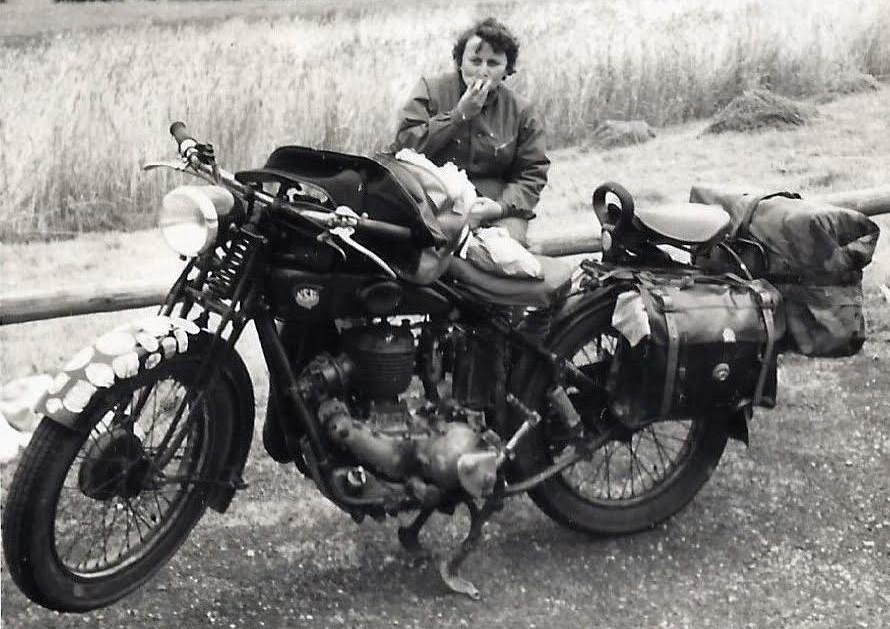
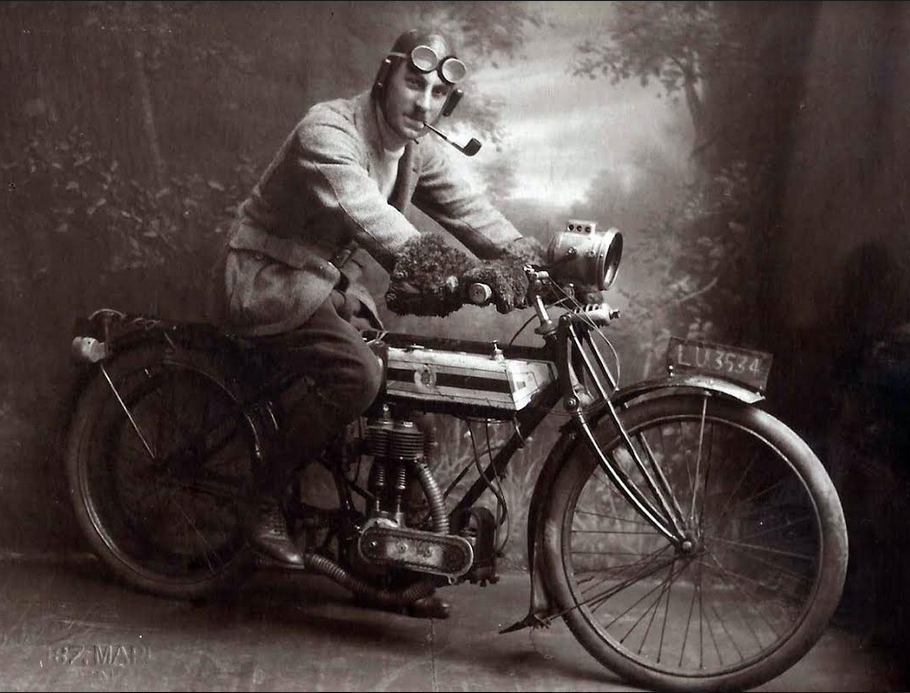
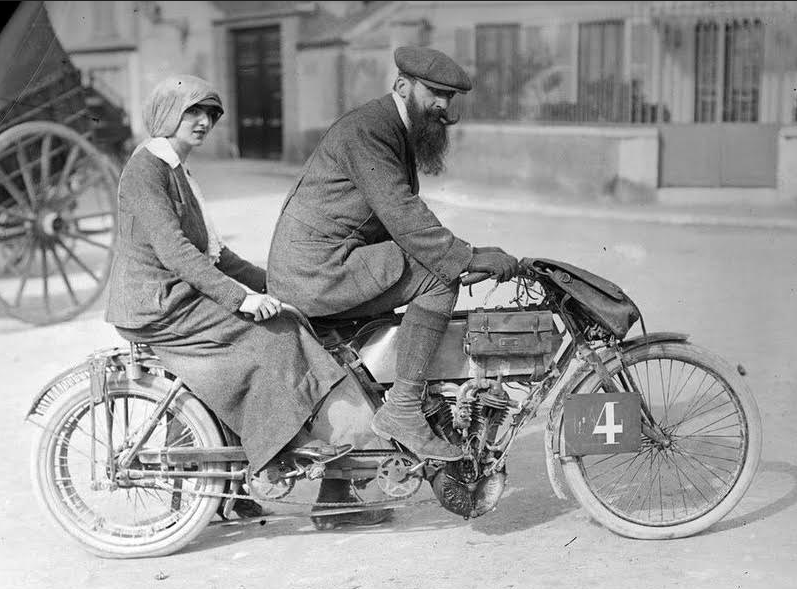
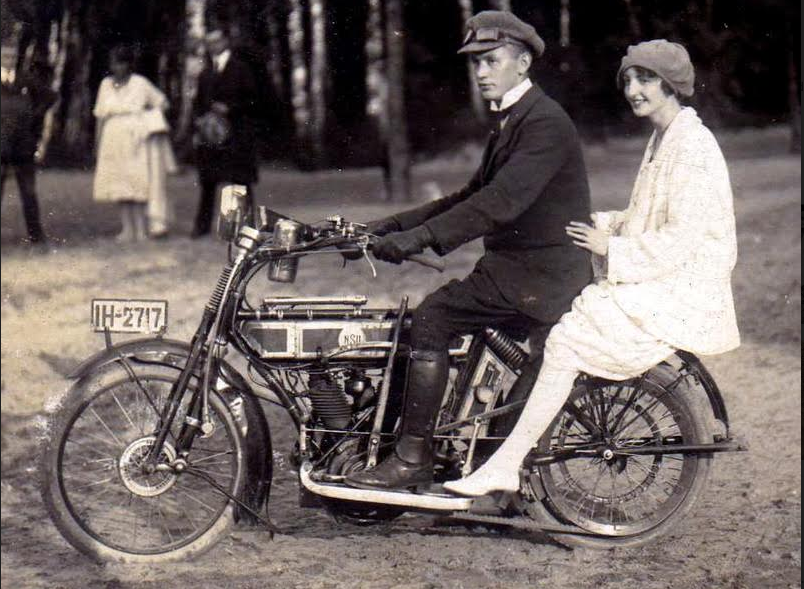
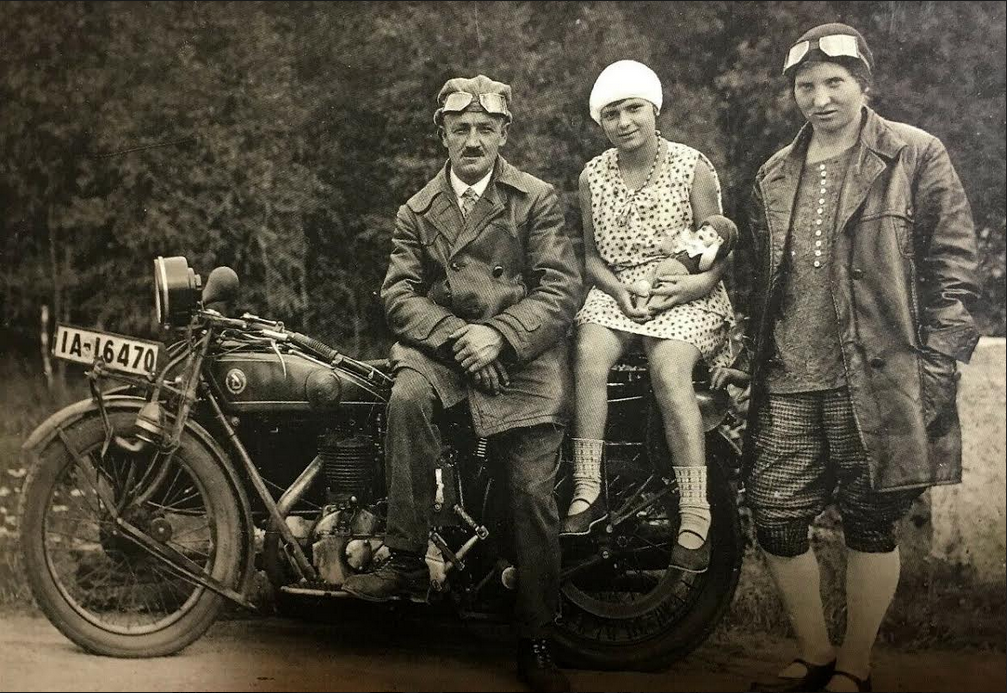
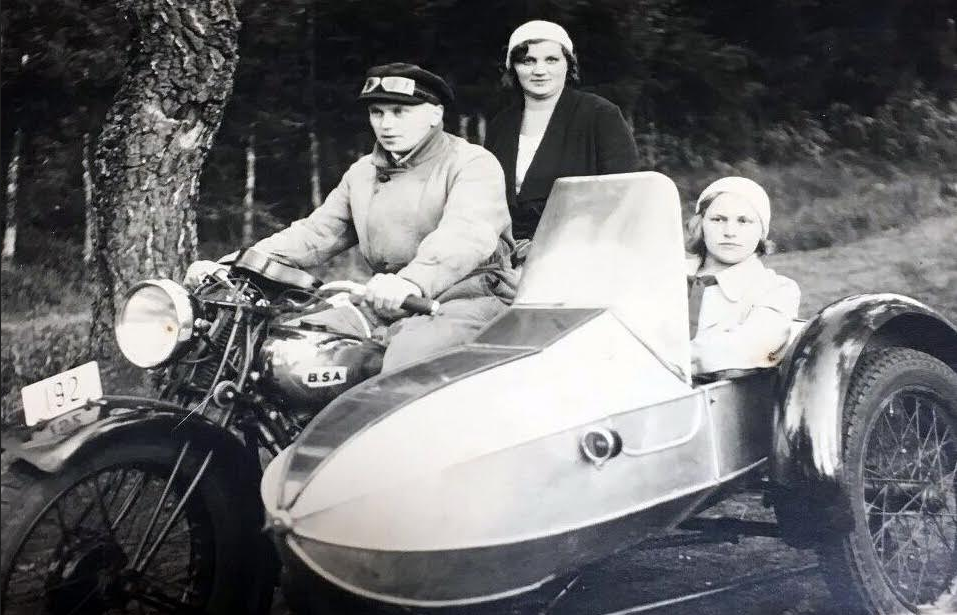


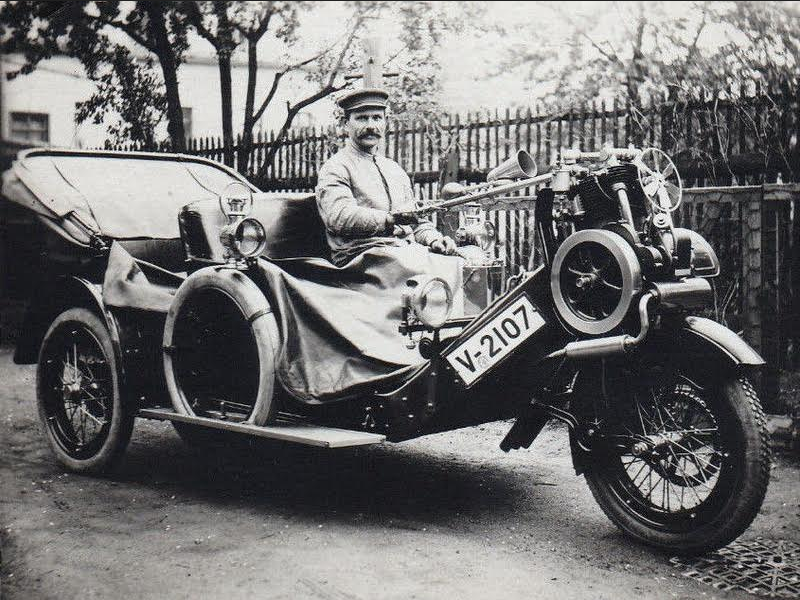

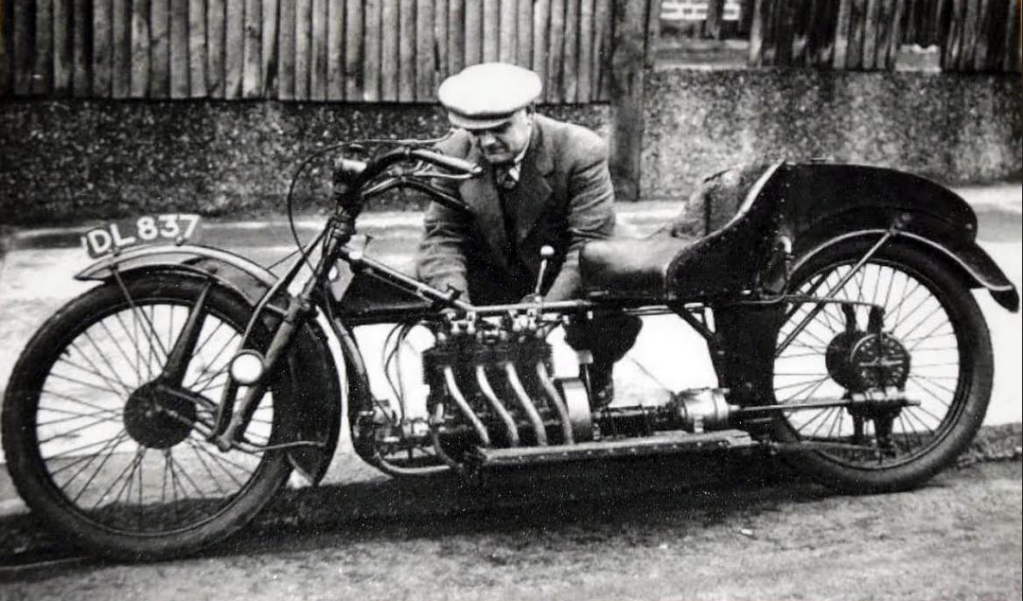

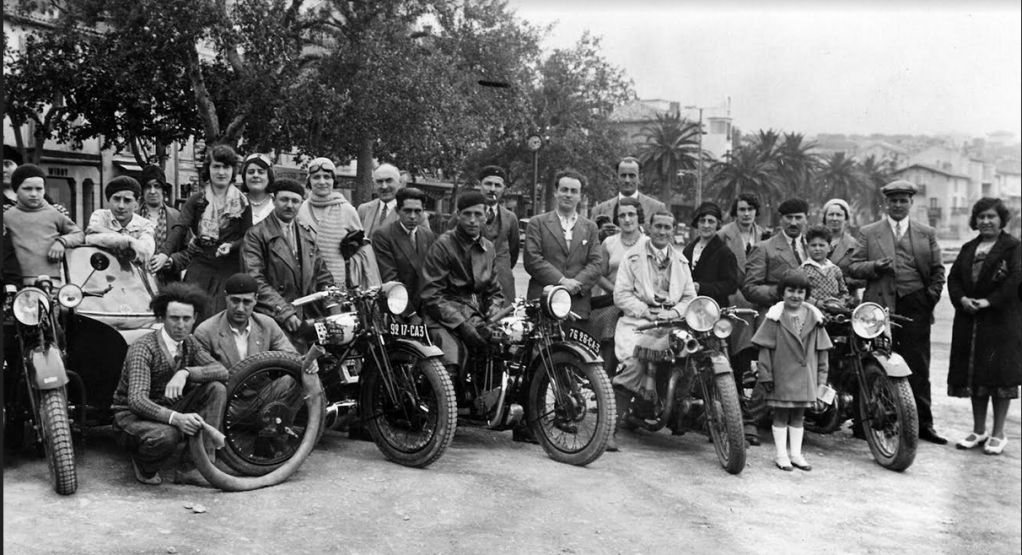
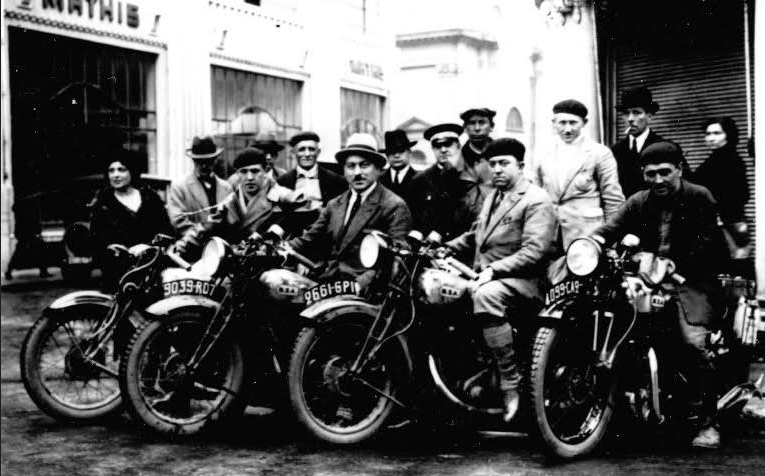
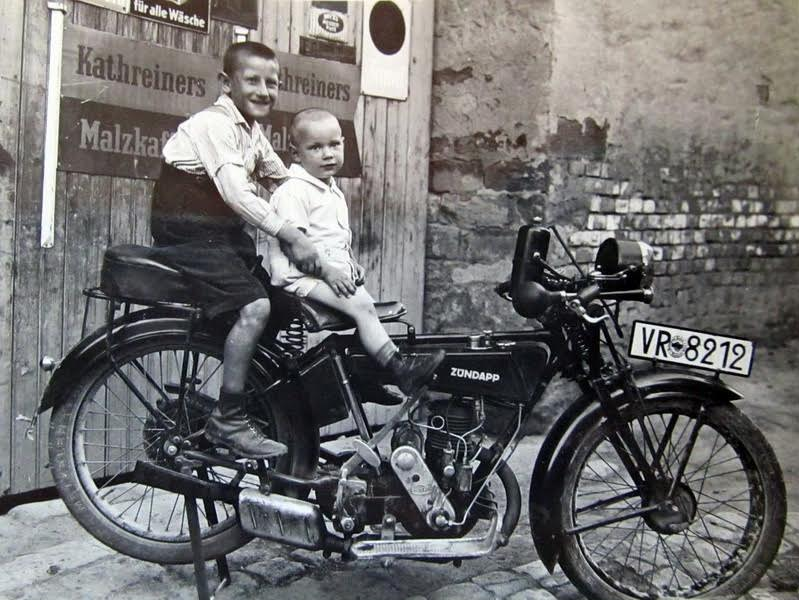
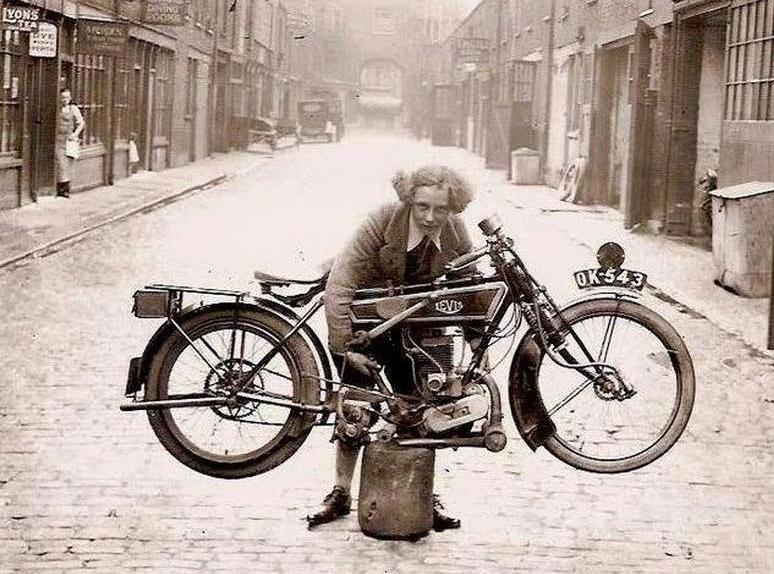
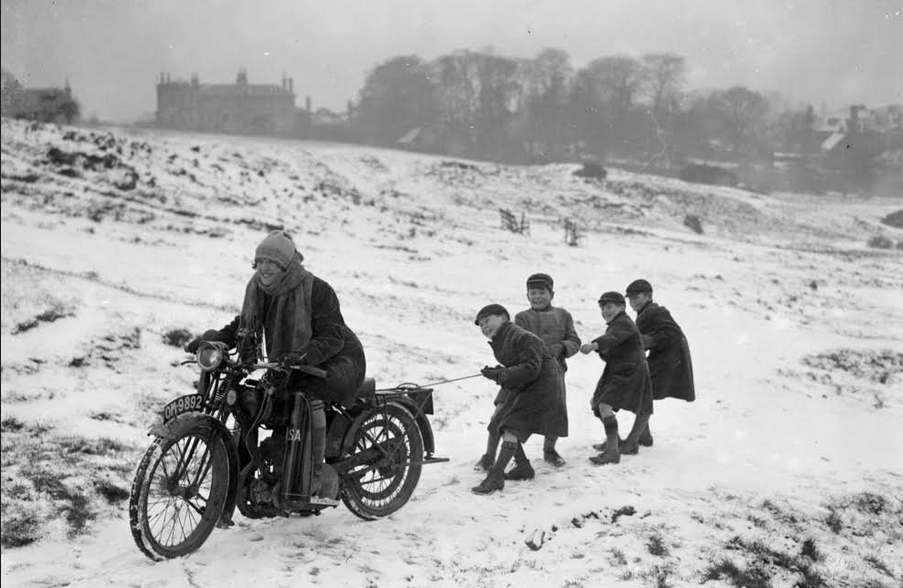
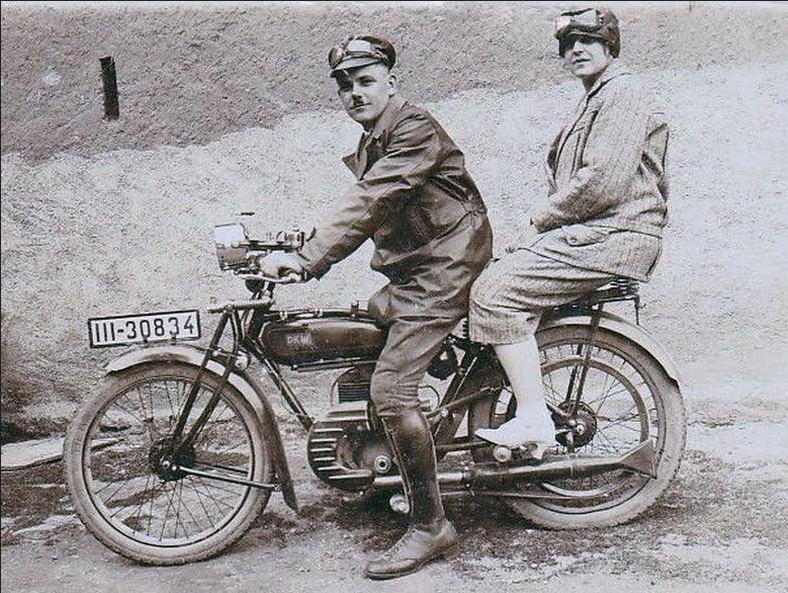
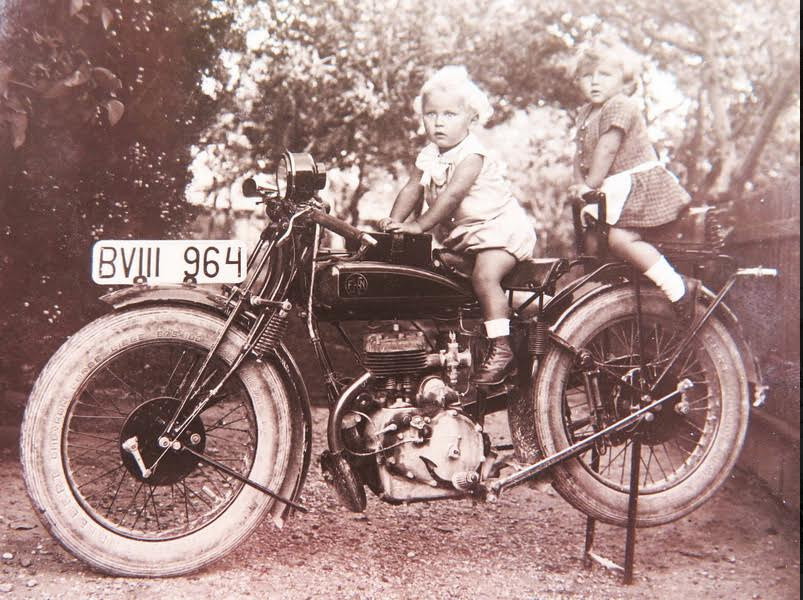
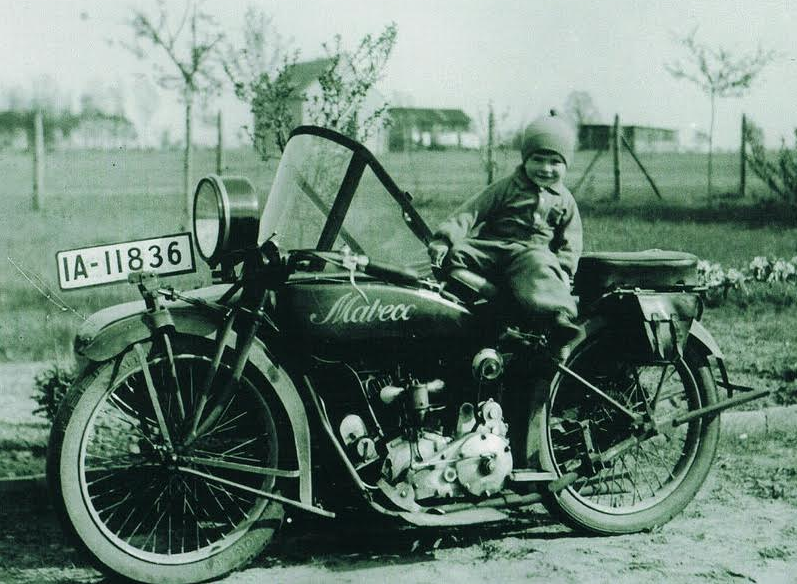
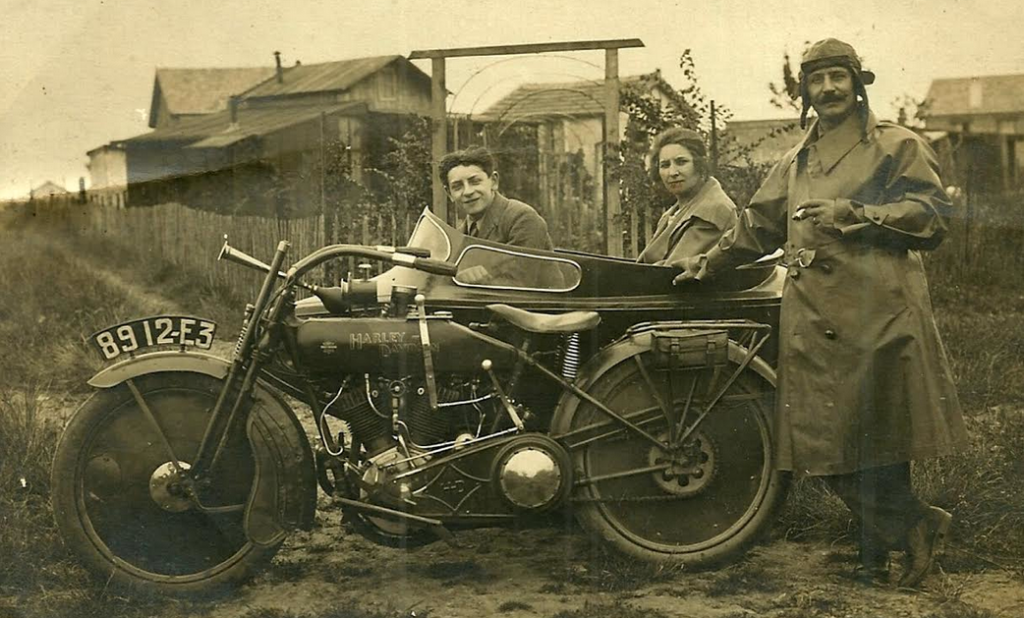
Memories of Yesteryear. Part 2: Speed racers of the late 19th and early 20th centuries
FROM THE VERY BEGINNING, the pioneers of motorcycling used their machines simply to enable them to move from one place to another, but on unreliable machines and unmade racks that passed for roads, this proved extremely difficult at times. Imagine riding at the end of the 19th century on mechanical monsters comprised of a simple frame, rudimentary engine, small tank and a primitive saddle; all with pretty non-existent brakes, and then launching yourself at full speed down roads with no smooth tarmac and no road signs!
The motorcycle owes much of its early development to WW1, when the motorbike became an indispensable military transport vehicle. Later at the end of the 1960s and early 1970s it became the symbol of freedom we acknowledge today, but the motorcycle has also benefited throughout its history from competitions which fostered innovation in design and performance. I have set out below a brief history of motorcycle competitions from the very first participation of motorcyclists in a race in Italy in 1895 to the first World Motorcycle Championship in Belgium in 1905.
1895
May 18, 1895 sees the very first record of motorcyclists in a race. Indeed, two motorcycles and three cars participated in the Italian race Turin-Asti-Turin. The following month, from June 11 to 13, two motorised two-wheelers were on the starting line of the Paris-Bordeaux-Paris race, but neither of them reached the finish. Paul Millet fell during his outward journey to Orléans and Georges Osmont had to retire in Angouleme on the return leg.
1896
The following year, in May 1896, a certain M Lotz on a Hildebrand & Wolfmüller machine finished the first stage of the Bordeaux-Agen-Bordeaux in last position and subsequently retired. On September 20, 1896, eight riders competed in the Paris-Mantes-Paris.
1897
From the year in which the word ‘motorcycle’ was coined by the Werner brothers, things got better for French riders. In the first Critérium des Motocycles, organised on April 4, 1897, Léonce Girardot and Gaston Rivierre finished in 4th position on a two-seater, two-wheeler of unknown brand and on June 20, 1897, in the first Coupe des Motocycles, run between Saint-Germain and Ecquevilly, Gans de Fabrice managed to ride his two-wheeler Wolfmüller to second place among the competing cars. The inauguration of the Stade-Vélodrome in the Parc des Princes in Paris on July 18, 1897 was the perfect occasion for motorcycle; races. Gaston Rivierre on a De Dion-Bouton motor bicycle won the first series and posted the best time of the day at 40.8km/h. That same year, the very first motor bicycle’ race between two riders, also on De Dions, took place in England at Sheen House.
1899
For the first time a competition was exclusively open to two-wheelers. The Critérium des Motocyclettes ran from Etampes to Chartres over a distance of 100km with Eugène Labitte winning on a Pernoo. From July 16-24 the first meeting of the Tour de France Automobile was held, with 19 cars and 25 motorcycles starting a course of seven stages over 2,216km.
1901
In the summer George M. Holey, one of the few American pioneers, built his first single-cylinder IOE, (inlet-over-exhaust), winning the first motorcycles-only race in the US: the Boston-New York.
1903
The story of city-to-city racing ended tragically in May due to eight fatal accidents in the Paris-Madrid. A new form of racing then appeared, but this time in a velodrome. These events were held most of the time at the Parc des Princes and at the Vélodrome d’Hiver. The two great champions of the age were Alessandro Anzani and Marius Thé.
1904
On September 25 the newly formed Motocycle-Club of France (MCM) organised the very first international motorcycle race: the International Cup. It ran over 268km, with the French team competing against four others: Germany (DMV), Austria (ÖAC), Great-Britain (ACC) and Denmark. The resulting French victory gave the host the right to organise the race again in 1905. Following this event, delegations from the five countries taking part met on December 21 at the famous Ledoyen restaurant in Paris to create the International Federation of Motorcycle Clubs (FICM), the ancestor of the current FIM.
1905
September brought the first World Motorcycle Championship organised inside the Zurenborg velodrome near Antwerp, in Belgium. Alessandro Anzani, won the race on an Alcyon equipped with a 330cc Buchet single-cylinder engine he developed himself, thus becoming the first world champion in the history of motorcycling. Born in Italy, Anzani moved to France in 1900 and became the most important engine manufacturer of the time.
I guess these great old timers, racing over a hundred years ago, must have possessed enormous courage and daring, to be able to challenge their competitors on such unpredictable machines, in the most crazy of events. Take a good look at them on the images below, testaments to the outfits of the day with their handlebar moustaches and daredevil appearance. The real men of yesteryear who knew no fear. I have only one word to say about them: Respect!
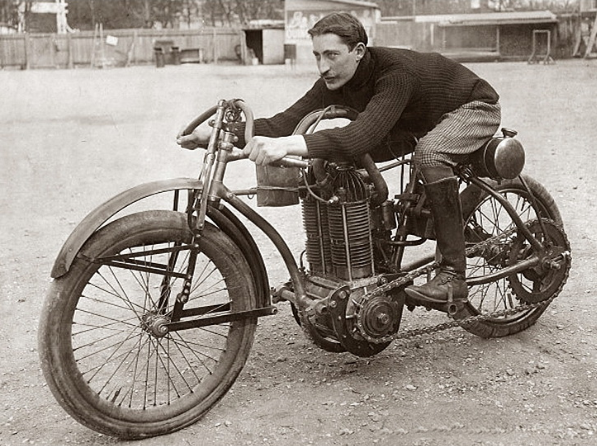
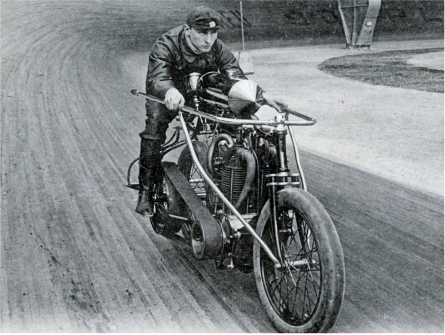
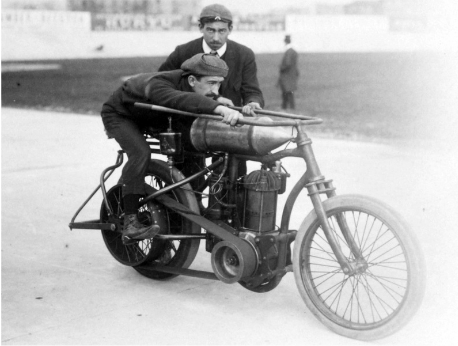
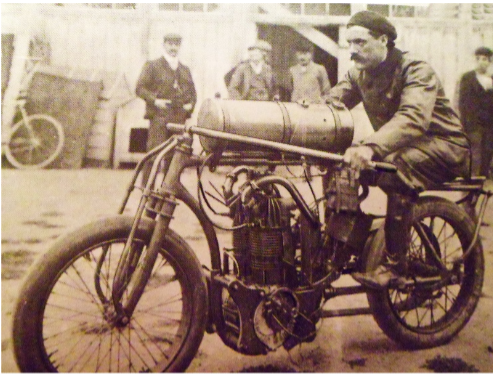
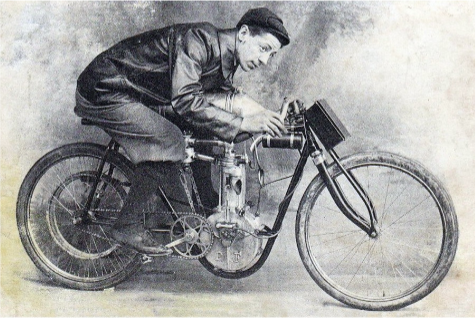
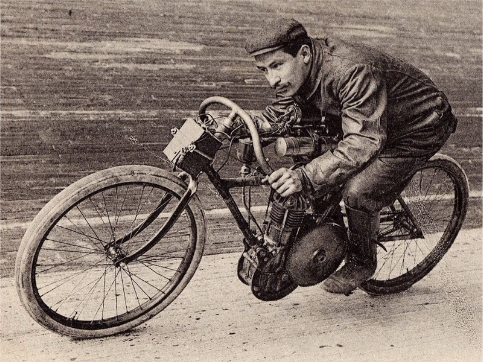
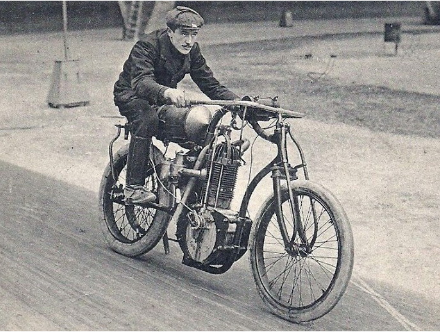

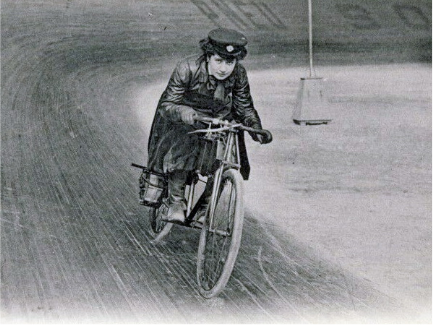
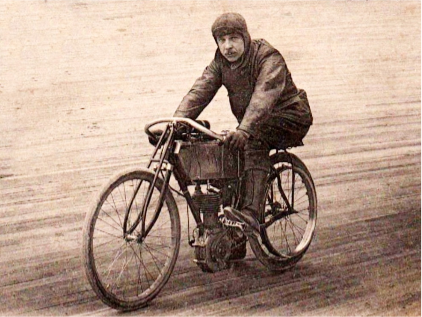
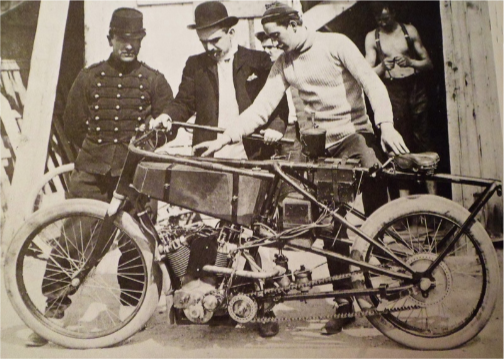

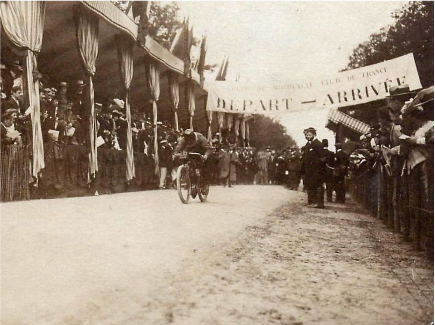
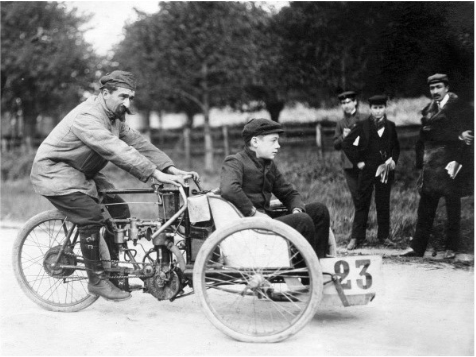
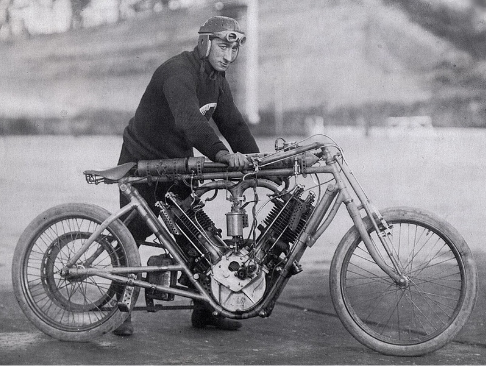
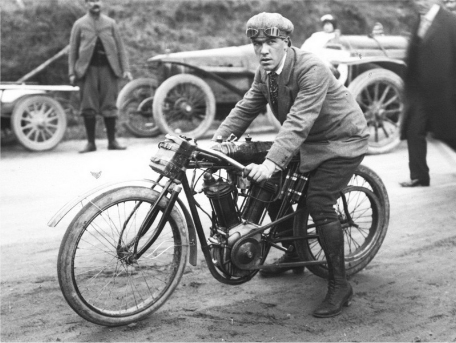
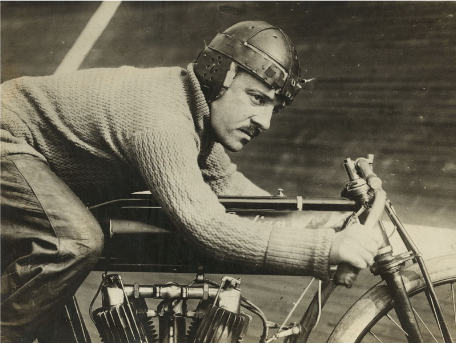
Memories of Yesteryear. Part 3: 1914-1918—The Great War in the saddle
IT WAS DURING THE FIRST WORLD WAR that the military motorcycle made its debut, although it had also appeared with the forces of Pancho Villa in the earlier Mexican Revolution. Pancho Villa discovered that the big Indian motorcycles were ideal for his raiding parties, realising that motorcycles offered the speed and agility ideal for hit-and-run raids. The Great War set the tone for the mechanisation of war and the motorcycle proved to be a very viable replacement for the horse, with the military making extensive use of this new method of transport and communication. Technological breakthroughs are often driven by necessity during war and the Great War was no exception. The increased need for motorised transport unsurprisingly directly influenced motorbike production, greatly accelerating their evolution. These were bikes built out of, and during a crisis—bikes designed for rugged applications. It’s no coincidence that many early motorcycle manufacturers were also manufacturers of guns and armaments. Detailed below is a photographic record of some of those military machines of yesteryear.
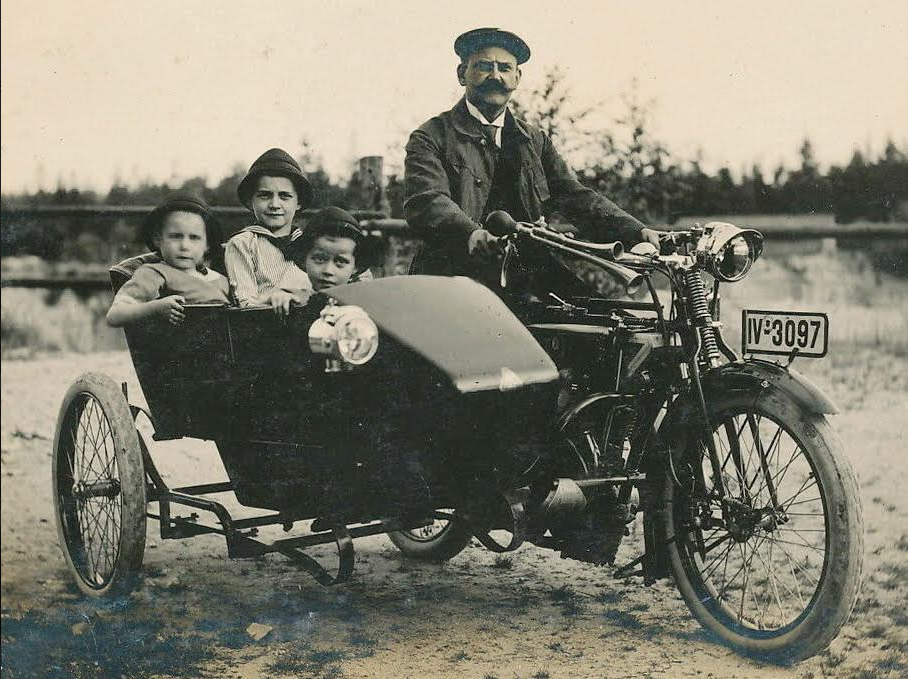
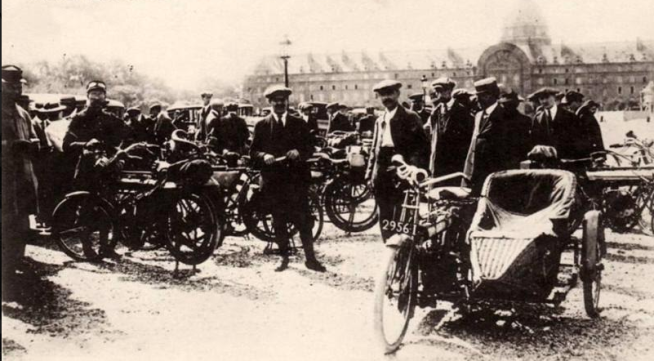
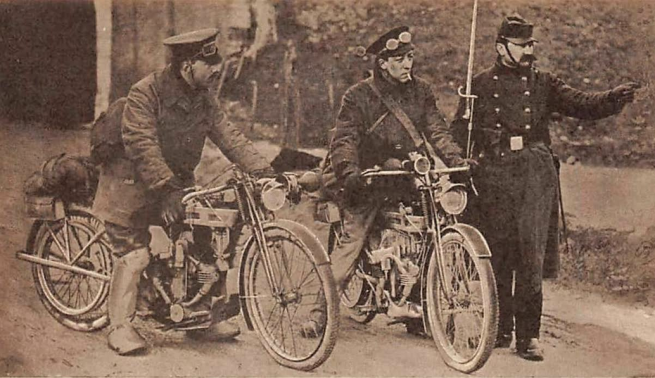

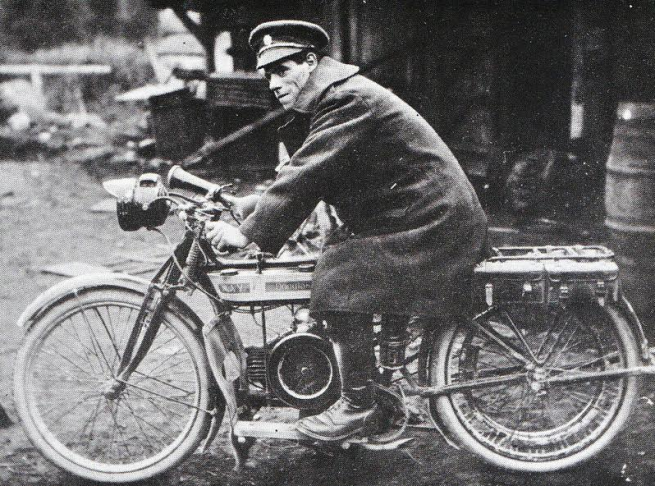
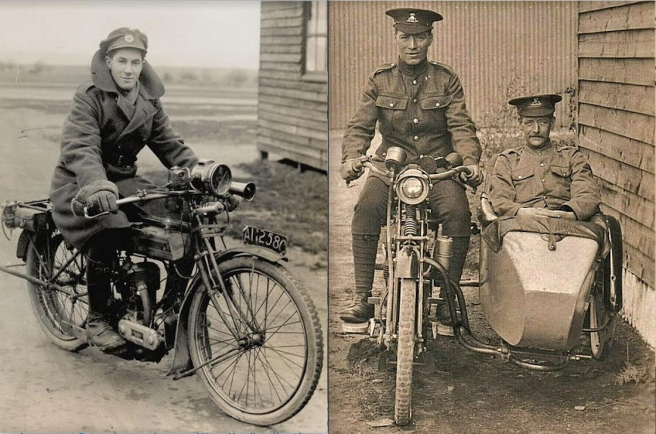
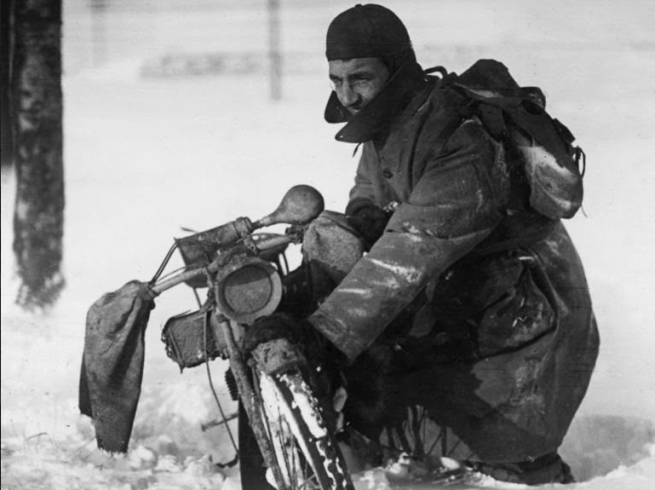
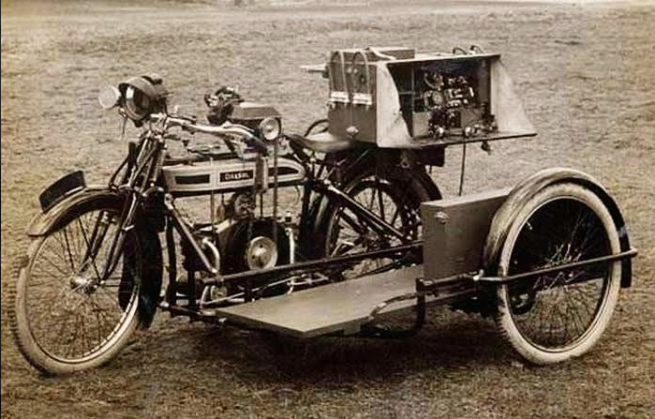
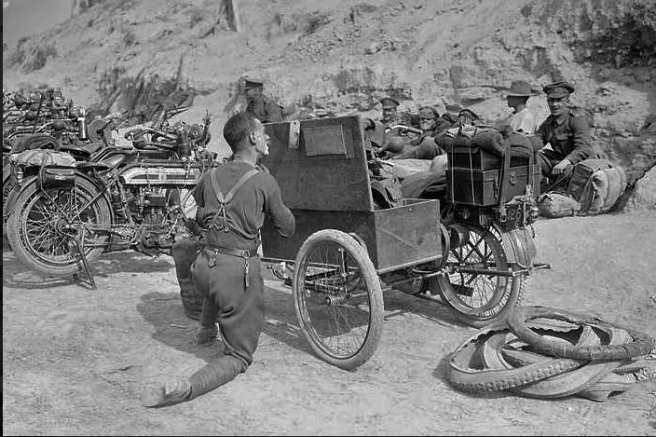
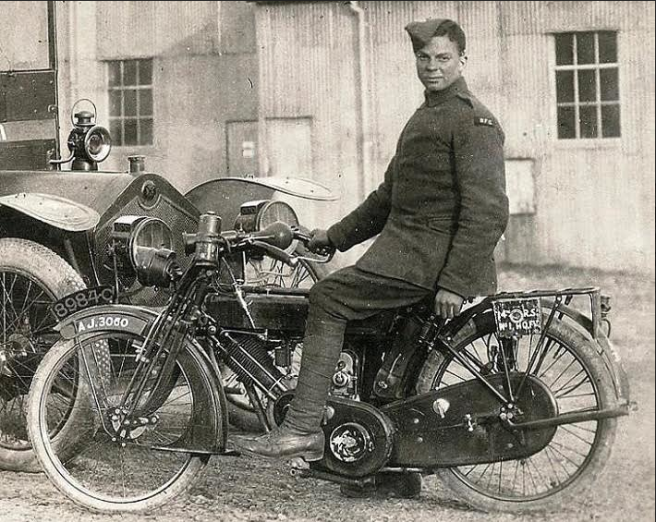
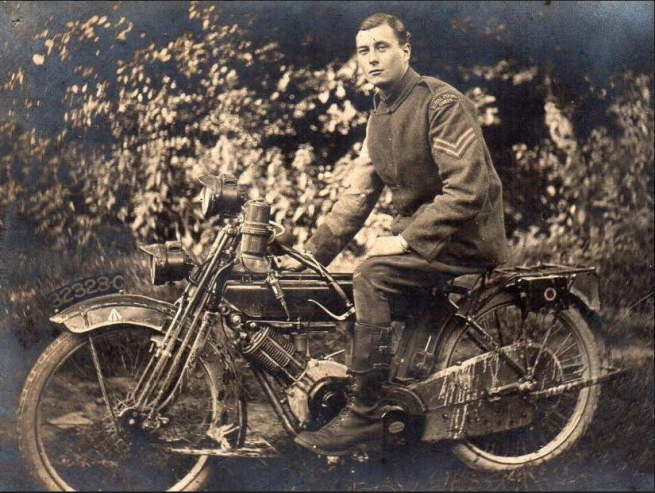
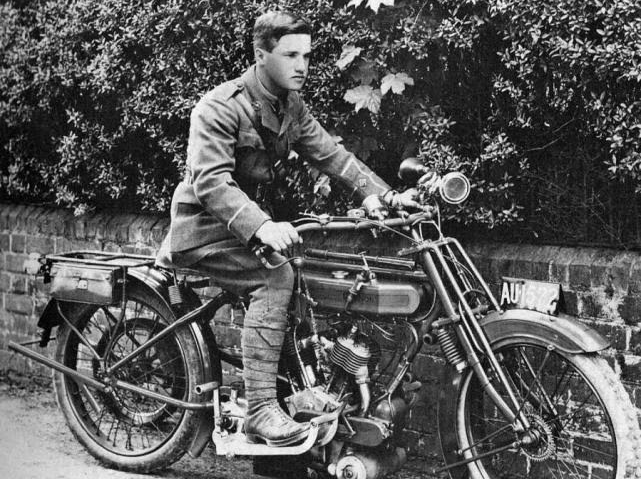
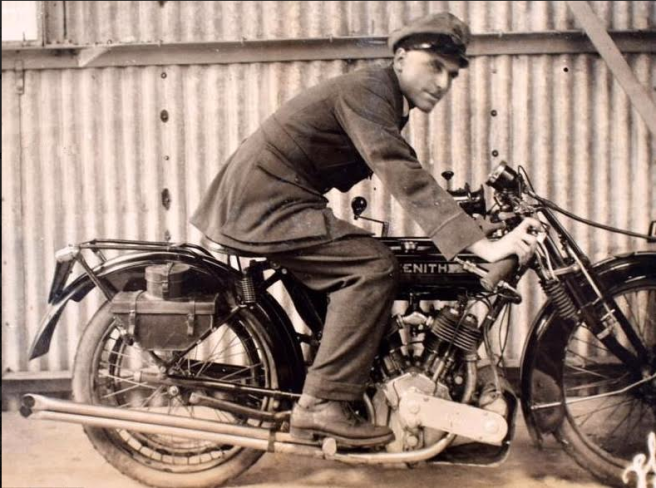
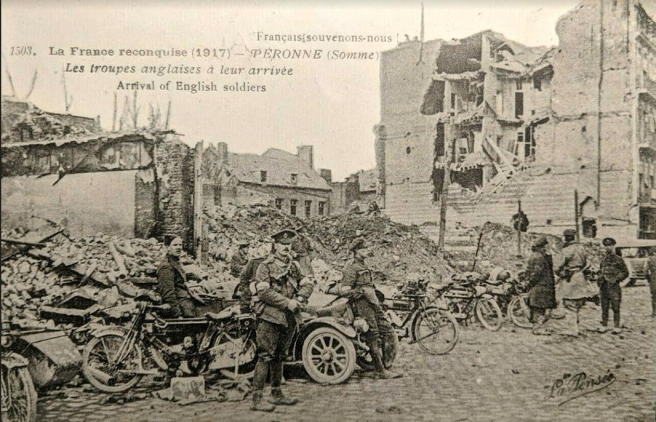
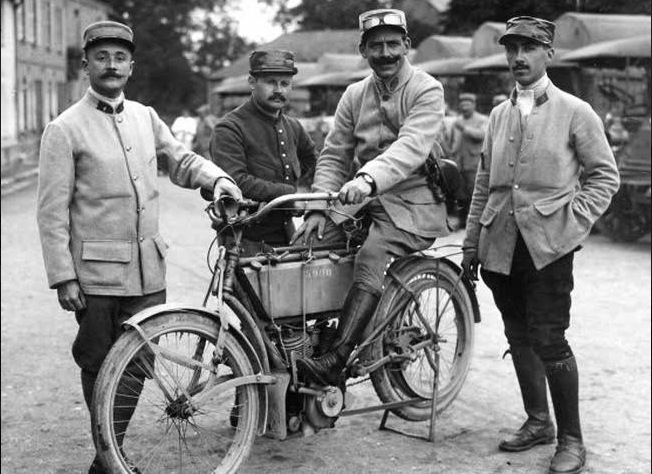
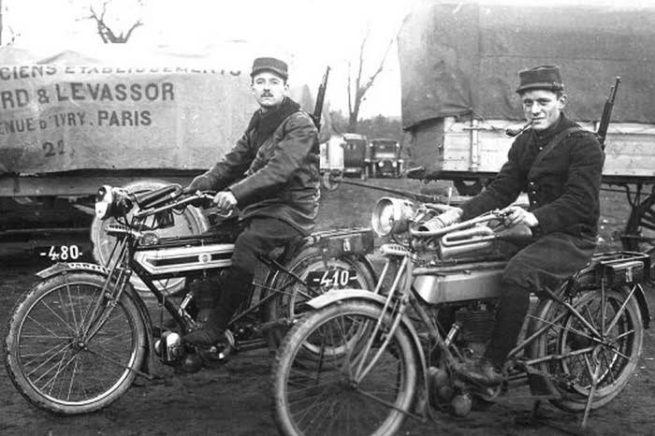
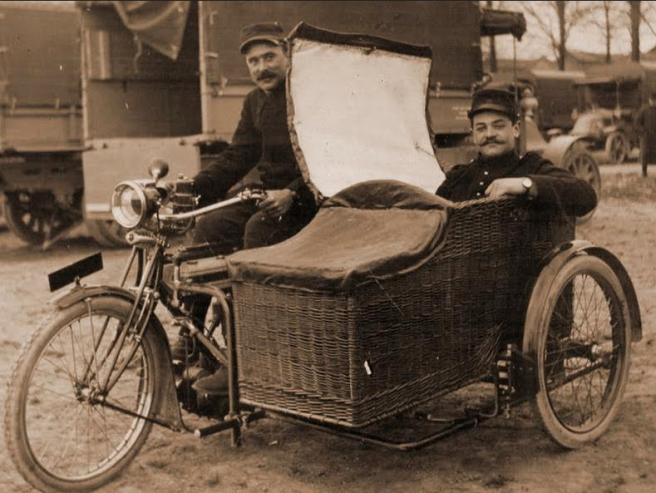

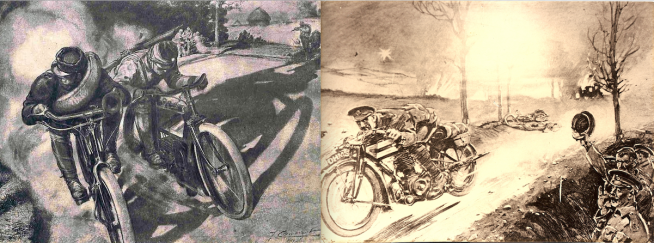
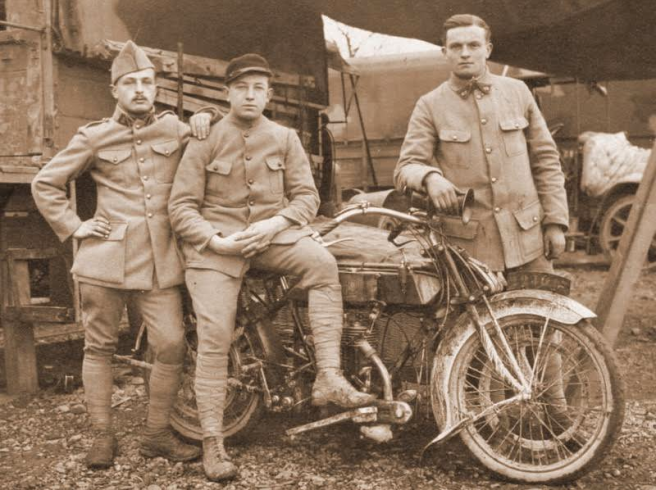
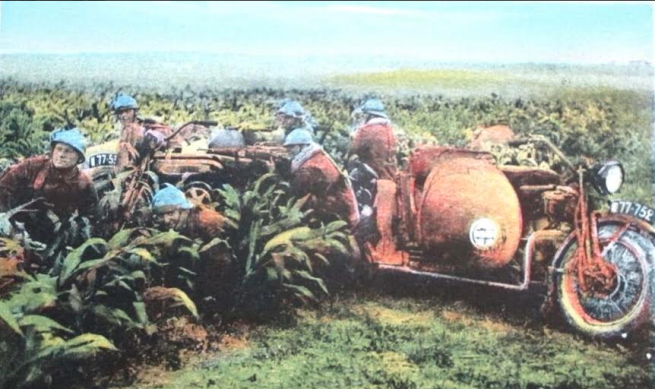

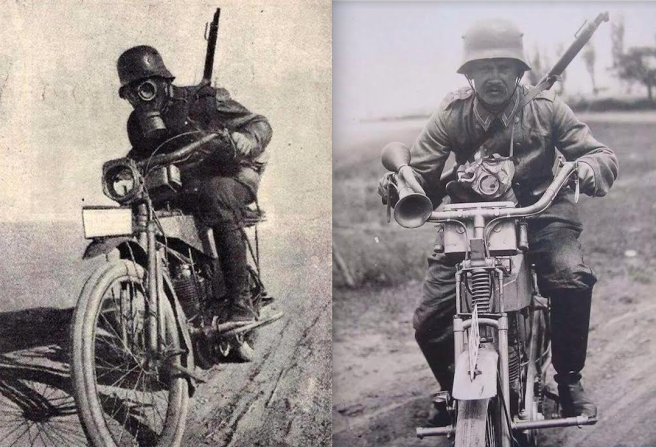
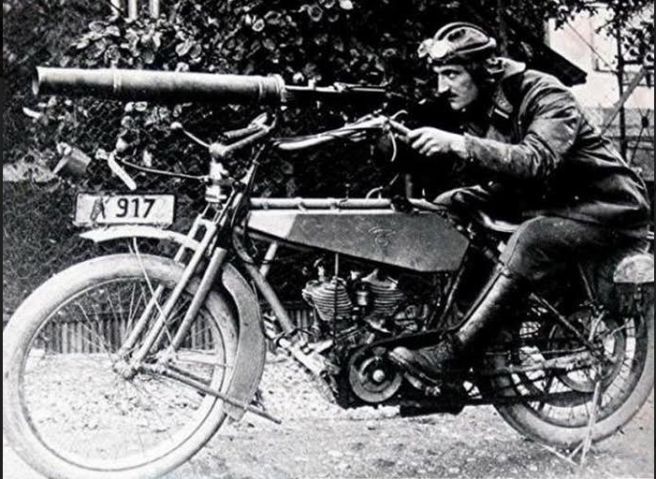
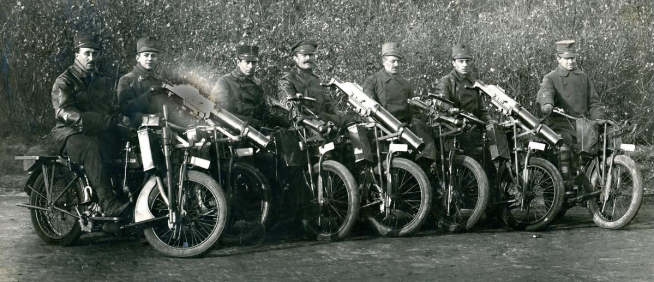
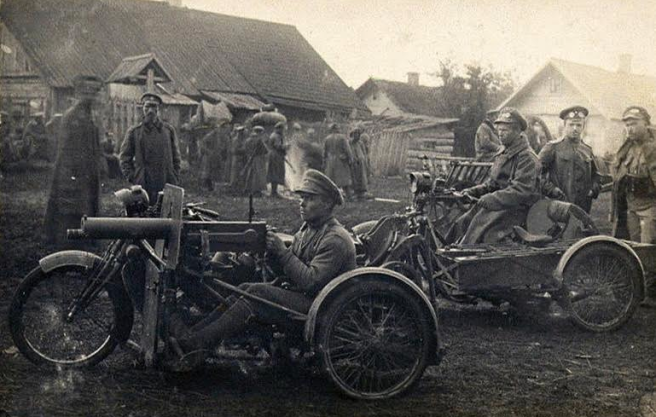

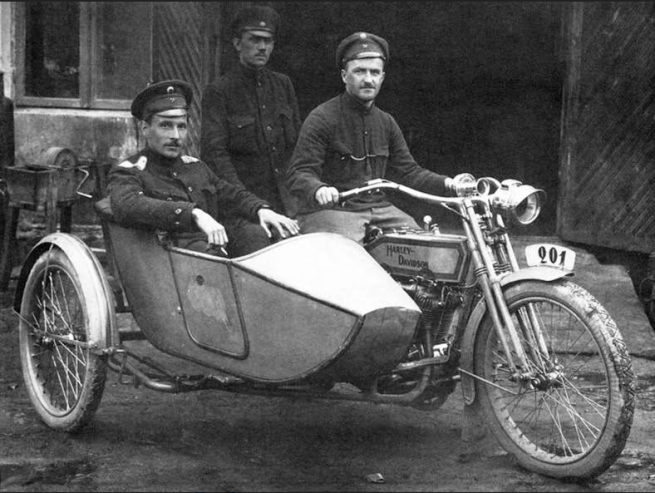
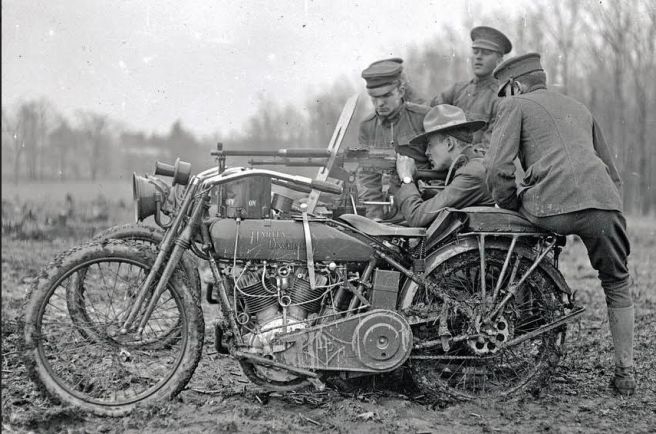
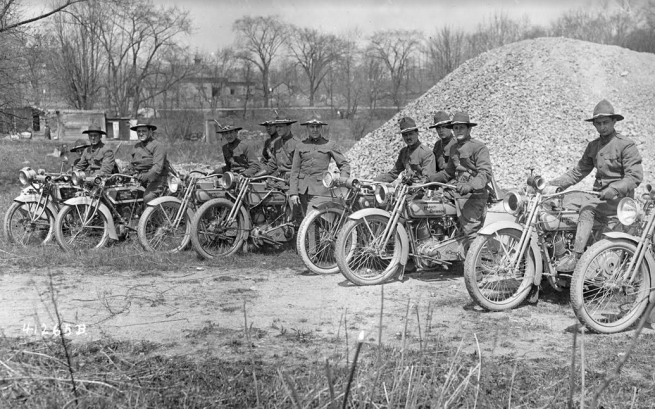
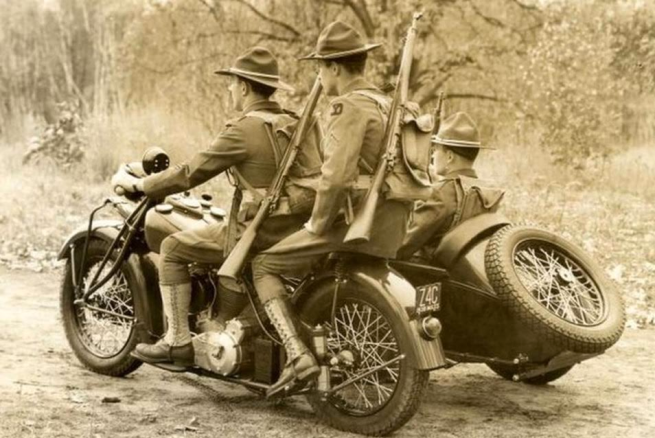
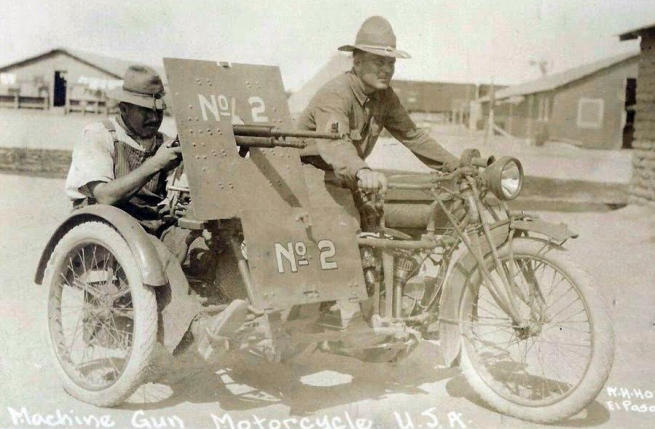

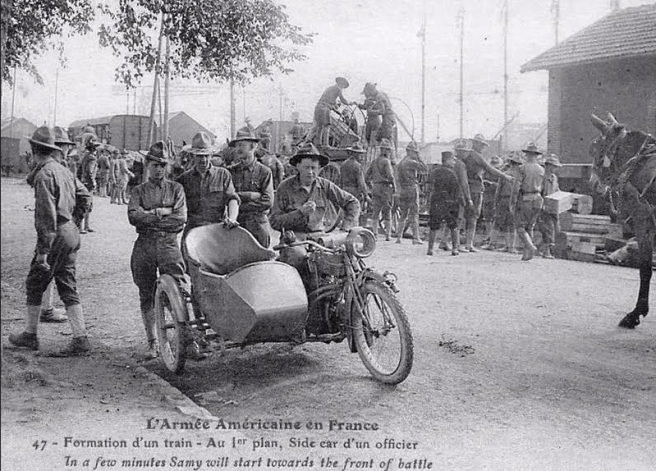
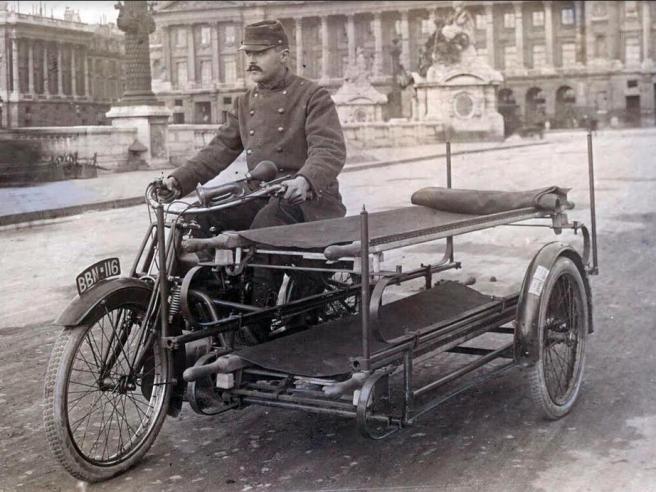
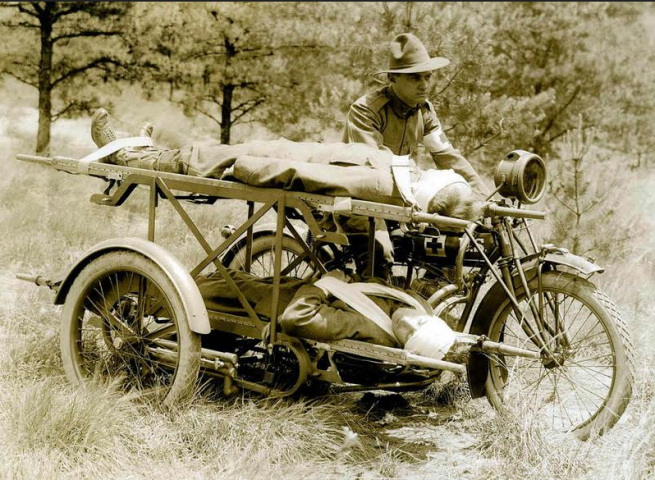
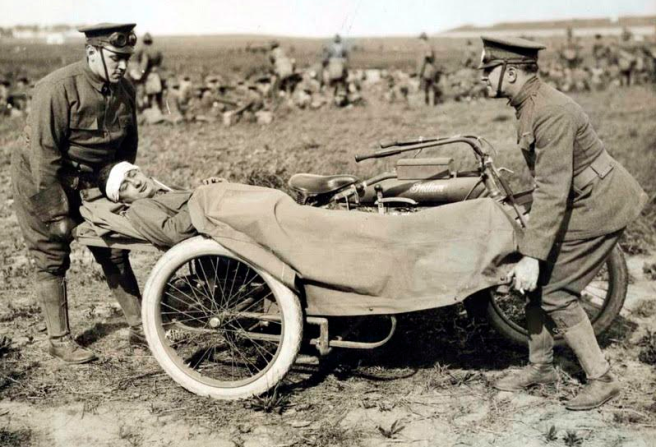
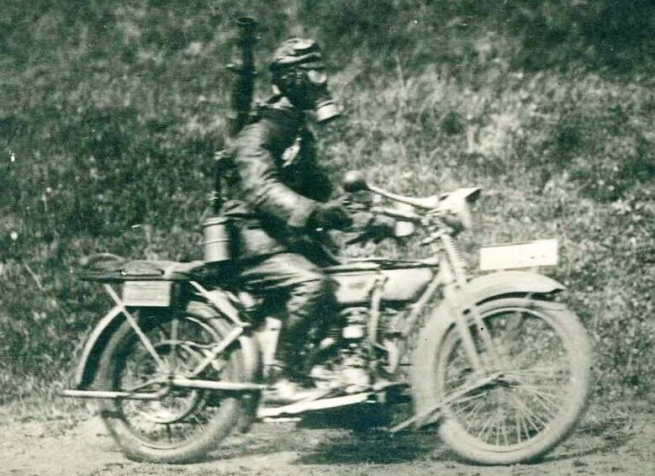
Francois has also sent me a good selection of uncaptioned pics from the Great War; these, with a number that I’ve accumulated, can be found in the Illustrative Melange. And, of course, there are plenty of stories and images from the war in the main Timeline—Ed.
Memories of Yesteryear. Part 4: 1920-1925—The post Great War era
LIKE IT OR NOT, THERE IS NOTHING LIKE WAR, however unfair and murderous, to advance technology. This is unfortunately as true today as it was 100 years ago in terms of the motorcycle evolution after the Great War. The war revealed the usefulness of motorcycles, recognising them as practical and relatively reliable.This, together with the increasing popularity of competition motorcycling in the early 1920s, thanks to further improvements in Reliability and handling, led to more advances on the technical front. I would love to go into greater documented detail on this extremely interesting period, but the aim of this article is to present a more visual record, which I hope you will agree is more interesting than straightforward facts and figures; allowing me to share a greater number of photos in the limited space available. In a nutshell, lets summarise a few highlights from the 1920s: George Brough, the second son of motorcycle pioneer William Edward Brough, set up his own factory in Nottingham in 1919 to produce what he called the Brough Superior range of motorcycles and motor cars. He brought together the best components he could find and added distinctive styling details and in 1922, he rode a Brough Superior SS9-Brough Superior SS80 managing an unofficial 100mph (160km/h) lap. The industrial production of motorcycles was dominated by England, but by 1920, Harley-Davidson became the largest manufacturer worldwide with their motorcycles being sold through dealers in 67 countries. DKW in Germany took over as the largest manufacturer in the late 1920s. BMW motorcycles came on the scene in 1923 with a shaft drive and an opposed-twin. As motorcycles got faster, the need for protective clothing grew, and many bikers turned to the thick leather horsehide of World War I era of military overcoats. In 1928, Irving Schott, a jacket maker in New York City, created the first leather jacket specifically for motorcycling, named after his favorite cigar: The Perfecto. Now let me share the photographs I have picked out to illustrate this golden age of motorcycling in Europe in the 1920s…
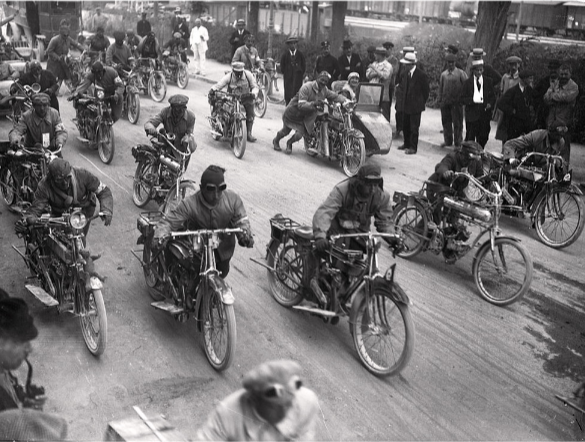
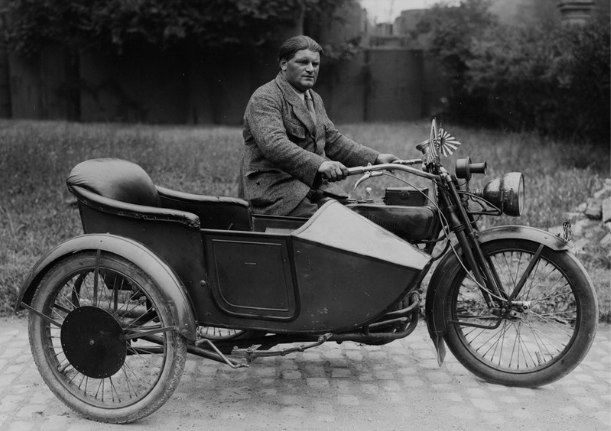
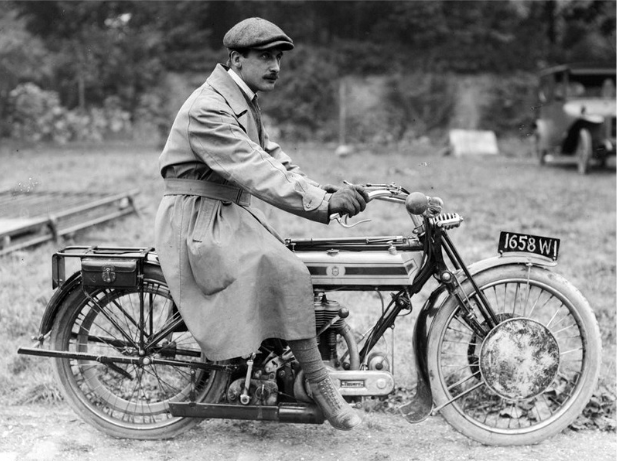
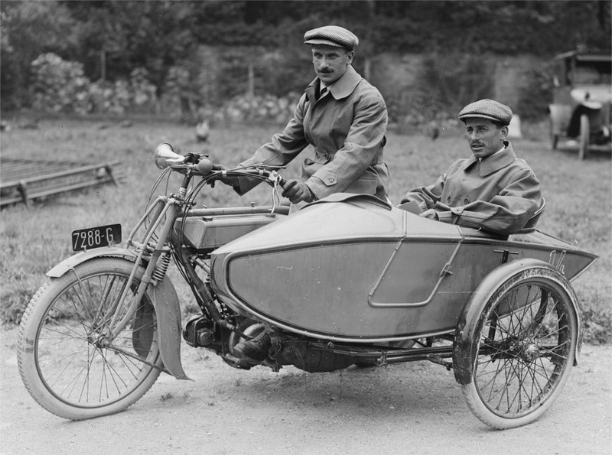

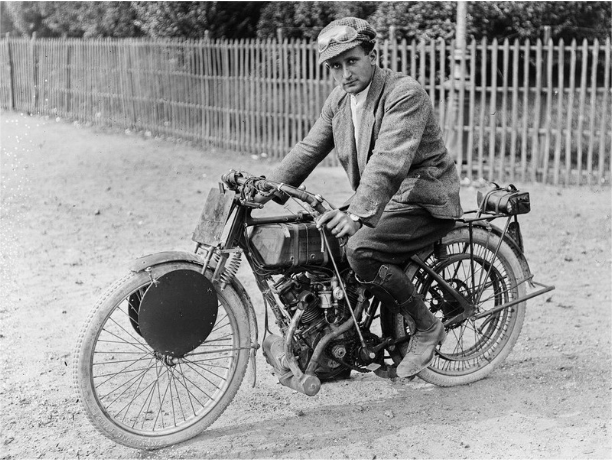
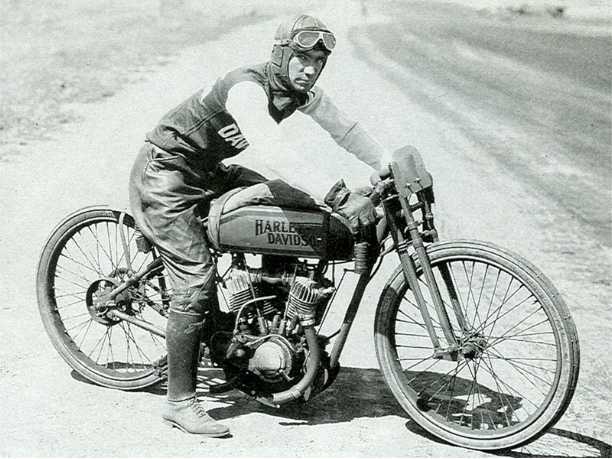
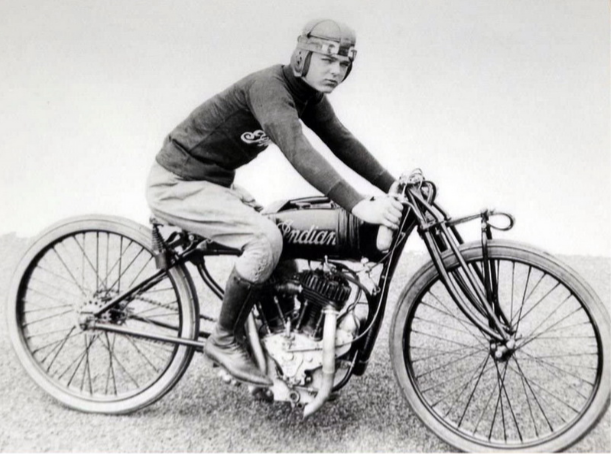

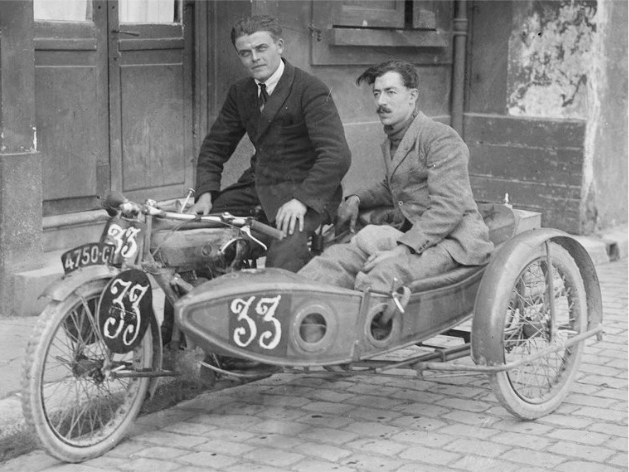
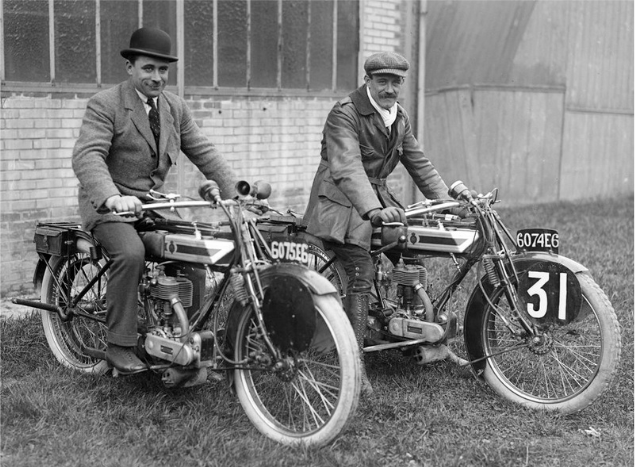
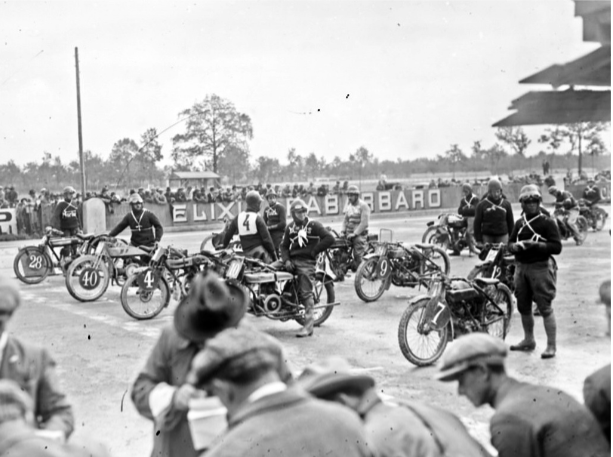

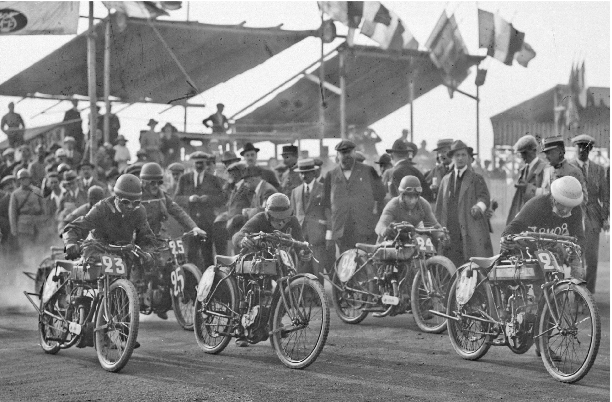
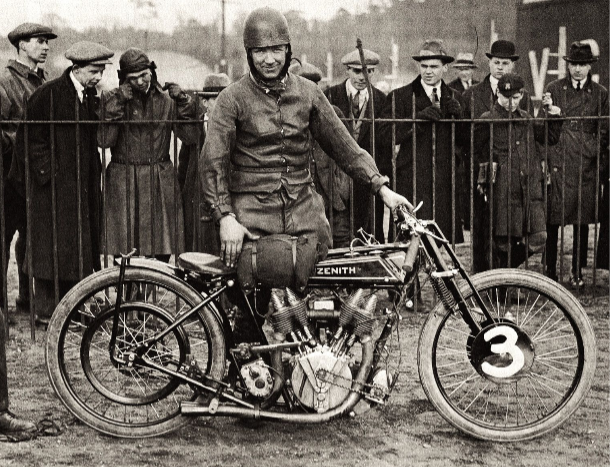
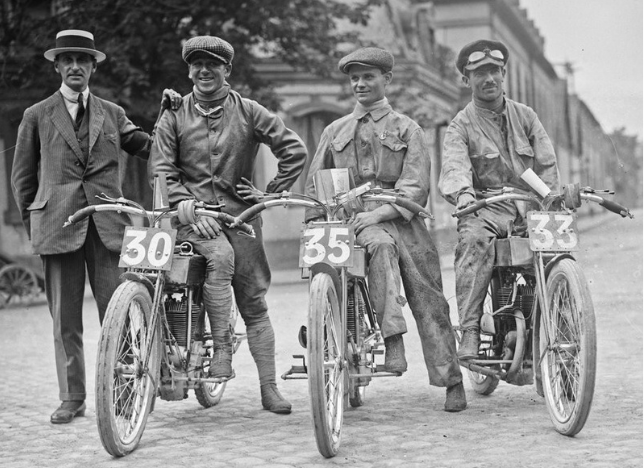
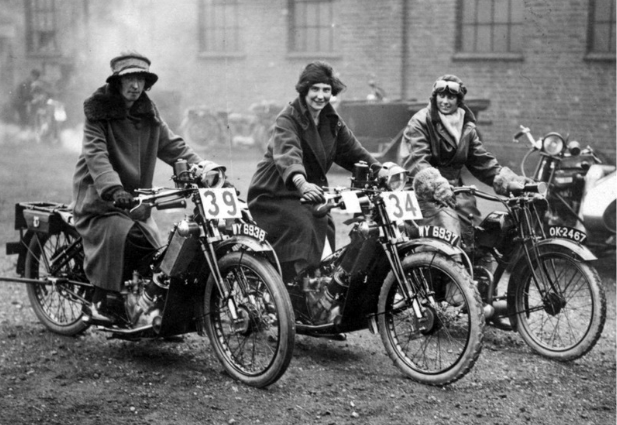
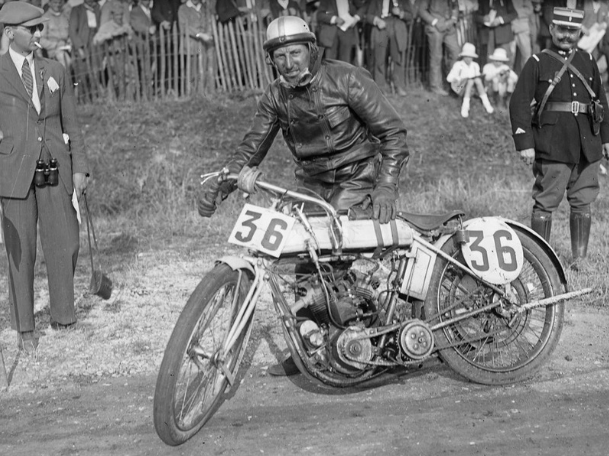
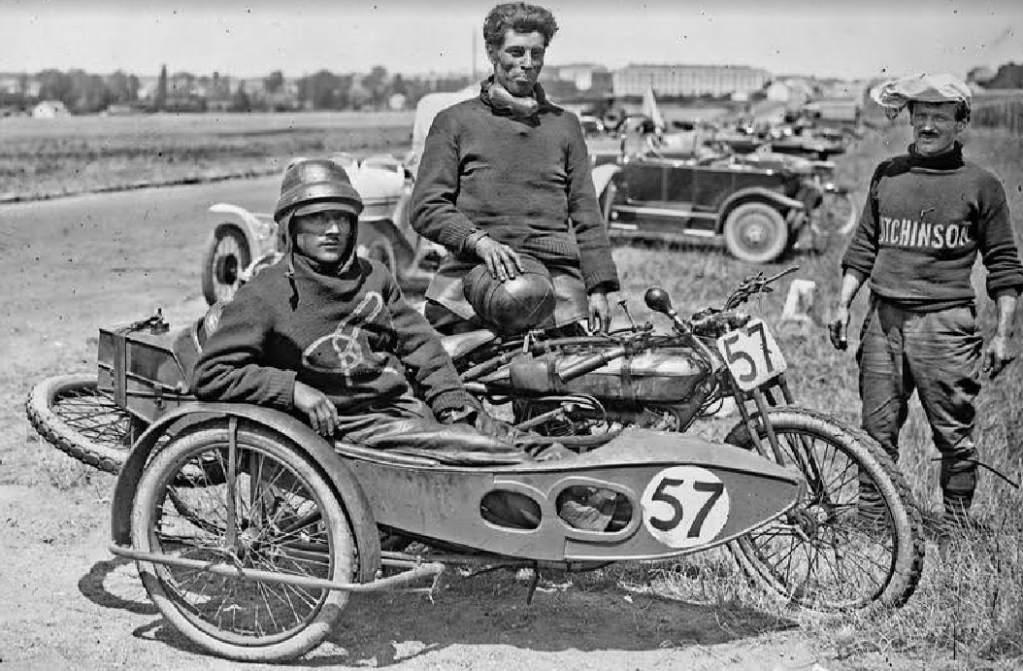
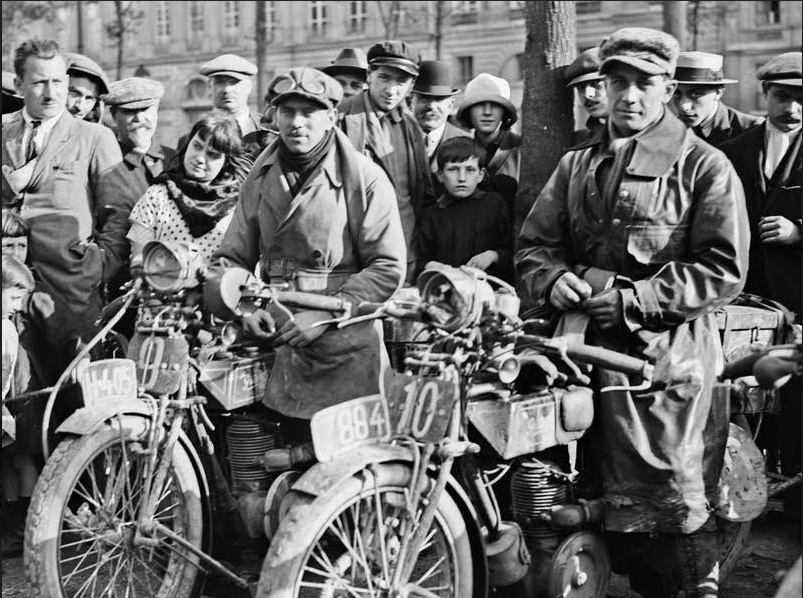
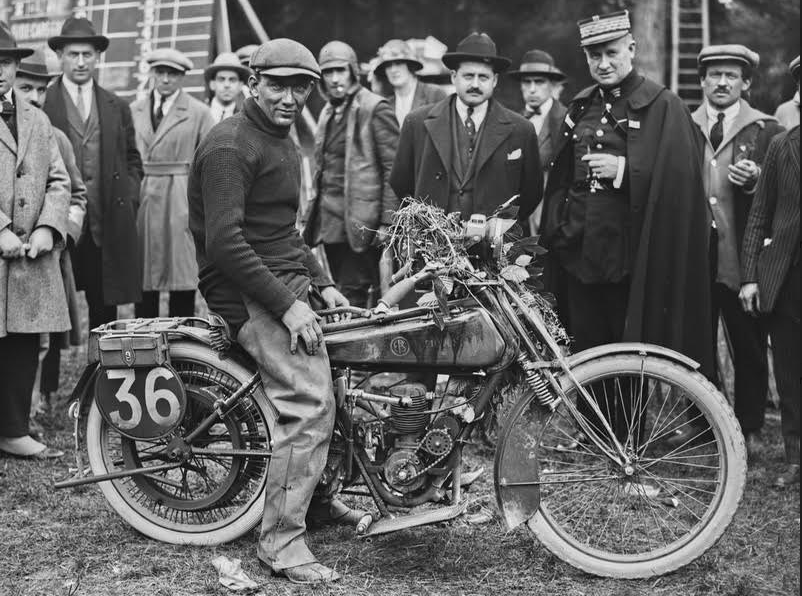


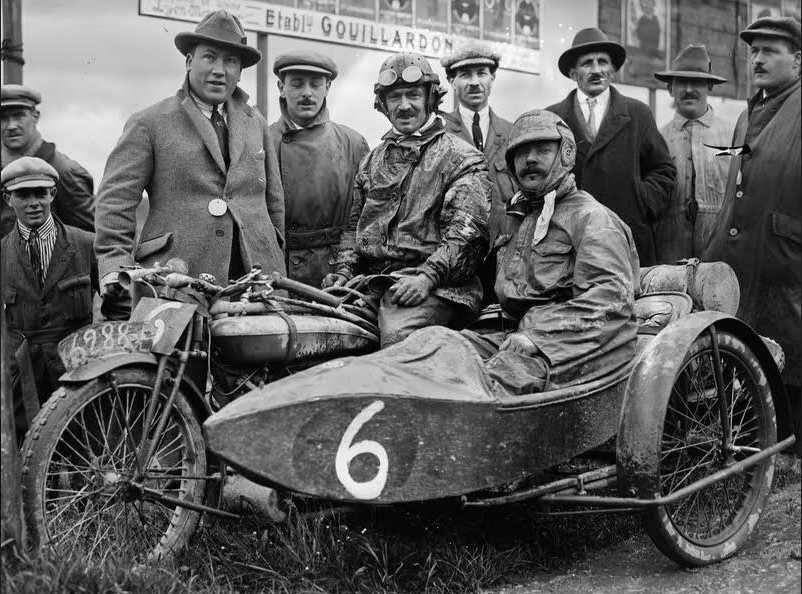
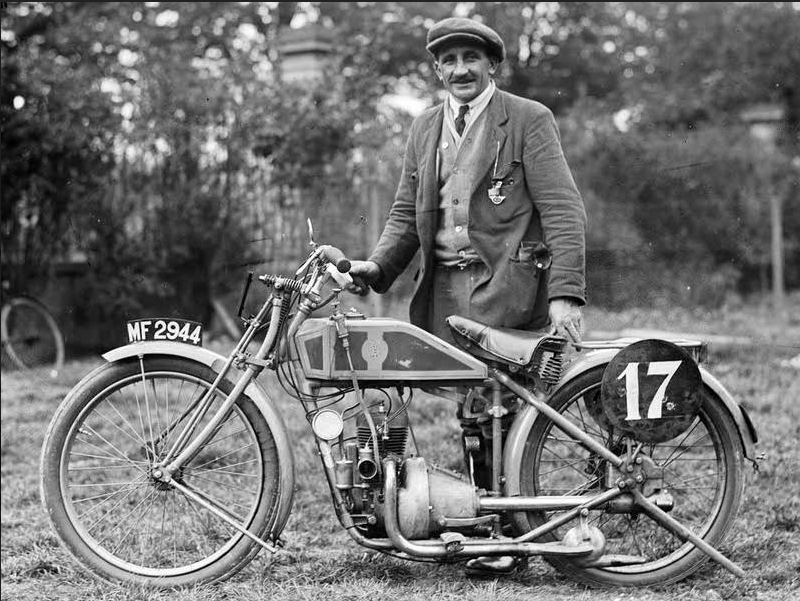
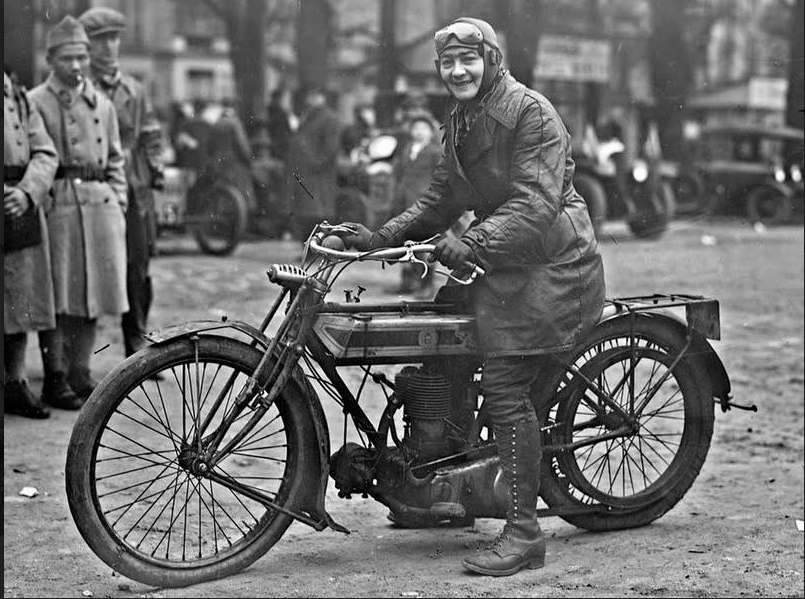

Memories of Yesteryear. Part 5: A flashback to the mid-1920s
AS HISTORY TELLS US, THE PERIOD immediately following the First World War was extremely rich in the rebirth and subsequent development of both international motorcycling as a whole and the machines of the time in particular. Indeed, the pace and scale of development at that time would undoubtedly fill several books on the subject. The sheer abundance of data and documents covering this period threw up something of a dilemma in that I had to restrict my choices and share with you some of the best and most interesting stories and visual nuggets. So, continuing our journey through the memories of motorcycling and its evolution over the decades, here’s a flashback via various photographic testimonies, mainly relating to the mid-1920s…
The American Gypsy Tours
The Federation of American Motorcyclists (FAM) listed 8,247 members in 1915, but with World War I draining potential recruits, the organisation ceased operations in 1919. The AMA (American Motorcyclist Association) was established in 1924 with the slogan ‘An Organised Minority Can Always Defeat a Dis-organised Majority’. The AMA inherited the organisation of the Gypsy Tours, which became the biggest road-riding events of the year. Gypsy Tours were held on a single weekend throughout the country. They featured a ride to a scenic location for a picnic and various motorcycle competition events. There were often races, including hill climbs, races and dirt-track events, along with field meets, involving motorcycle games such as slow races, stake races and plank riding. In 1925 no less than 212 individual Gypsy Tours were held on 20 and 21 June. According to The Motorcycle & Bicycle Illustrated: “The Gypsy Tour idea originated eight or nine years ago, the object being to set a certain date for an outing, where riders, dealers and everyone interested in motorcycles would tour to some convenient spot for a day’s sport and a real old-fashioned good time.”
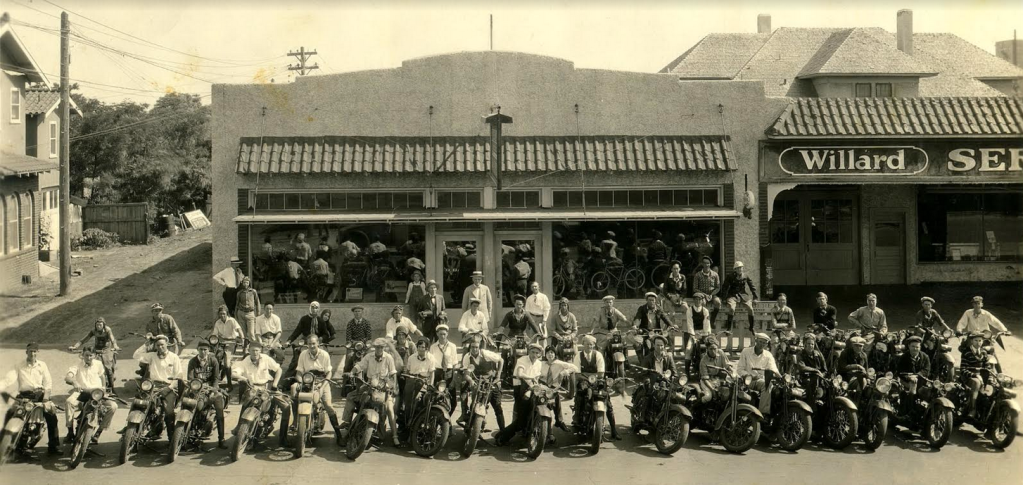
1925: First FIM Grand Prix in Assen, Berlin and Monza
On 21 April 1925, thirteen countries met in Paris for the FICM congress, (previously the FIM), formally recognised in the general sporting regulations as the only body representing motorcycling activities. Motorcycling events in 1925 were so numerous that date clashes were impossible to avoid. These events included the first German GP on the former racing circuit Avus, through the Grunewald forest, on the outskirts of Berlin. That unique road served as a high-speed toll route between the city and the suburbs during the week, and as a venue for both car and motorbike races at weekends. The first ‘Dutch TT’ was held on 11 July, organised by Motorclub Assen en Omstreken. The 28.4km triangular course on brick-paved public roads went through the villages of Rolde, Borger and Schoonloo. In 1926 the Dutch TT moved to a new 16.5km track at Assen (that year a company was founded in Italy to produce electric capacitors: Ducati). The first FICM European Grand Prix was held in Monza in 1925. It was decided that the title of European Champion in various classes would be awarded to the winner of this race. The organisation was not yet in place to operate a championship run over a series of races.


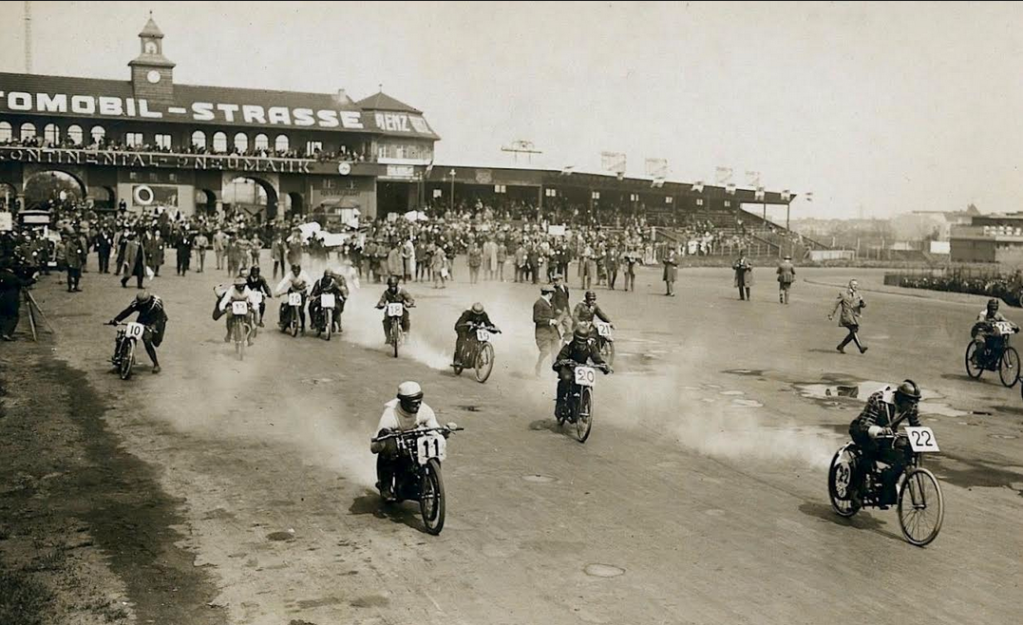
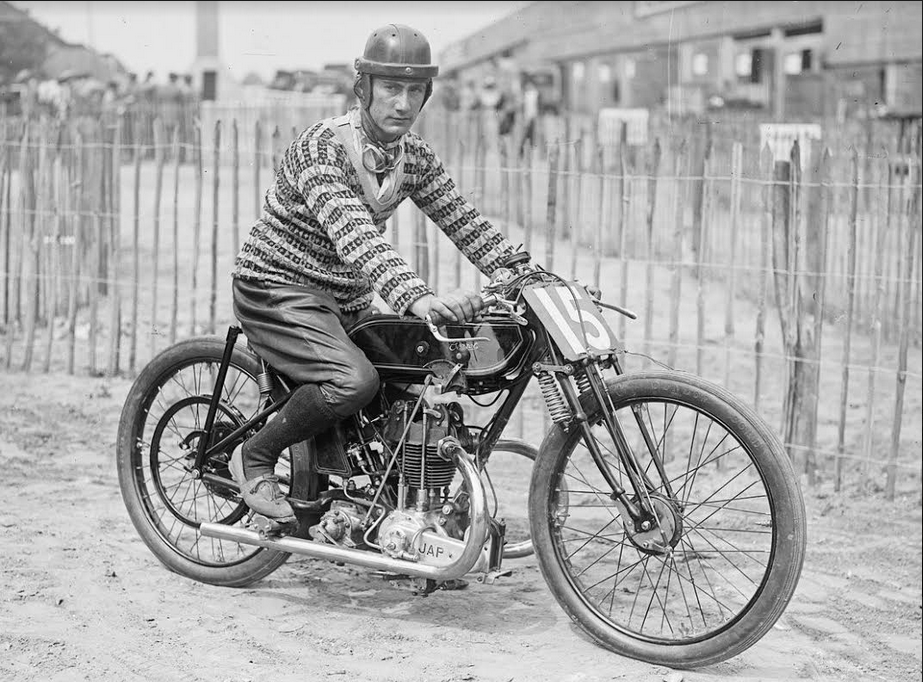
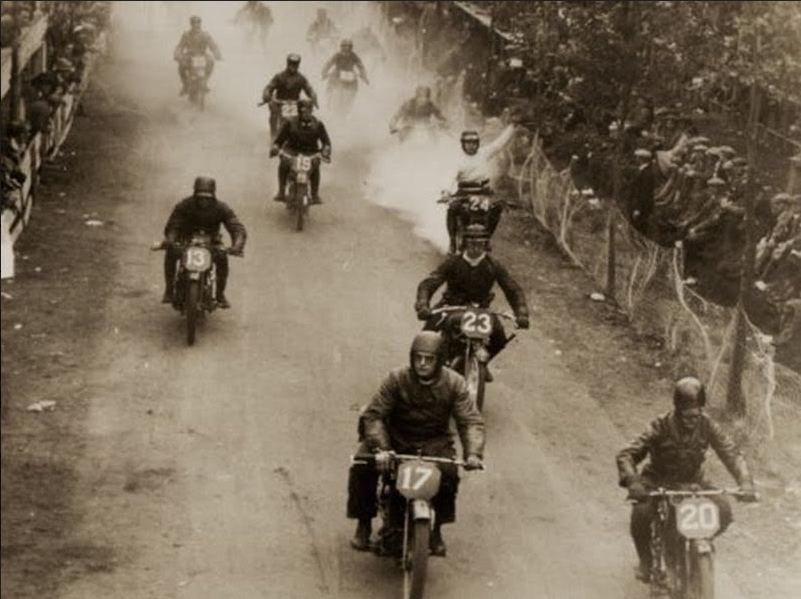
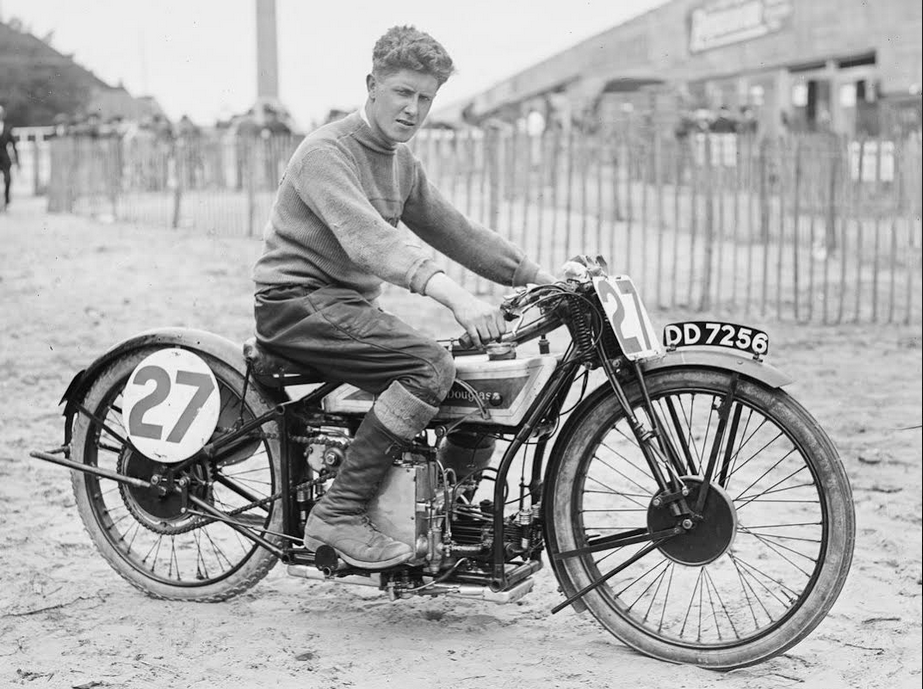
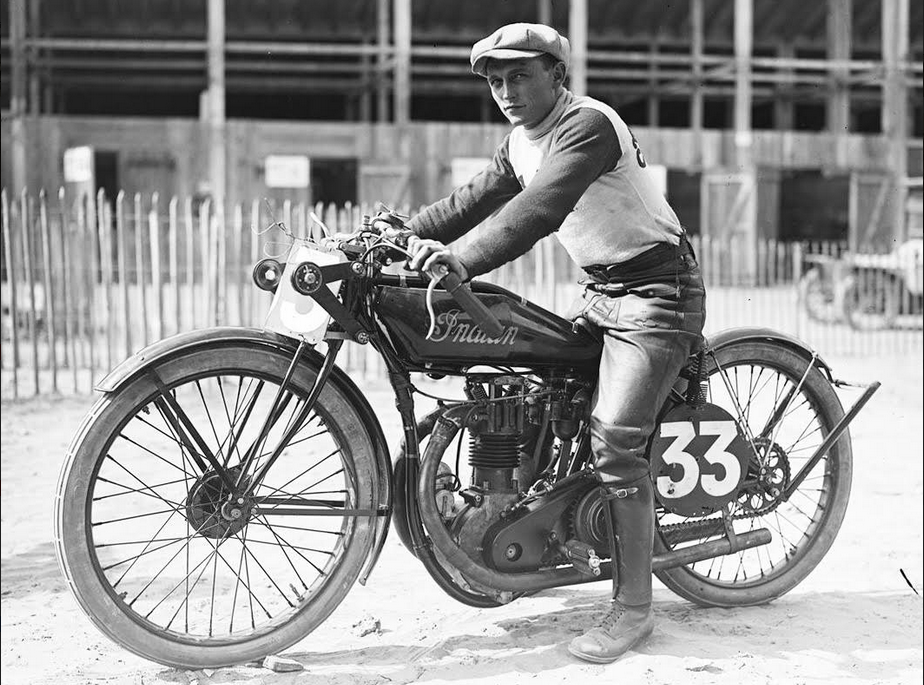
In the Land of the Rising Sun
The first motorcycle race in Japan was held in 1913, at the Hanshin Racecourse, a dirt horse racing track in Nishinomiya, (near Kobe). Around 30,000 spectators attended, a record for any kind of race in Japan. Racing became more common at venues across the country and professional riders emerged including the remarkable Kenzo Tada, the first Japanese rider to compete at the Isle of Man TT, in 1930, on a Velocette KTT. A massive earthquake destroyed much of Tokyo in 1923, killing hundreds of thousands of people. The absence of motorised emergency vehicles added to the impassable road network heralded great change for the Japanese vehicle industry, and the road network itself. Tokyo was rebuilt with a revised road layout which led the number of vehicles to double in 1924 and a clamour for a more modern nationwide road system. To further promote the nascent Japanese vehicle industry, in 1925 import tariffs were imposed on foreign vehicles, leading Ford (1924), General Motors (1927) and Chrysler in (1929) to establish factories in Japan. Harley-Davidson followed suit in 1929. Several small motorcycle manufacturers also set up shop in the mid-1920s, including the 350cc two-stroke Sanda, (Thunder), from Osaka, the SSD of Hiroshima, and the grand-daddy of them all, a 1,200cc twin called the Giant, built by Count Katsu Kiyoshi in 1924. The Japan Automobile Company (JAC),started producing motorcycles in 1929, including 350cc and 500cc sidevalve singles and a 500cc V-twin on JAP lines.
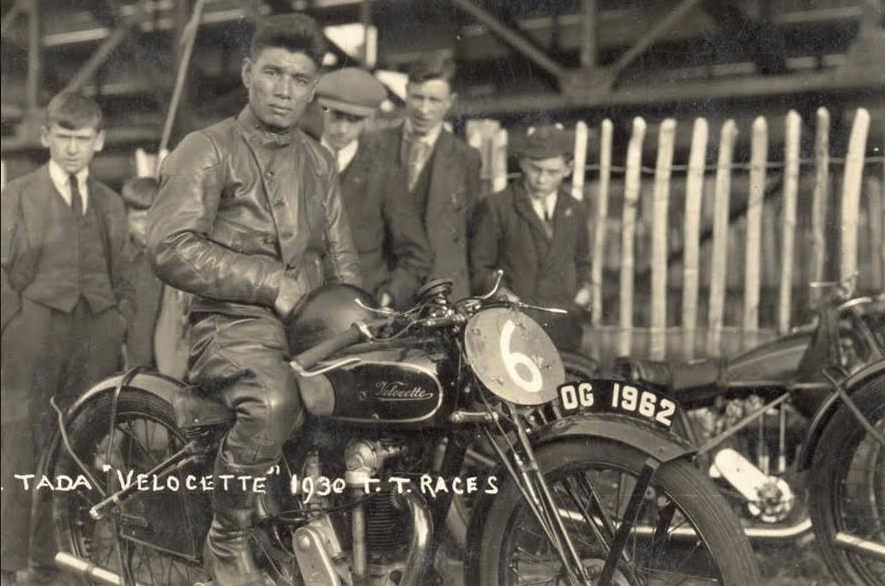


1926: Disqualified for a spark plug at the TT
In 1926 the second FICM European Grand Prix took place, this time in Belgium on the Spa-Francorchamps circuit, with classes for 175, 250, 350 and 500cc. Italian rider Pietro Gherzi was the first foreigner to try his hand at the 1926 TT, riding a Moto Guzzi. He finished second, but was disqualified for using a different spark plug to the one specified on his entry form. On May 22 and 23 the 5th Bol d’Or took place on the 5.8 km Circuit des Loges in Saint-Germain-en-Laye. The Bol d’Or, launched in 1922 by Eugene Mauve, was originally open to both motorcycles and automobiles.
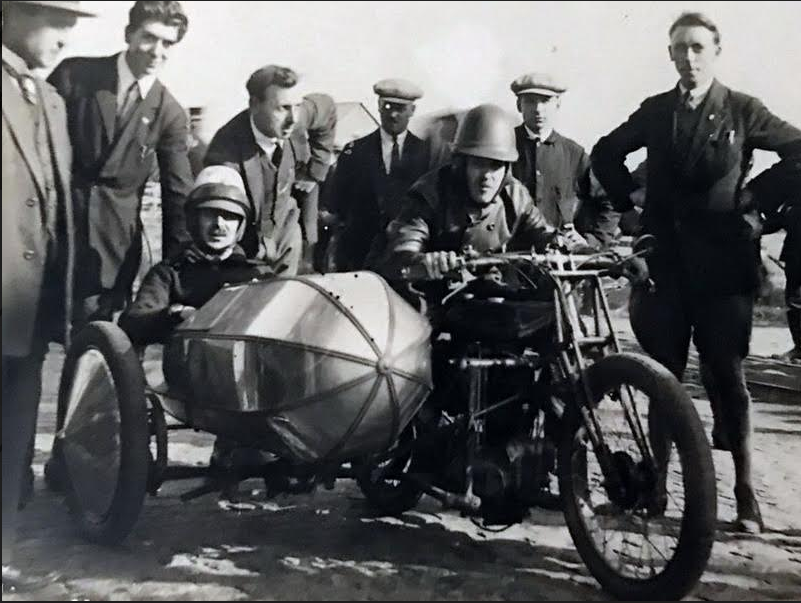

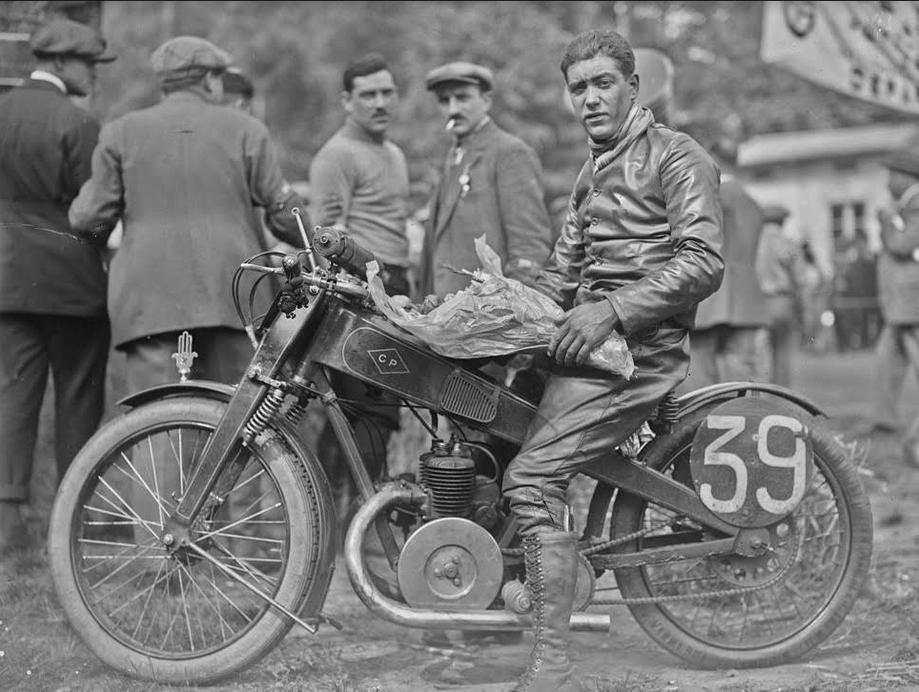
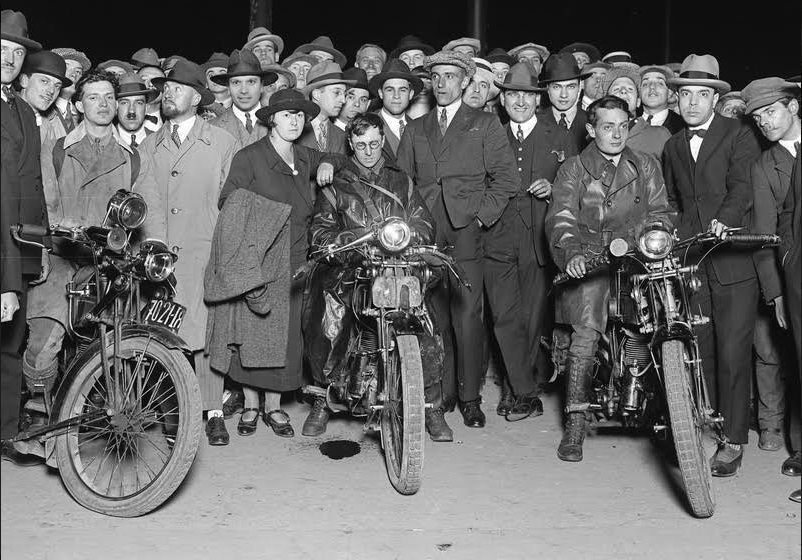
1926: Robert Sexé and Henry Andrieux go global Motorcyclist, reporter, globetrotter and tireless traveller, Robert Sexé (1890-1986) brought back many photos and stories of his adventures which delighted readers of motorcycle and travel magazines. In 1924 Robert Sexé and two teammates, Messrs Krebs and Dumoulin, completed the Paris-Constantinople-Paris ‘raid’ on Gillet-Herstal motorcycles provided by the Belgian manufacturer. In 1925 the same team tackled the Paris-Moscow ‘raid’, also on Gillet-Herstals. On 14 June 1926 Robert Sexé, this time accompanied by Henry Andrieux, hit the road in front of the public and the Paris press corps for the first round of a world motorcycle tour, again with support from Gillet-Herstal. Their jaunt was covered by newspapers all around the world. In 5½ months they covered 35,000km, including 22,000km on their bikes. They faced extreme cold, hunger and fatigue, pushing their 220kg machines over seldom used, desolate muddy tracks, especially deep in the USSR. They were the last witnesses of tribes and countries which have now disappeared. They crossed Belgium, Germany, Poland and the USSR, swiftly followed by entry to Japan where they had the chance to meet Mr Suzuki, who went on to make the motorcycles that bear his name. They then went through the United States, meeting Erwin ‘Cannonball’ Baker, the motorcycling pioneer set dozens of cross-country records on a variety of motorcycles and sidecars. They also rode on Route 66, then under construction in segments and often discontinuous ones at that—it would not be entirely paved until 1938. They eventually reached New York with its skyscrapers still under construction. Sexé and Andrieux finally returned to the Belgium Federation of Motorcycling’s headquarters in Brussels on 3 December 1926.
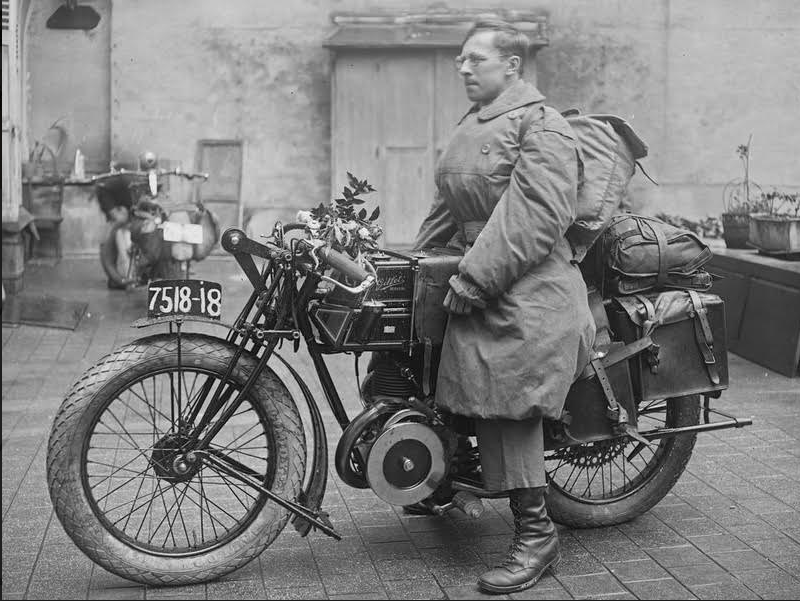
1926: Paris-Nice
Since its debut in 1913 this prestigious 1,200km Paris-Nice regularity run had attracted most of the major motorcycle brands of the time. The event was then organised in four stages, ending with the ‘Critérium de Nice’, comprising a cold-start competition, a kilometre run test and climbing the Côte de la Turbie. Competitors had to present themselves at the checkpoints, maintaining a specified average speed for each class. Motorcycle clubs along the way that helped with the organisation included MC de France, UM Aube, MVC Dijonnais, MC Mâconnais, MC Lyon, MC Roanne, UM Forez, MC Dauphinois, MC Avignon, MC Marseille, MC Draguignan and, of course, MC Nice. Paris-Nice became a phenomenal sporting success. At the end of February and beginning of March 1924 the competition was run in six stages with classes for scooters and mopeds (75 and 100cc), motorcycles (175, 250, 350, 500, 750 and 1,000cc), outfits (350, 600 and 1,000cc) and two-seat cyclecars (350, 500, 750 and 1,100cc). The 1924 route was particularly tough—for the first time it included the route des Alpes between Lyon and Sisteron, which was freshly opened to traffic in winter. Of 70 competitors who left Paris, only 50 completed the course. In 1926 only 81 of the 91 entrants were allowed to start; 10 failed to pass scrutineering. Marques represented included Peugeot, Monet-Goyon, Terrot, Gnome et Rhône, La Française, MagnatDebon, Motosacoche, Dollar, Prester, Le Grimpeur, CI Delage, Favor, Janin, PS, Stella, Jean Thomann, Royal Moto, Propulcycle, Dé-Dé, Arbinet, BSA, Triumph, Scott, Harlette, Harley-Davidson, Condor, Gillet, Sphinx, Saroléa, SIMA-Violet, D’Yrsan, Sénéchal and Morgan. Here’s how a contemporary magazine reacted to the 1926 Paris-Nice trial: “Formerly, the motorcycle knew a rare period of prosperity: every cyclist dreamed of suppressing fatigue by adding an engine to his steel frame, and we saw thousands of ‘petroleum bikes’, uncomfortable and not very reliable, from which however the owners derived satisfaction. Then the power of these machines increased without the commensurate addition of comfort and proper function following. The motorcycle, if it did not die from these faults, suffered terribly. She was despised among us as much as she had unleashed enthusiasm amongst her followers. Since then, manufacturers, especially those across the Channel, have changed their minds. Instead of making motorcycles that are too fast and too powerful, they have provided us with machines that run safely and comfortably, delicious sidecars for a trip for two which are like light and pleasant small ‘cars’ to ride. Again, the public’s favour returned to the motorcycle, and interesting motorcycle events could be organised for these machines.”
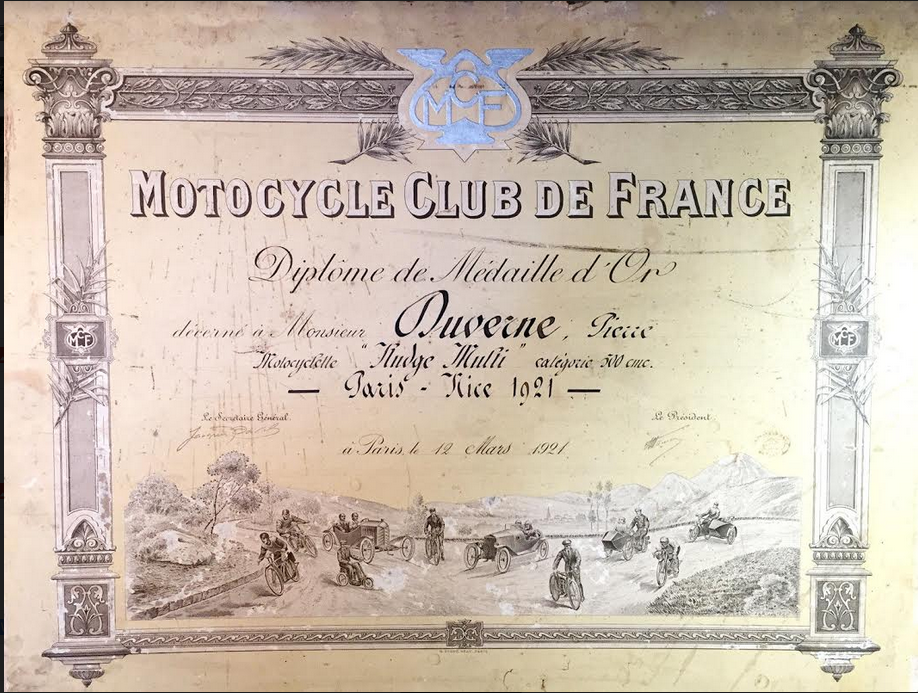
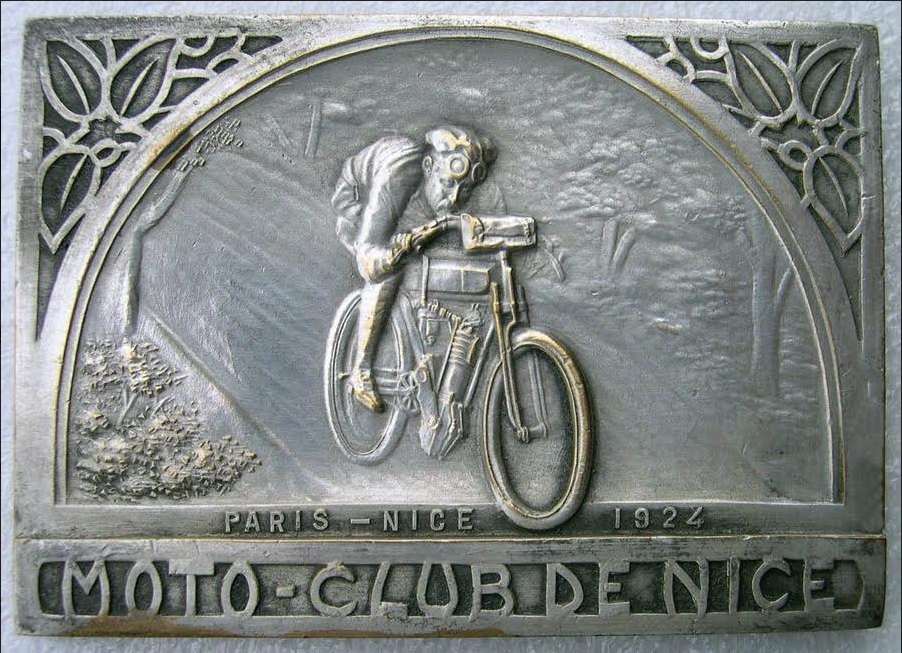
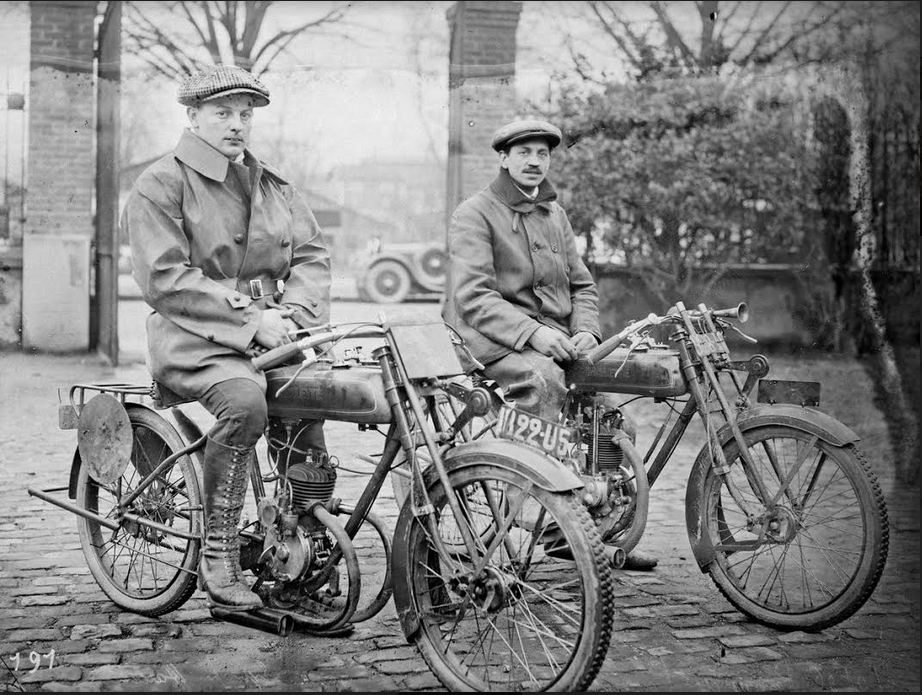
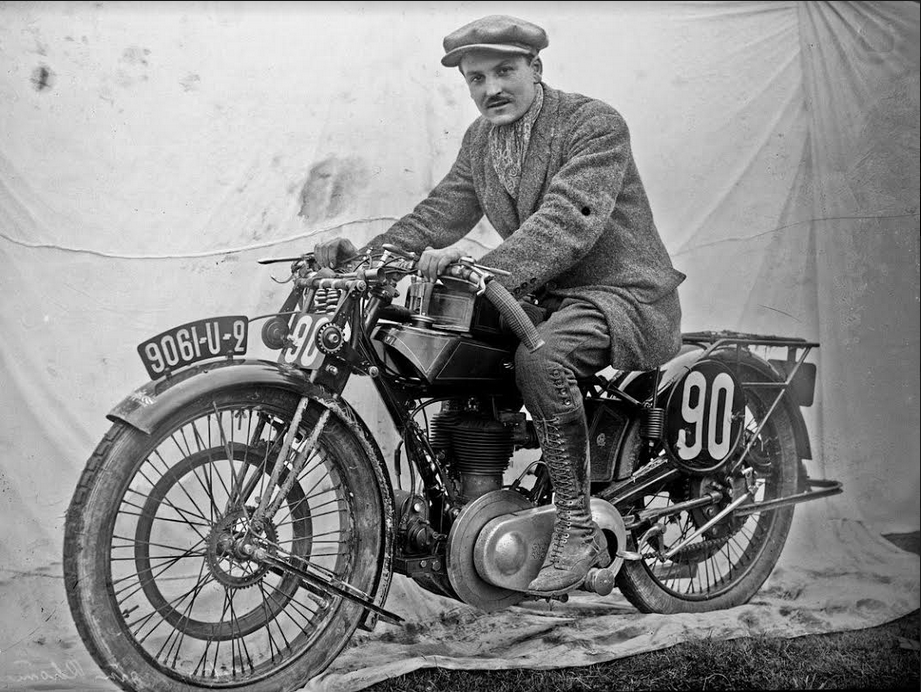
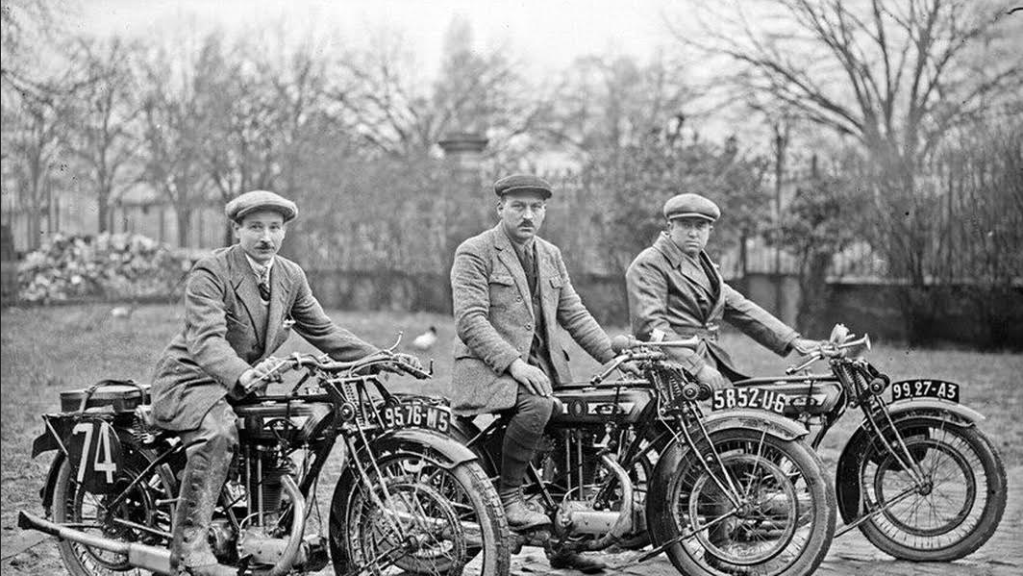
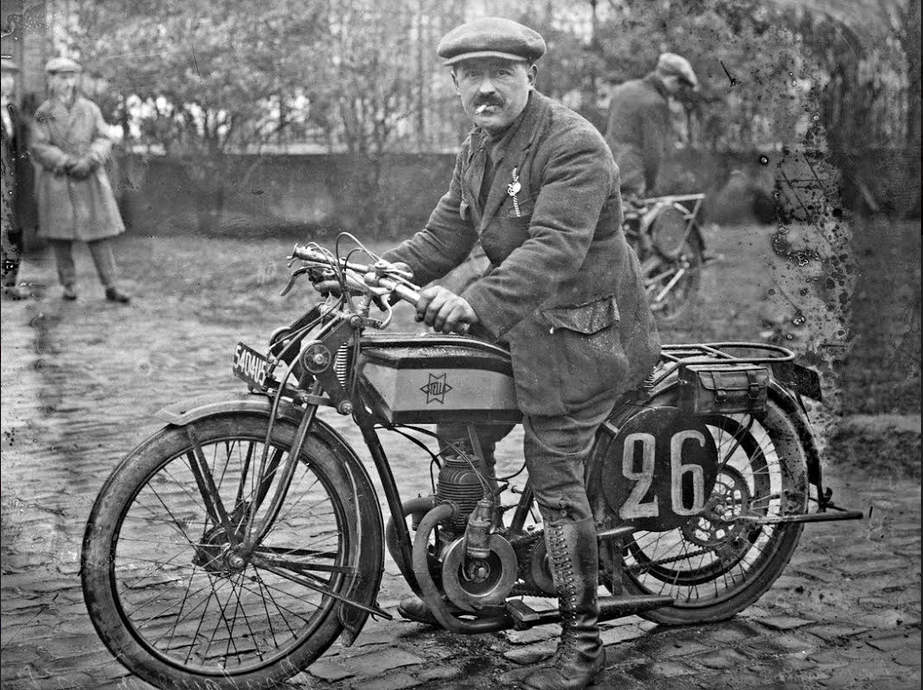
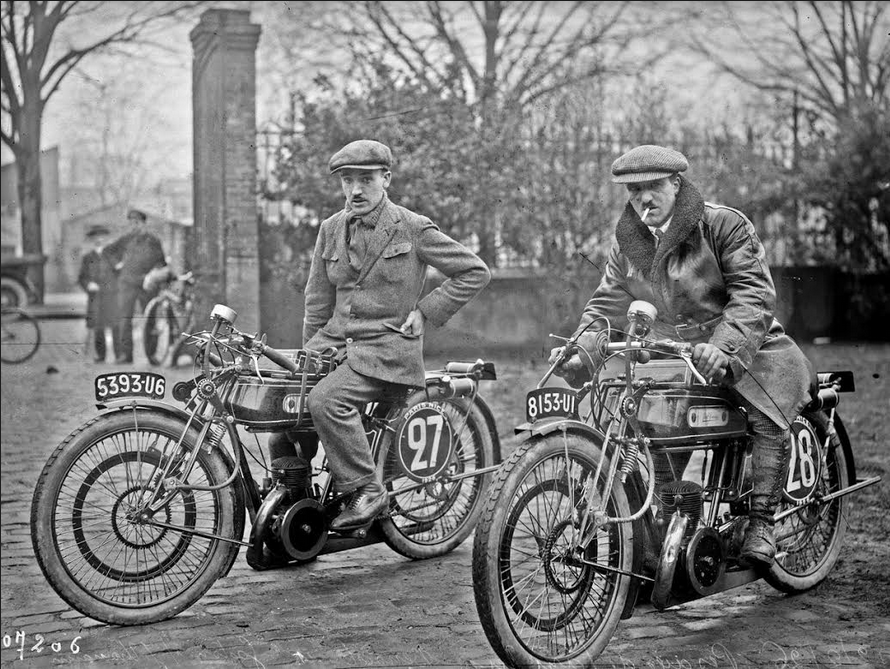
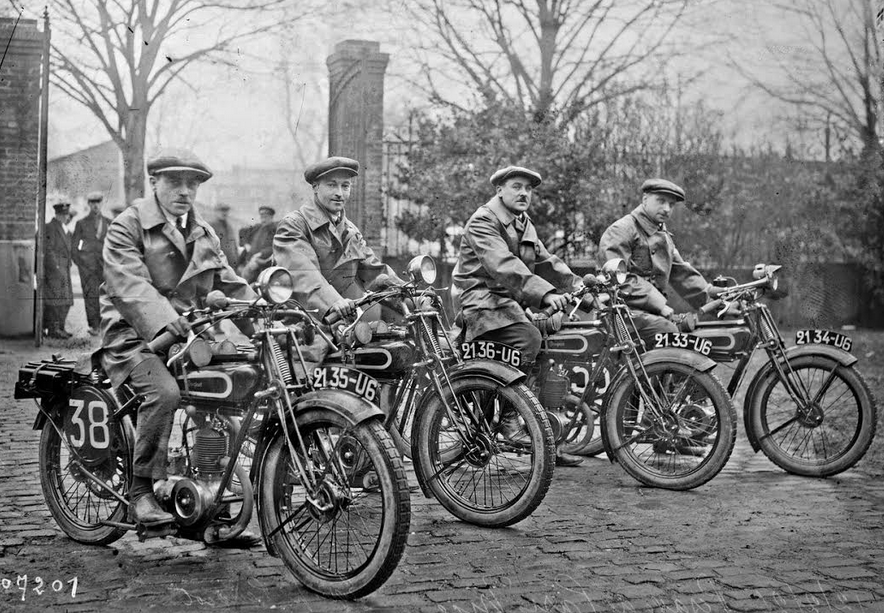
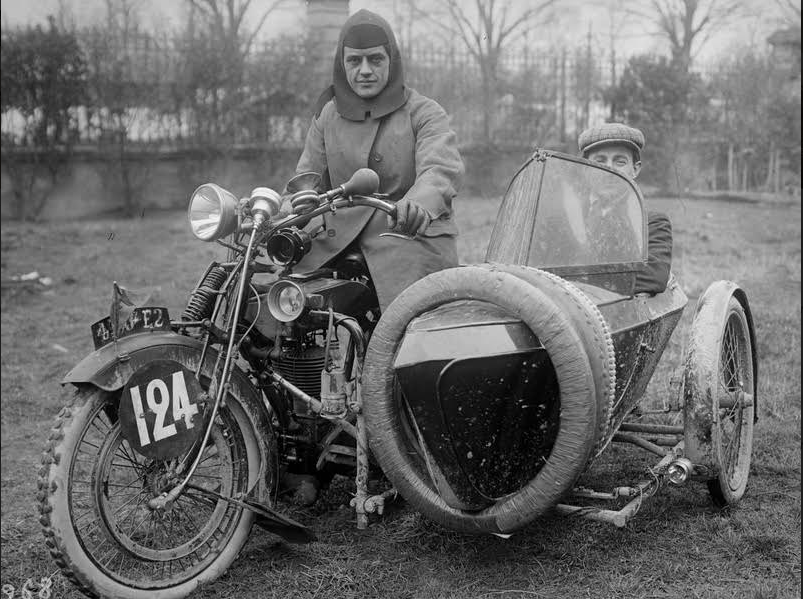
1926: Riding a motorcycle off a cliff
It takes a certain kind of person to strap a parachute to their back, climb aboard a motorcycle and ride at full pelt off a cliff. To do so almost 100 years ago was next level crazy. British Pathé filmed Fred Osborne attempting the first ever motorcycle parachute jump from the 500ft Huntington Cliff in Los Angeles, aboard a four-pot Henderson. Without a helmet and wearing nothing but a jersey (with the slogan ‘Just Freddie’ scrawled across the back) jeans and high leather boots, the daredevil offers a nonchalant glance to the camera before accelerating to around 60mph and hitting the tiny take-off ramp. Unfortunately, someone had got their calculations wrong and his speed and the height of the cliff weren’t enough to allow for a full parachute deployment. Osborne and the Henderson plummeted to the ground below, where the bike burst into flames. Incredibly, the young man survived; telephone wires broke his fall, he was rushed to hospital and made a full recovery.
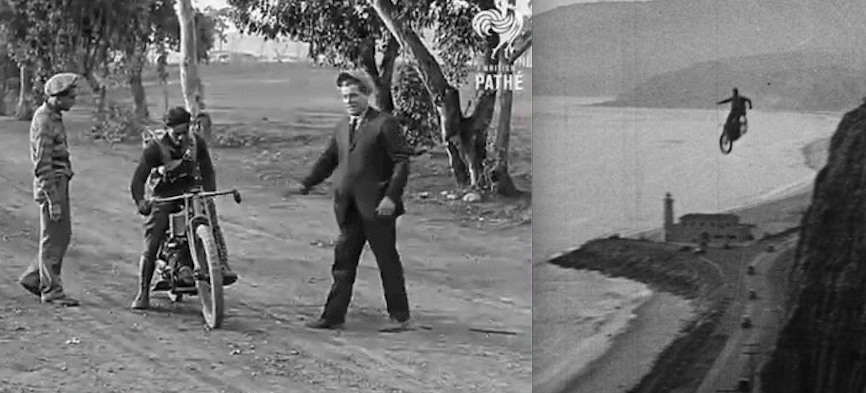
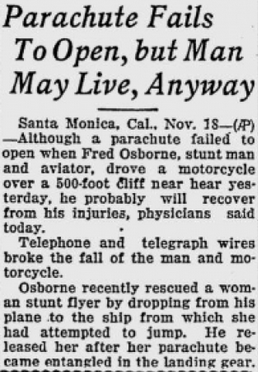
The film’s well worth a look, you’ll find it at http://www.youtube.com/watch?v=MyYn5nkNHBY Enjoy—Ed
Memories of Yesteryear. Part 6: All You Need Is Love (and a bike)
IN MY LAST CHAPTER I ENDEAVOURED to give you a brief insight into the motorcycling world in the mid-1920s. The next chapter will continue this fascinating historical thread, starting at the beginning of the 1930s which proved to be an extremely rich period in motorcycle evolution. However, as I’m writing this just before Valentine’s Day, you’ll perhaps forgive me if I take a moment to celebrate the occasion as I attempt to bring together the two, (at times), contradictory topics of love and motorcycles. Not the easiest of topics to combine perhaps, but remember, lovers and couples associated with motorcycle are one of the many themes to be found illustrated in the history of the postcard, humorous, sentimental or otherwise, in drawings, photographs and cartoons. So please join me as we wander through time together, leafing through some of my postcard archive and turning up stories in the evolution of the postcard over the centuries.
Pre-dating the arrival of the ‘little printed card’ that was posted at one time or another, the sending of open messages actually dates back to ancient times. During the fourth millennium in Assyria, clay tablets were inscribed with messages; more recently, in the reign of Louis XIII, visiting notes were written on playing cards, traces of which can still be found in the archives of the post offices in Paris dating back to 1777.
In France, during the second half of the 19th century, glossy commercial cards were in circulation containing advertisements. These were among the first examples of marketing messages and took the form of small cards, although they had no personal aspect to them and were designed purely to sell products or advertise services.
The term ‘correspondence card’ was first used in 1869 by an Austrian called Emmanuel Hermann; to simplify the postal system he managed to convince the Austrian postal administration to use the generic term ‘correspondenz-karte’. Thus the postcard was born: a rectangle of stiff paper, printed on the front with text and space reserved for a stamp; the reverse left blank for correspondence. This shameless correspondence, open for all the world to see, was derided in France and the UK for its lack of discretion, but it sold more than 45,000 copies on its first day of publication.
In 1870 the postcard arrived in Strasbourg, which was being besieged by the German army at the start of the Franco-Prussian War. A card bearing the Red Cross stamp was circulated by the Wounded Relief Society in an attempt to allow the civilian population to communicate directly with the outside world. It is interesting to note dates on which postcards were mailed for the first time: 1870, Switzerland, Great Britain; 1871, Belgium; 1872, Russia, France; 1873, United States (stamped by the government), Romania, Japan; 1874, Germany. In 1871, Canada was the first country outside Europe to permit the use of postcards as a legitimate form of postal correspondence; only the Postal Service was licensed to issue them and the only illustration was the face of Queen Victoria. From 1873 to 1971 the postcard benefited from a lower rate than ordinary mail and the use of postcards rose in line with general literacy. French postcards remained a monopoly of the French ‘Administration des Postes’ until 1875. In that year international mailing of postcards began following the first meeting of the General Postal Union in Bern. In 1889 the first illustrated postcard appeared in France; it was called ‘La Libonis’ after its designer, Léon Charles Libonis. The Société de la Tour Eiffel published 300,000 copies during the Universal Exhibition and five different designs were sold from August 1889 (these souvenir cards of the ascent of the Eiffel Tower could be stamped at the first platform, the second or the top of the Tower). The 1900 Universal Exhibition marked an explosion in the use of postcards—production rose from 100 million in 1910 to 800 million in 1914.
The UK was slower than its continental neighbours to latch onto the possibilities of picture postcards; it was not until 1894 that the Post Office agreed to their private publication. Even after 1894, picture postcards did not immediately become a success in the UK. Early examples tended to show seaside and city views rather than subjects or themes. By 1902 however, postcards were published featuring everything from the Boer War to royal events, and in that year the Post Office allowed both address and message to be written on one side of the card, freeing up the other side for the picture. Britain thus became the first country to introduce the ‘divided’ postcard format we are familiar with today.
The decade from 1910 shows the almost journalistic role played by the postcard with the depiction of train or bus accidents, demonstrations, strikes, visits by the Head of State, official funerals, planes and balloons. All were shown, and often they pictured street scenes, panoramas and public monuments with specific traders advertising their wares posed in front of them. People were traveling more than you might expect and all of Europe was open to them. The postcard was evolving, a boom was being created linked to increased tourism. French author Georges Duhamel wrote: “The invention of the postcard did more for tourism than that of the railways.” I’m not sure that’s true, but certainly the desire to show one’s friends just where you’d been and how well travelled you were had something to do with it. All manner of greetings were sent by postcard, humorous, fantasy-themed, caricature, politically orientated and, of course, saucy. The saucier aspects of the more racy cards sometimes got publishers into trouble.
The First World War gave new impetus to the exchange of postcards as millions of men were stationed far from their families and loved ones. The illustrations were often thinly disguised state propaganda, but the correspondence itself was of course the real message. Cards posted from garrisons and convalescent homes were not subject to the same rigorous censorship as at the front so gave a lot of more detail of daily life and the morale of the troops. At the time, no publisher knew when the war would end, so we saw an evolution of captions: Campaign of 1914, War of 1914, International War, War of 1914-1915, Great War 1914-1917, Great War 1914-1918.
As if to start afresh after these terrible war years, people seemed to turn away from postcards in the 1920s. The coming together of families, growing competition from the telephone and telegraph, the use of photography in the press and the development of the motor vehicles all contributed to making the postcard an obsolescence. The economic crisis of the 1930s and the Second World War only further served to hasten the decline of the postcard throughout Europe. In the 1970s, old postcards were rediscovered and appreciated because they bear witness to a bygone era. Old trades, sites, buildings, postcards fascinate became popular among collectors and those seeking a nostalgic vision of times gone by.
Perhaps the postcard in all its outdated forms is itself a dinosaur, but at least we can touch it and gaze upon it directly without the aid of any electronic device, and in these difficult times, isn’t that what we all want…the direct touch and gaze of another and the tactility that only comes with being human?
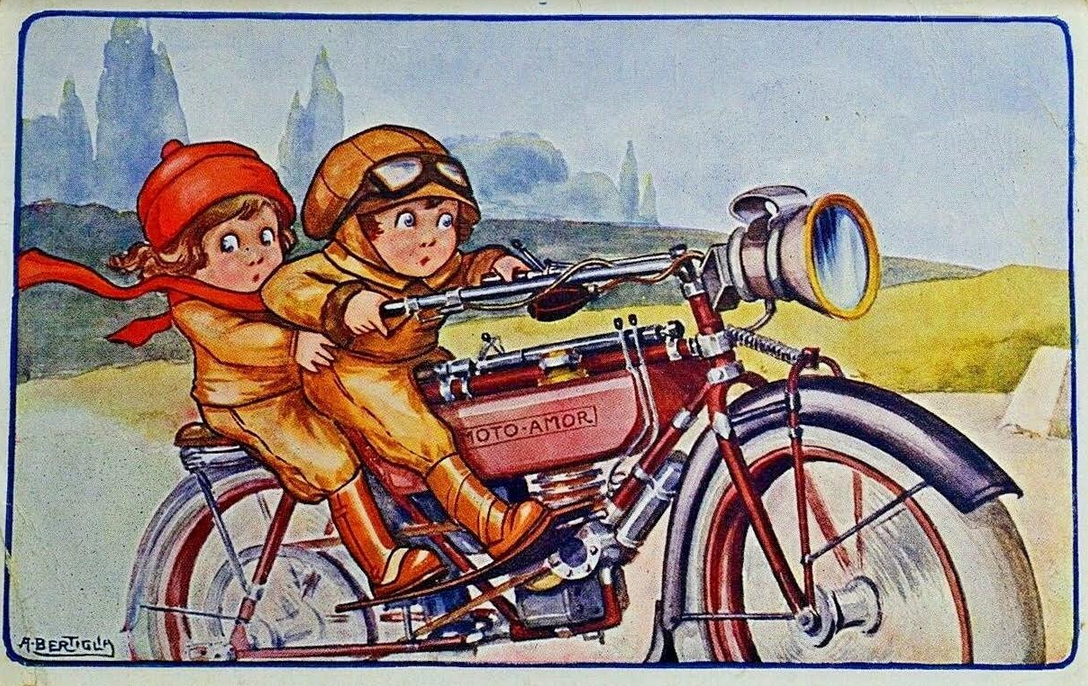

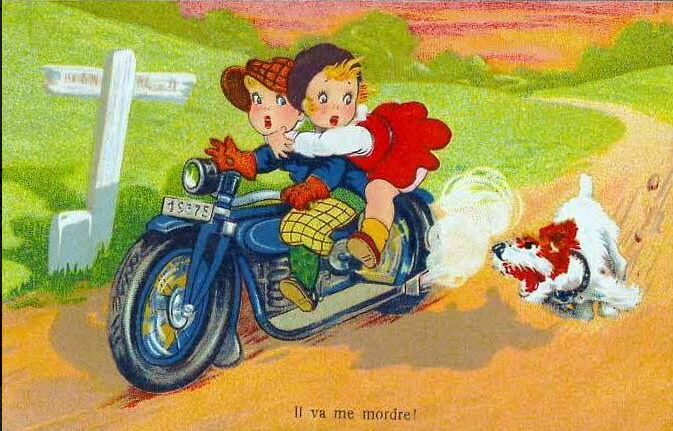
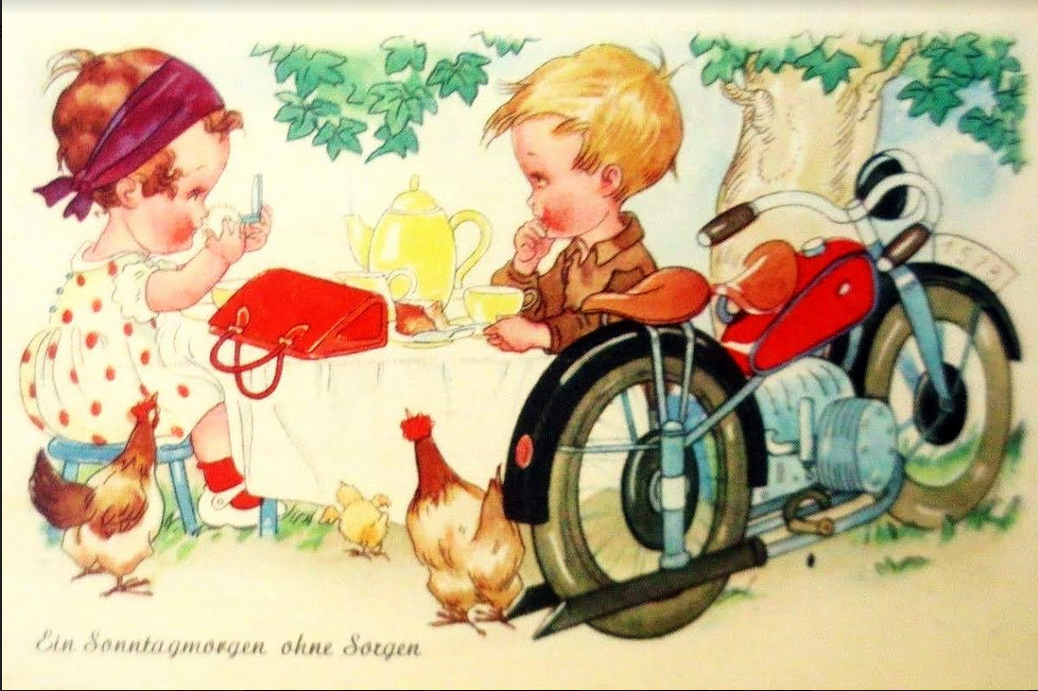
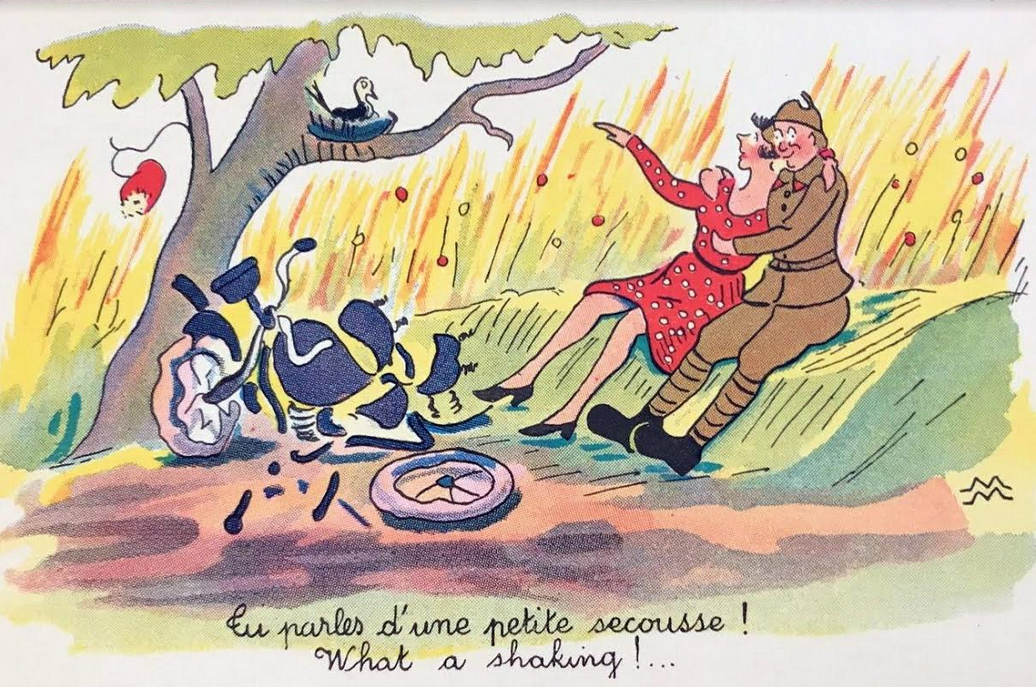
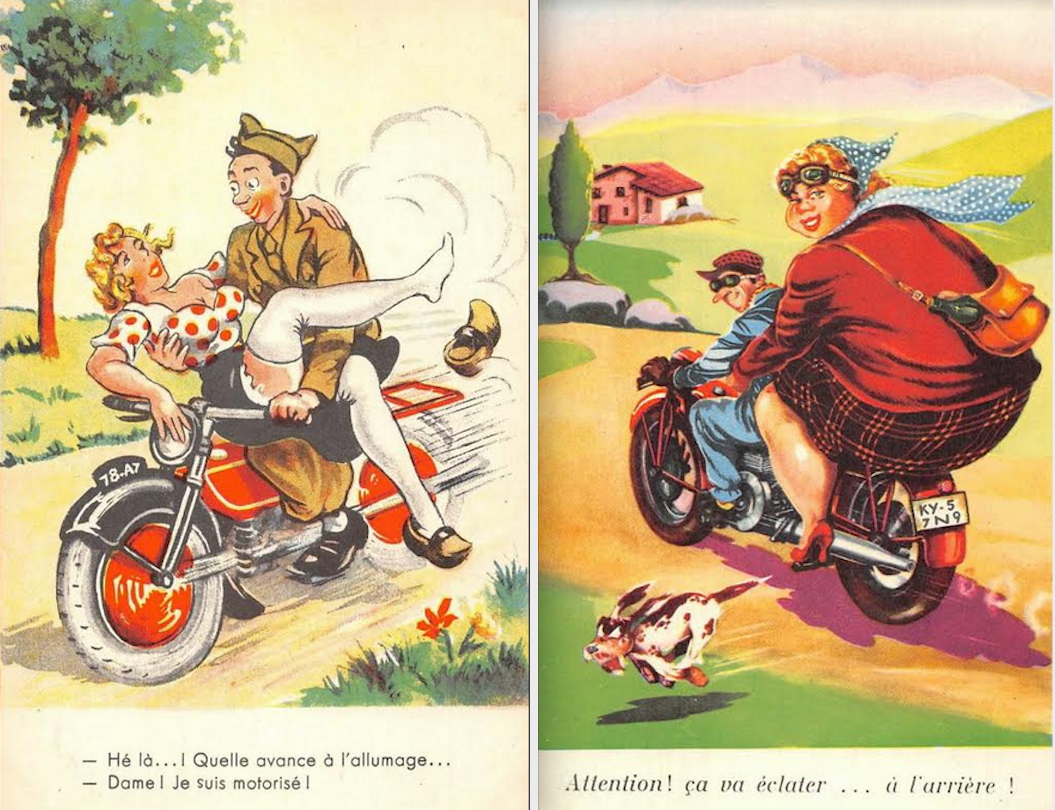
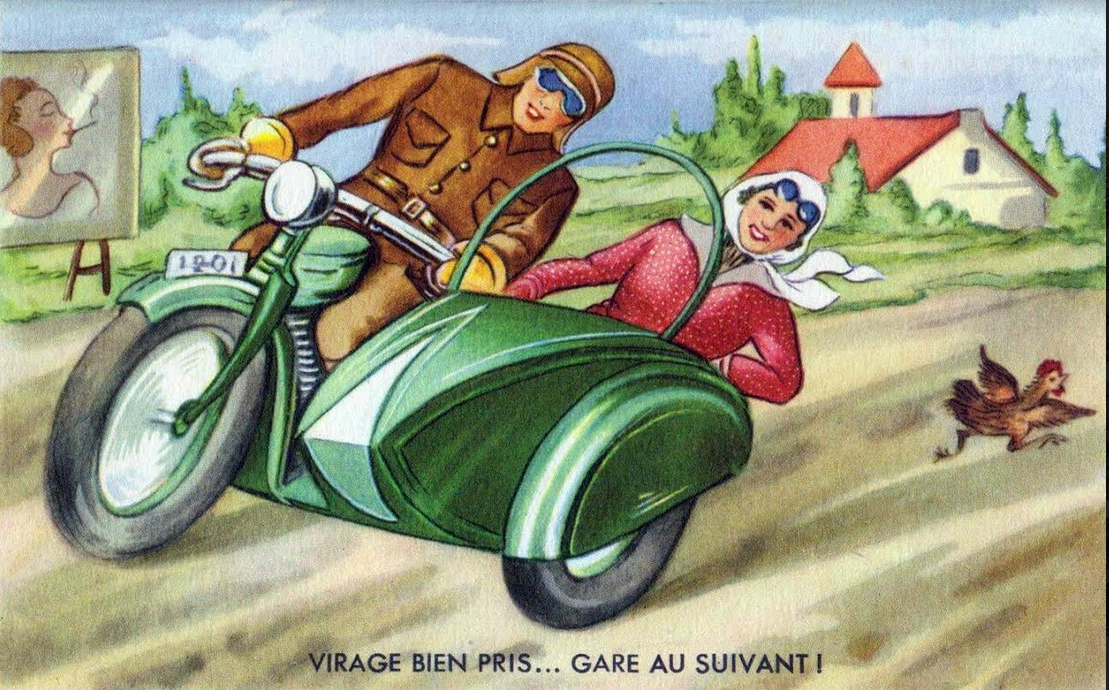
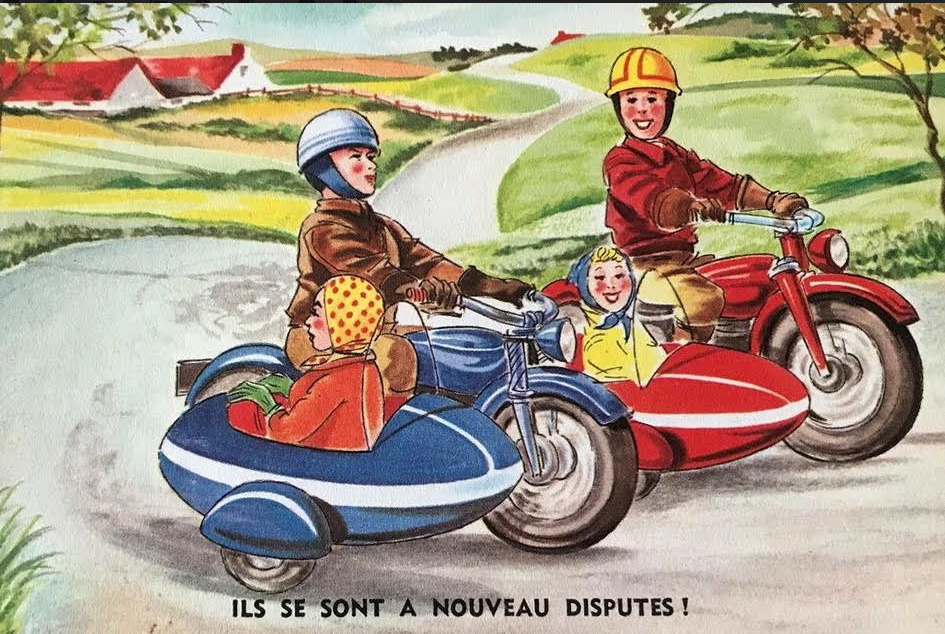
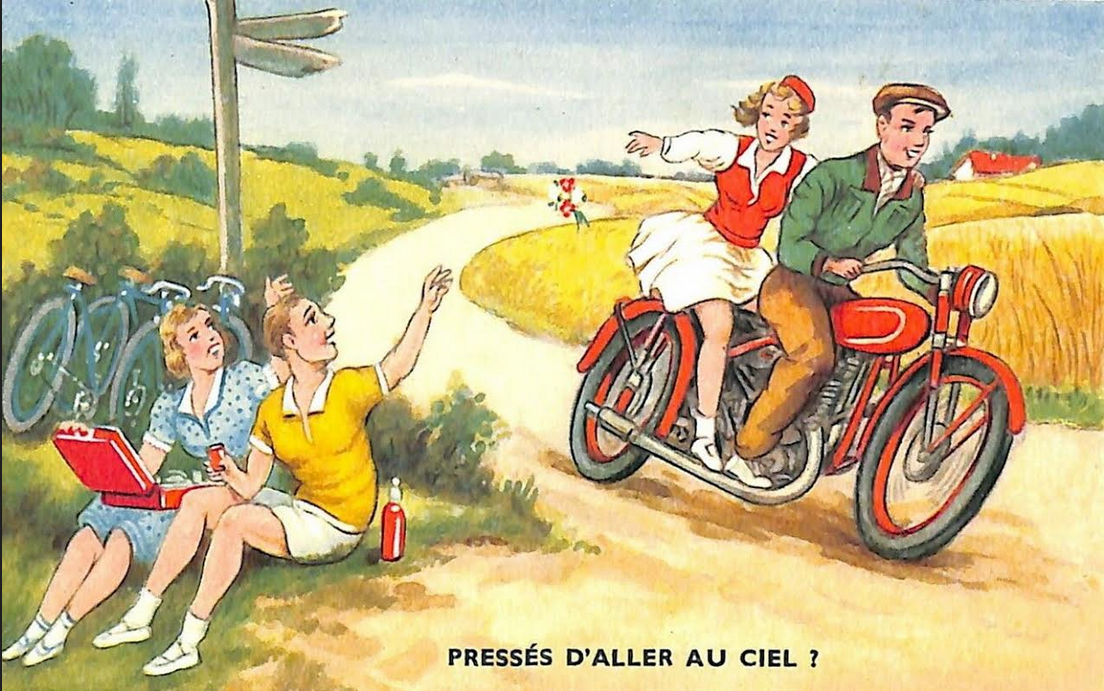
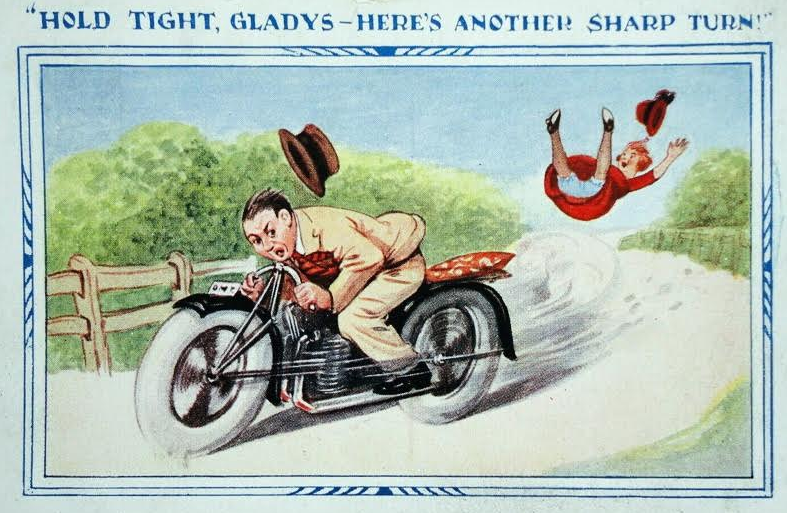


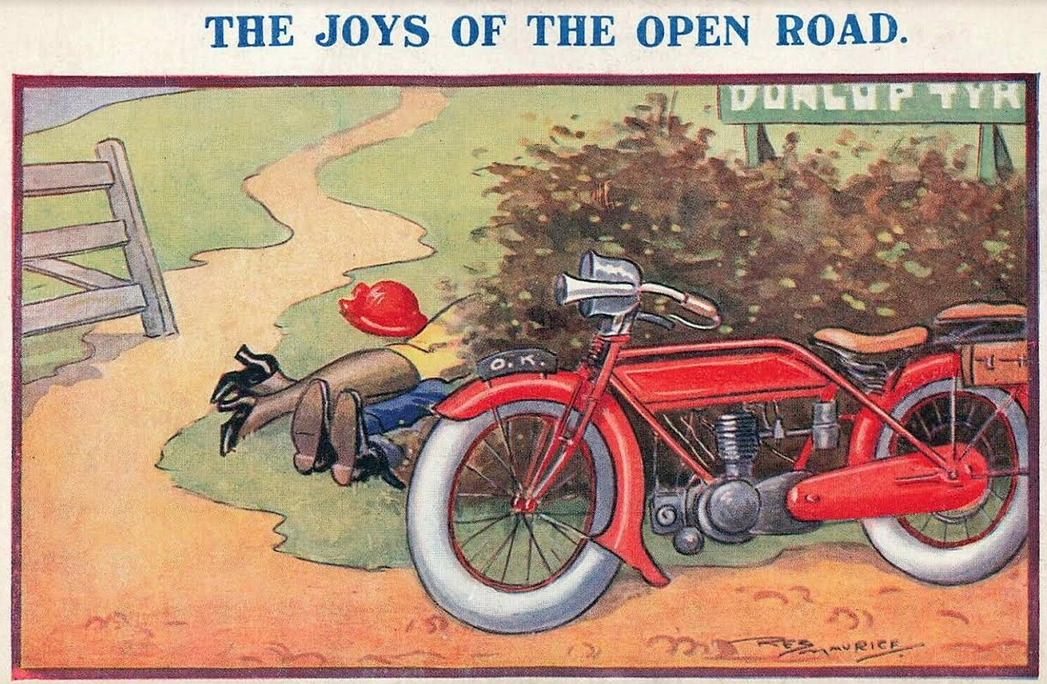
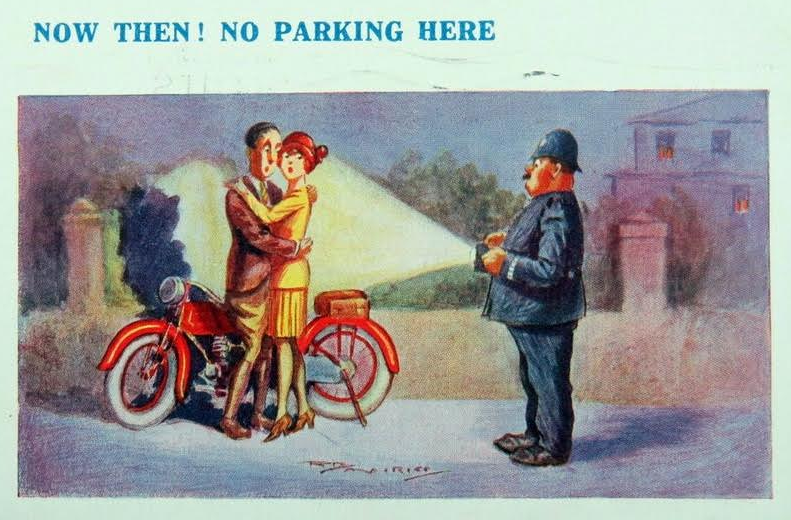


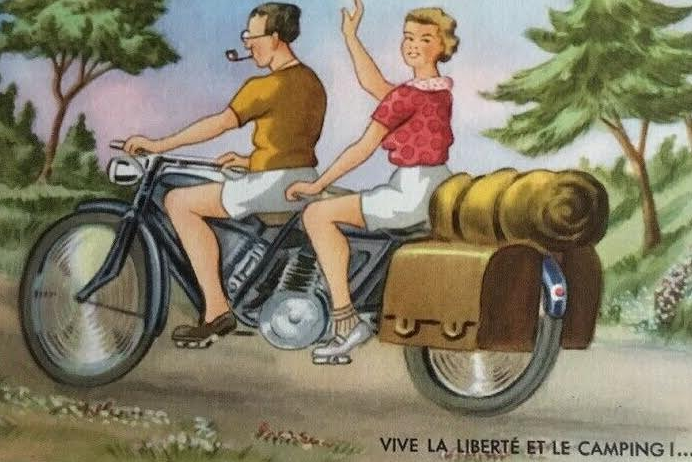
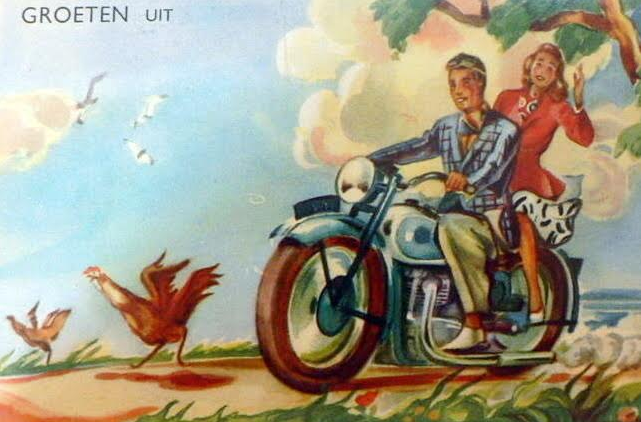
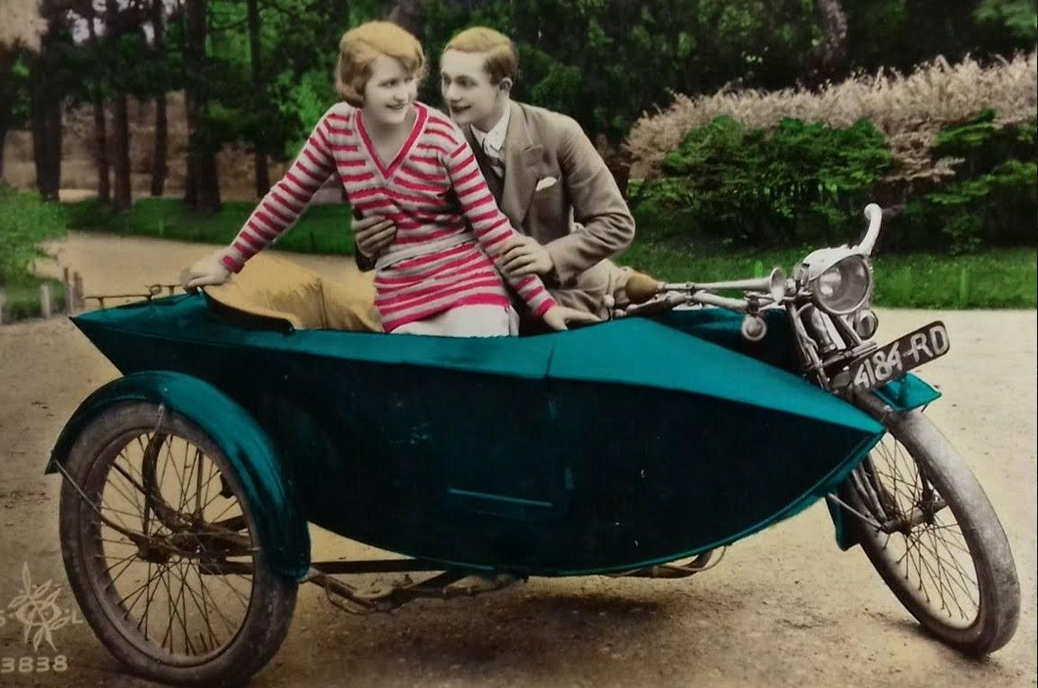
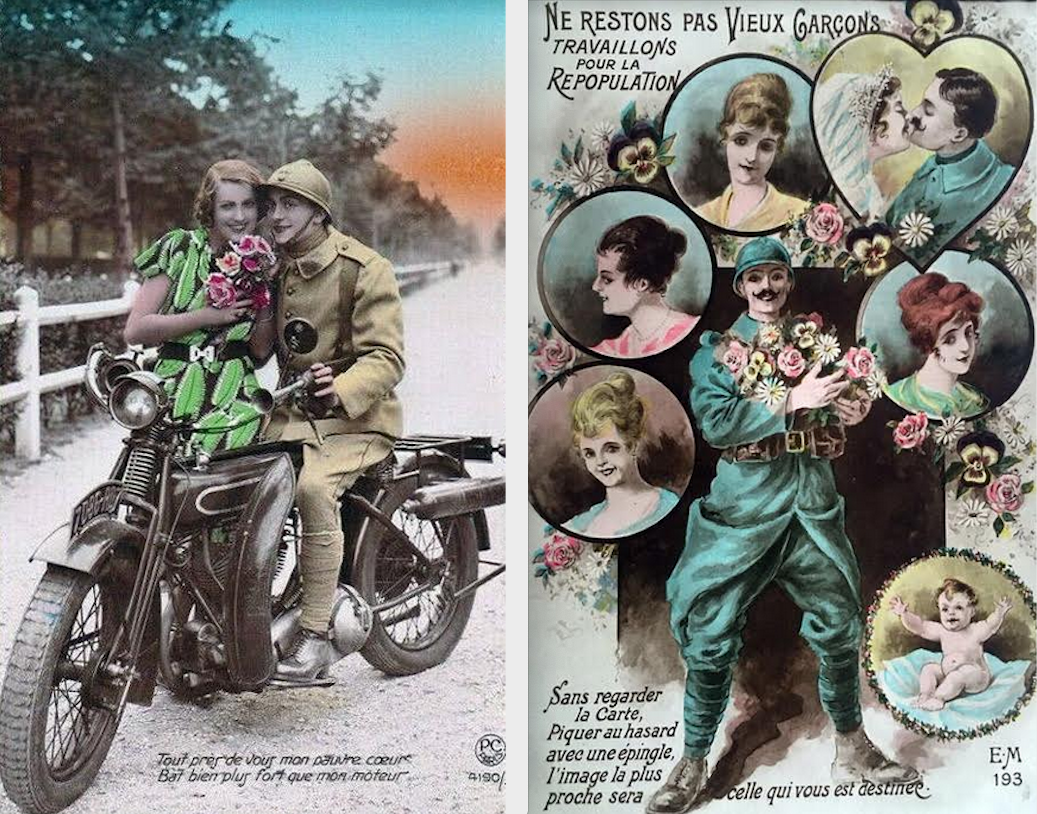

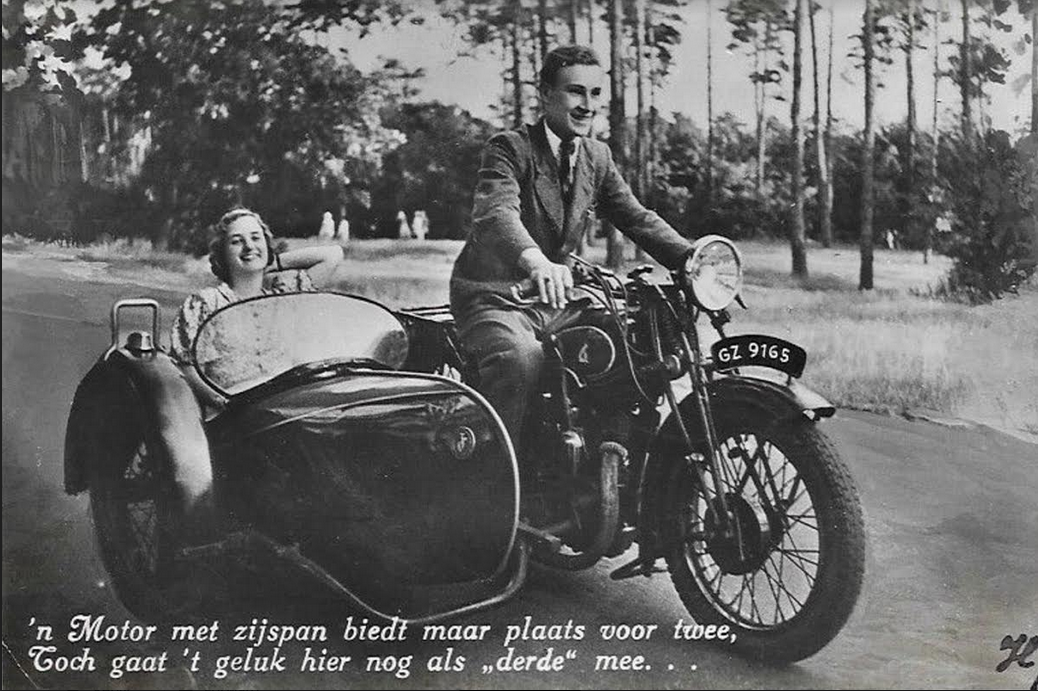
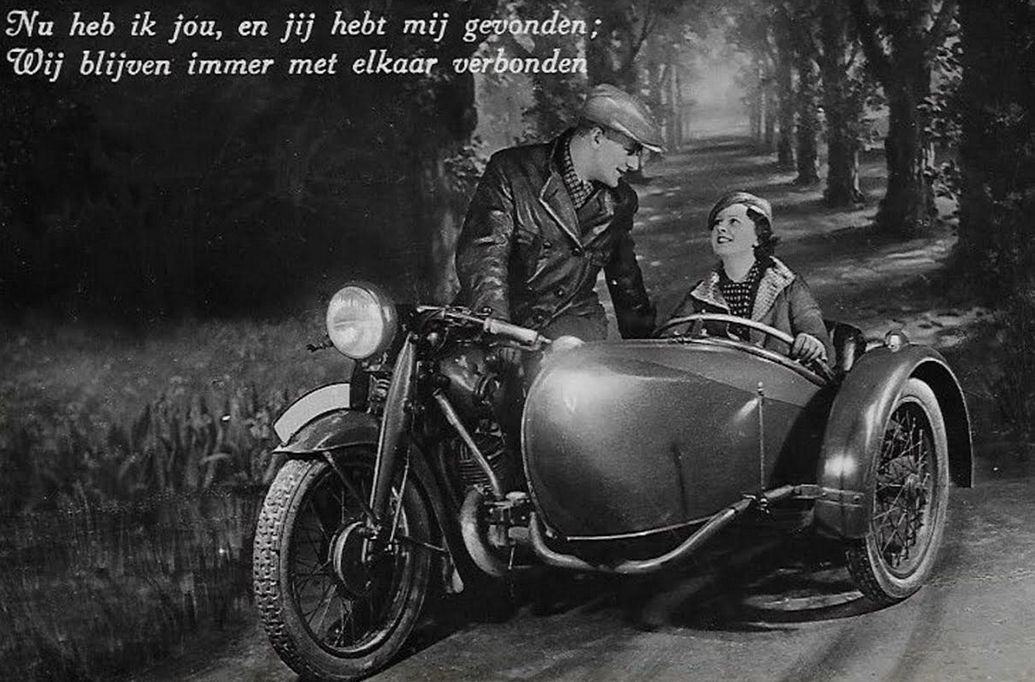

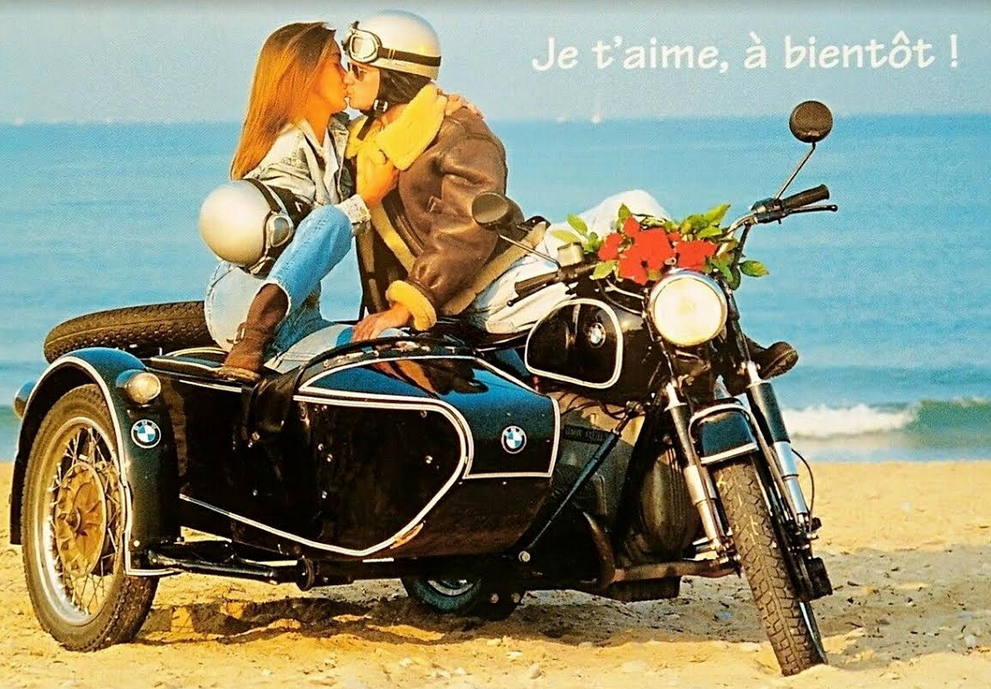
Memories of Yesteryear. Part 7: A tribute to women on two wheels
AFTER A DIGRESSION I MADE RECENTLY on the occasion of Valentine’s Day, I had planned to come back to talk to you about the post-1925 period, picking up where I left off at the end of Part 5. Well, that’s a bust! I woke up on 8 March 2021 and the media announced it was International Women’s Day. If I hadn’t heard about it from the TV, I must admit that I would have completely passed me by. But in an effort to seek forgiveness for this omission from the fairer sex surfing this website, I will endeavour to celebrate International Women’s Day in my own way using a subject that I have had in mind for ages: women and motorcycles. I wanted my choice to include not only the most famous female motorcycling heroines, but also photos of total strangers, the illustrious and previously anonymous riders of yesterday. In this chapter we’ll discover dusty old images of these unknown ladies of yesteryear.
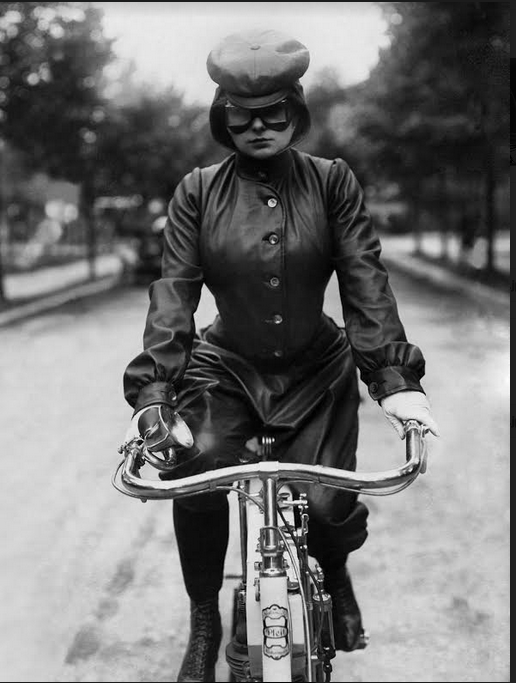
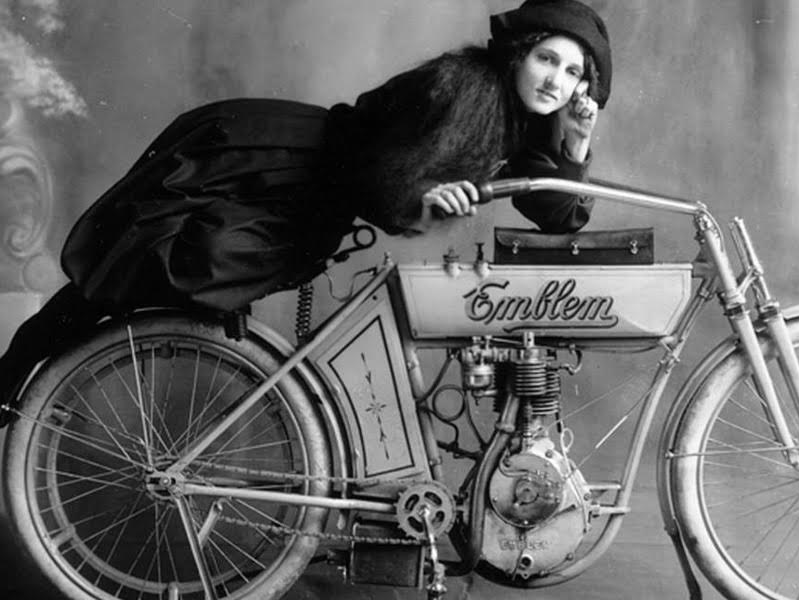
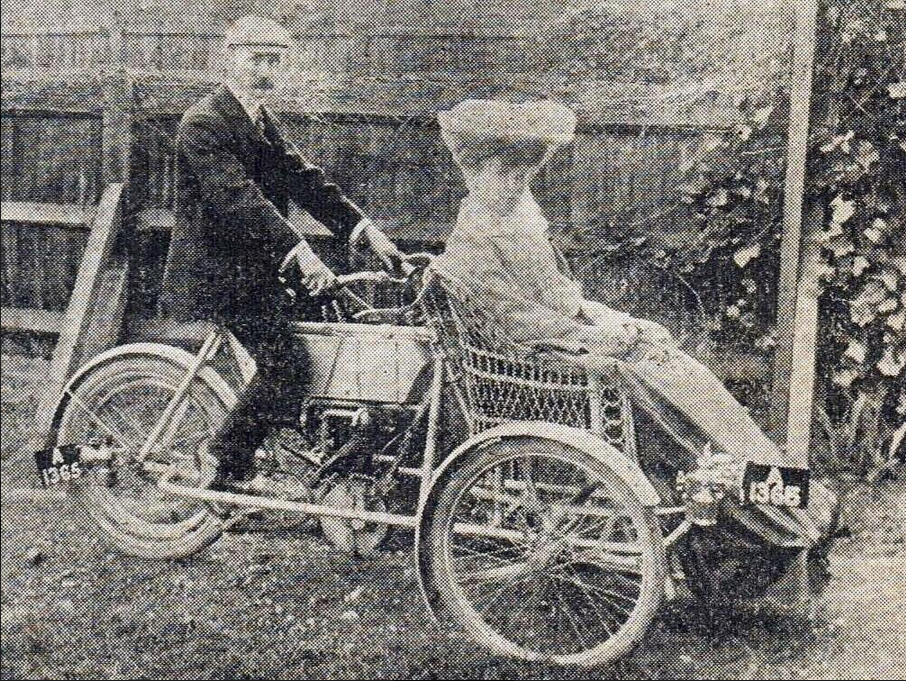
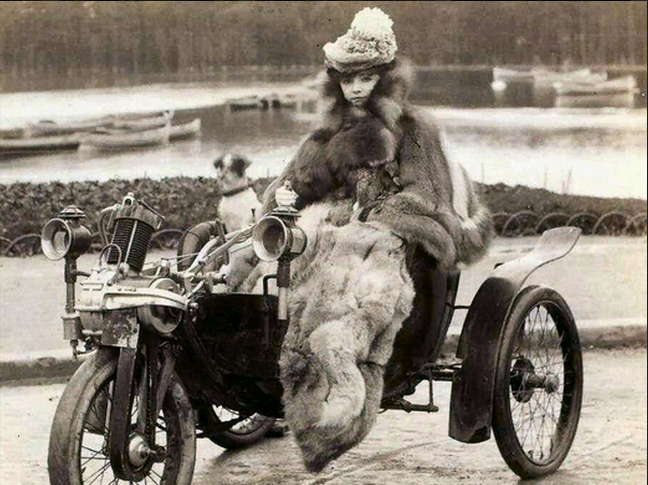
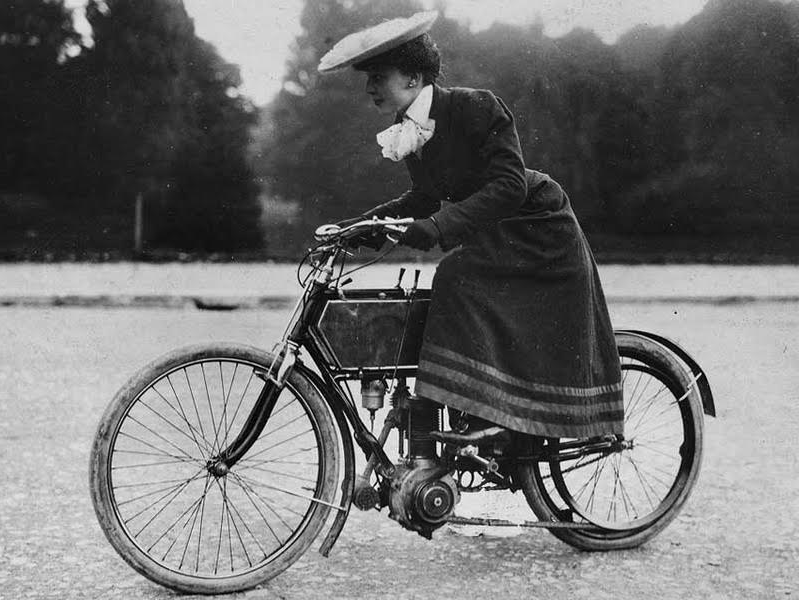
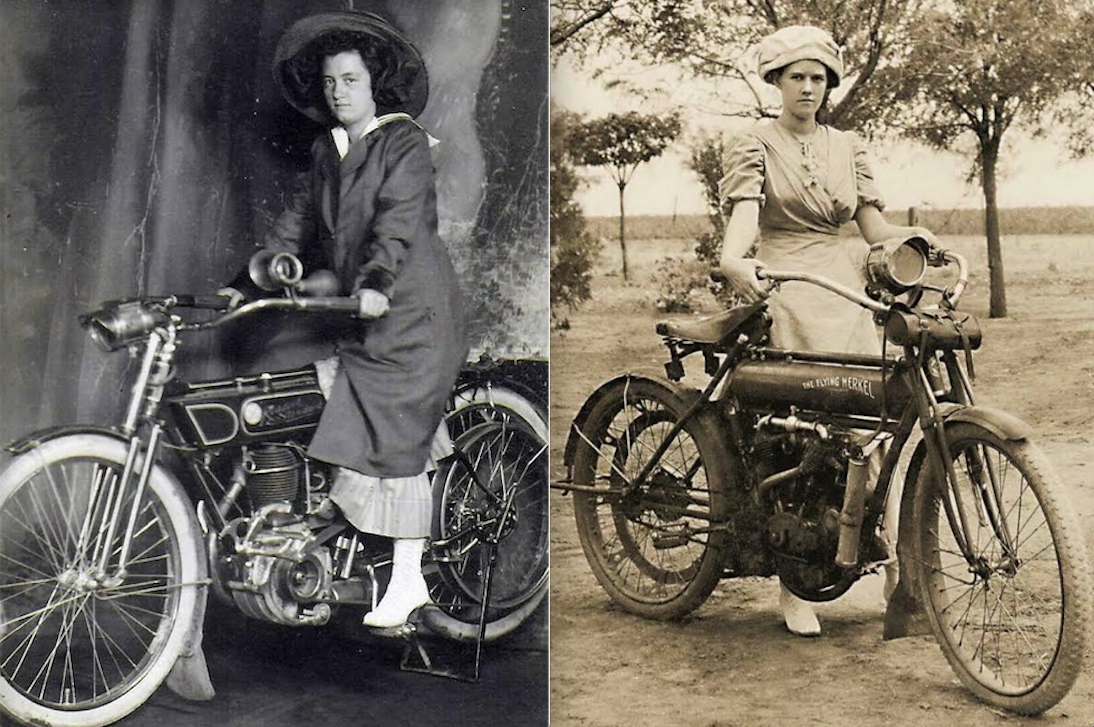
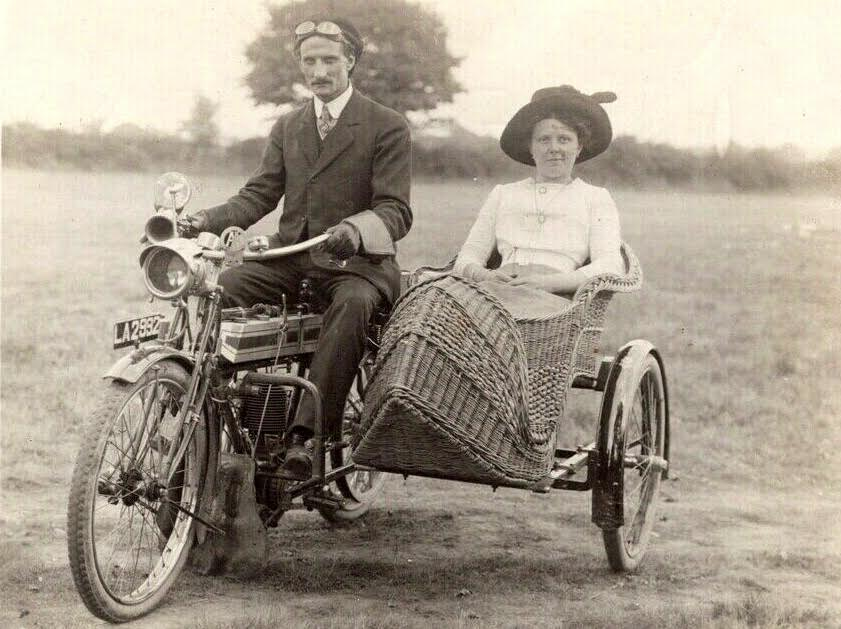
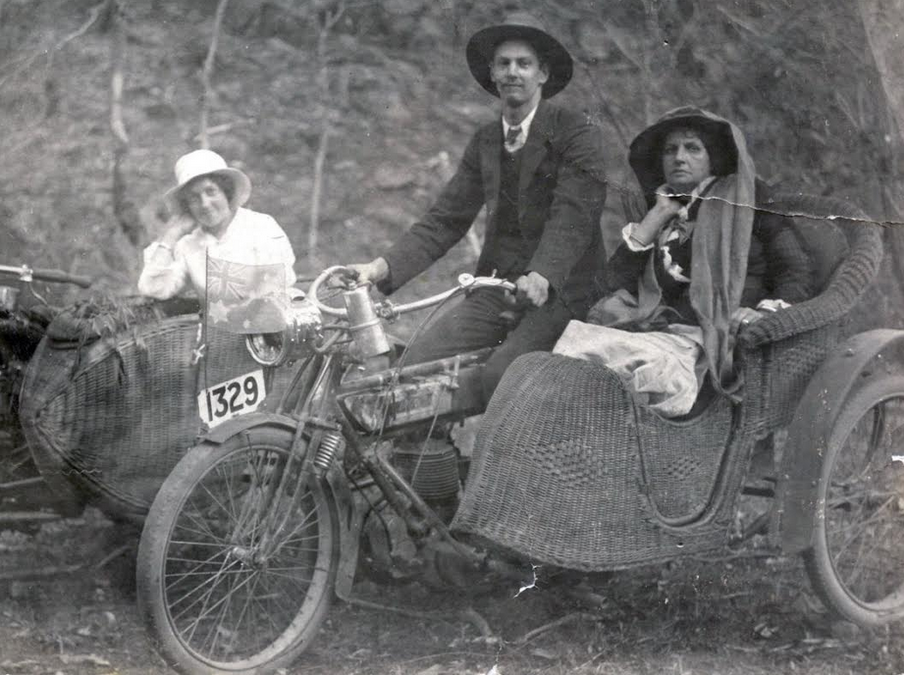
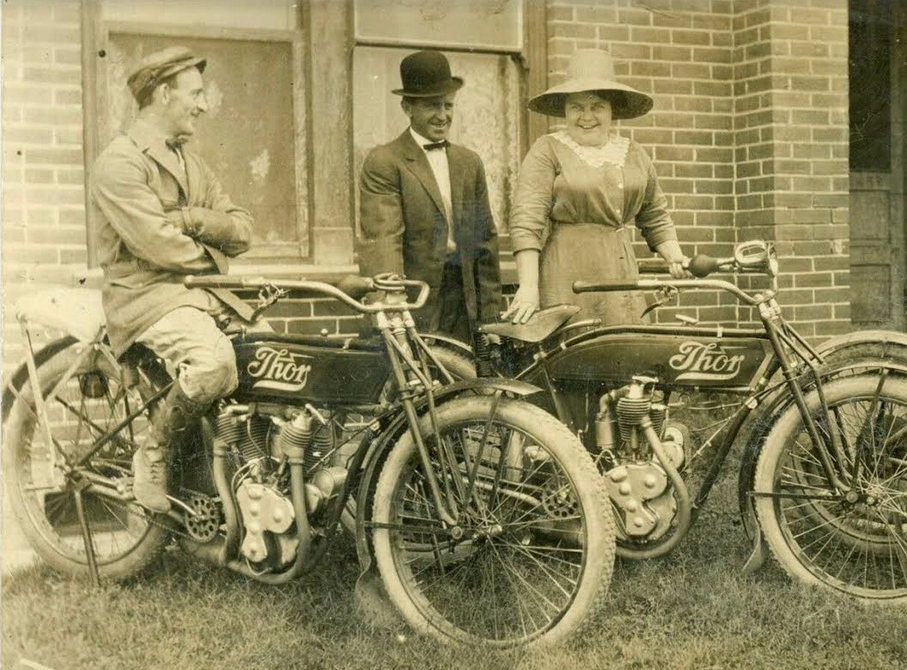
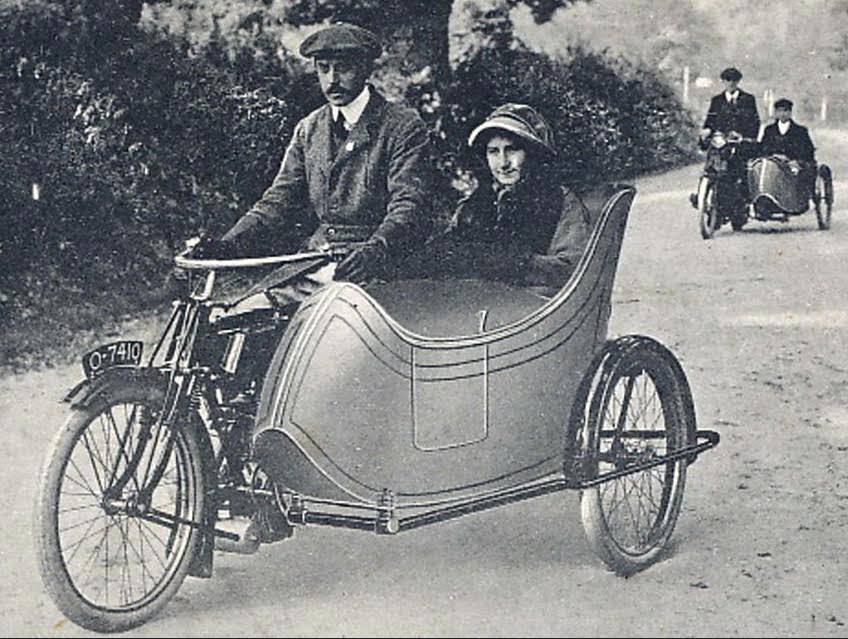

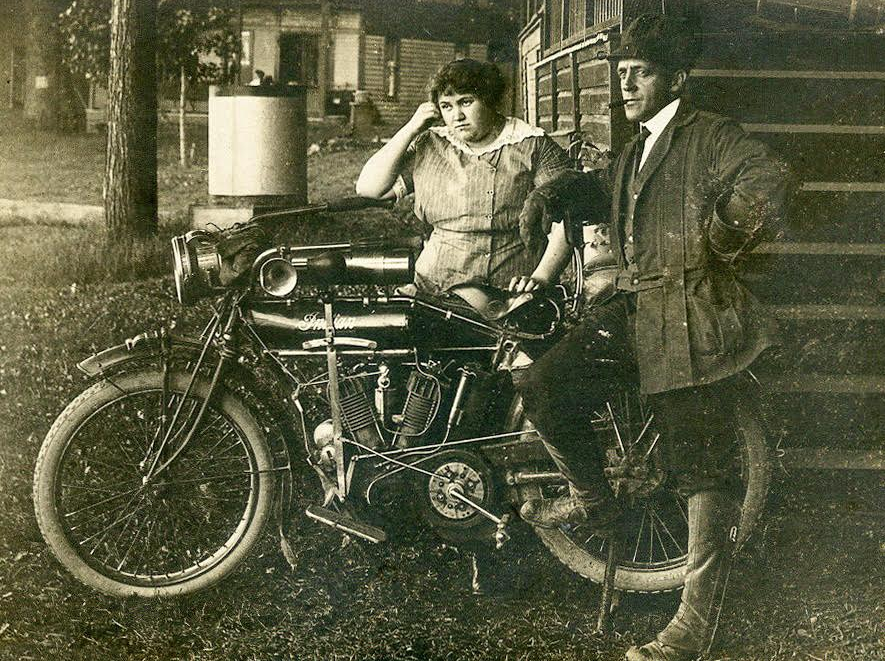
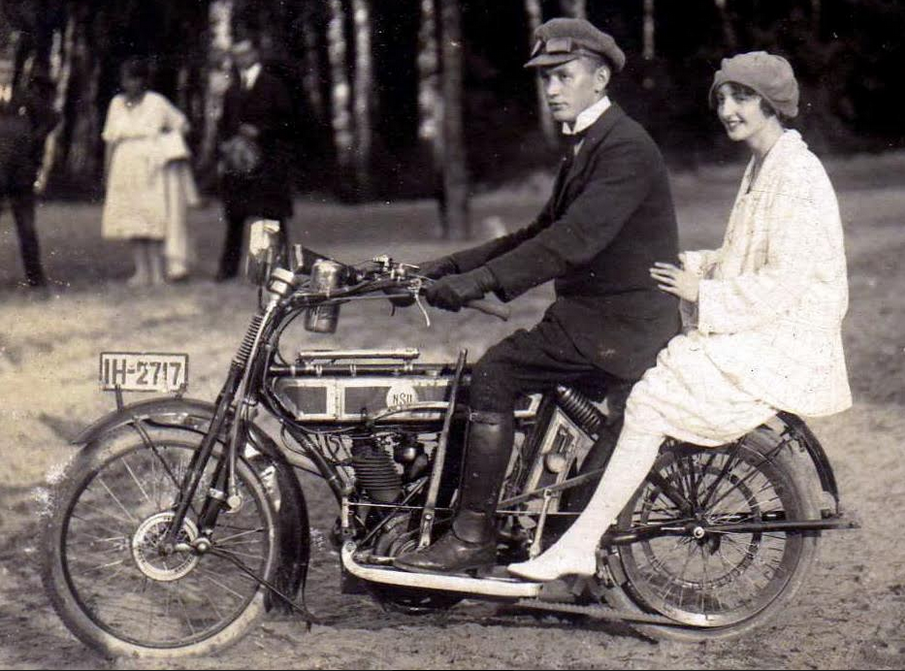
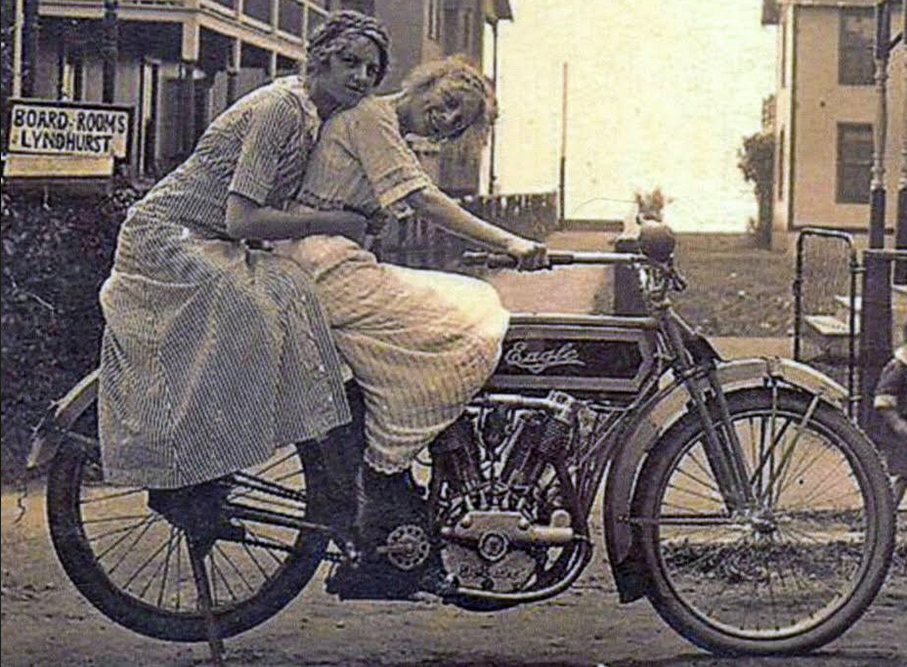
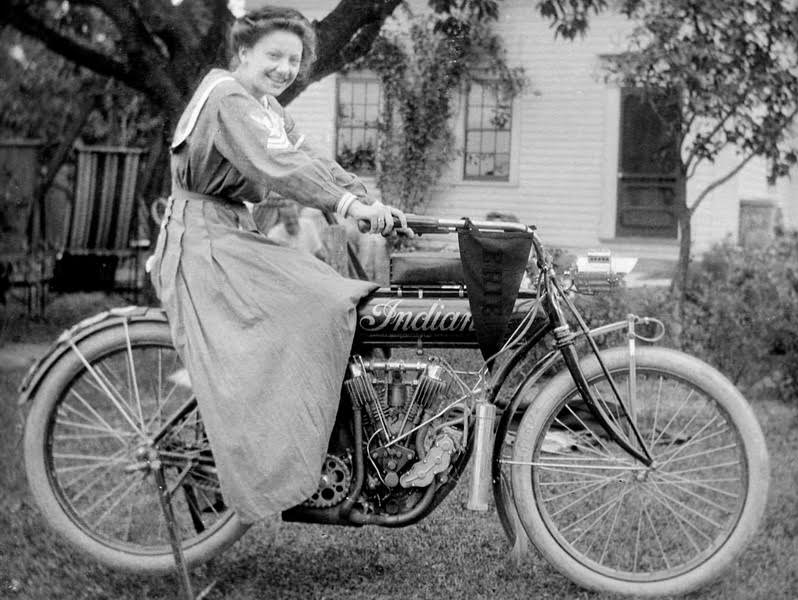
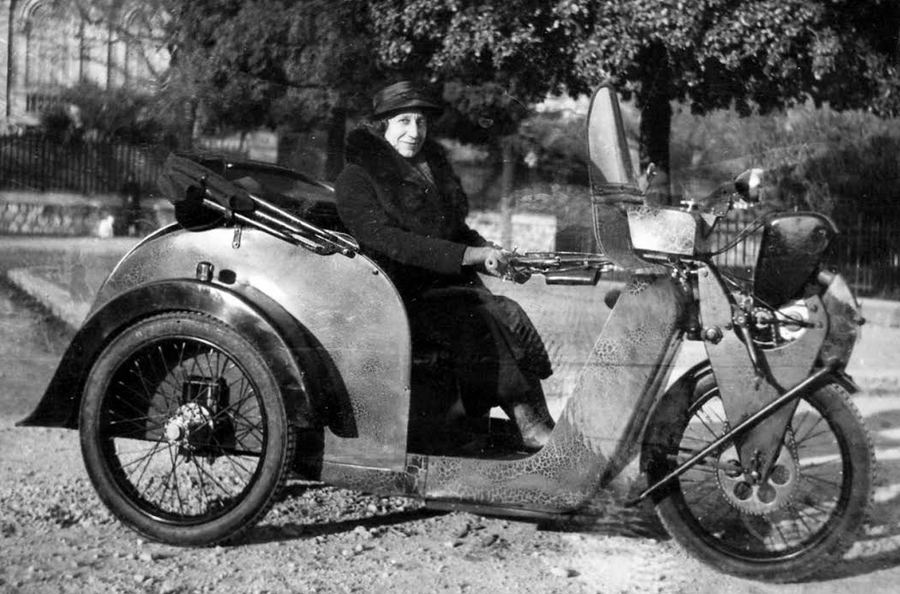
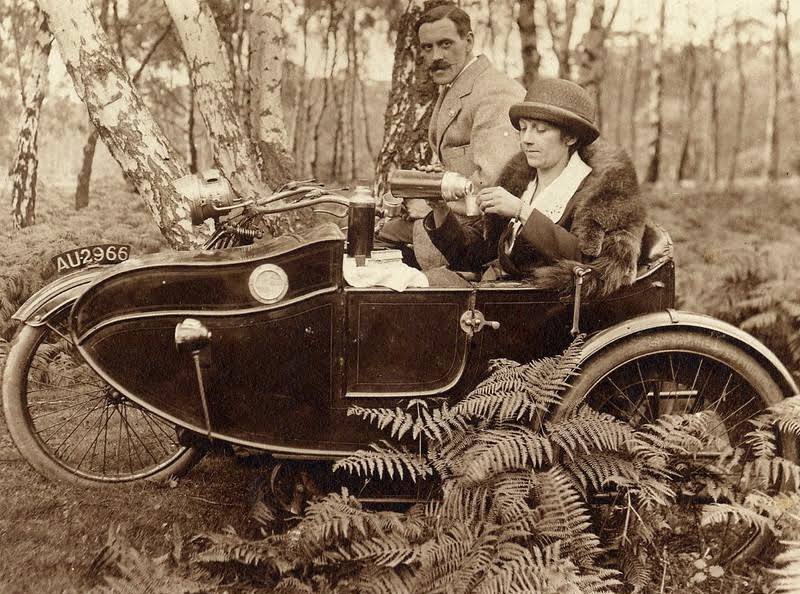
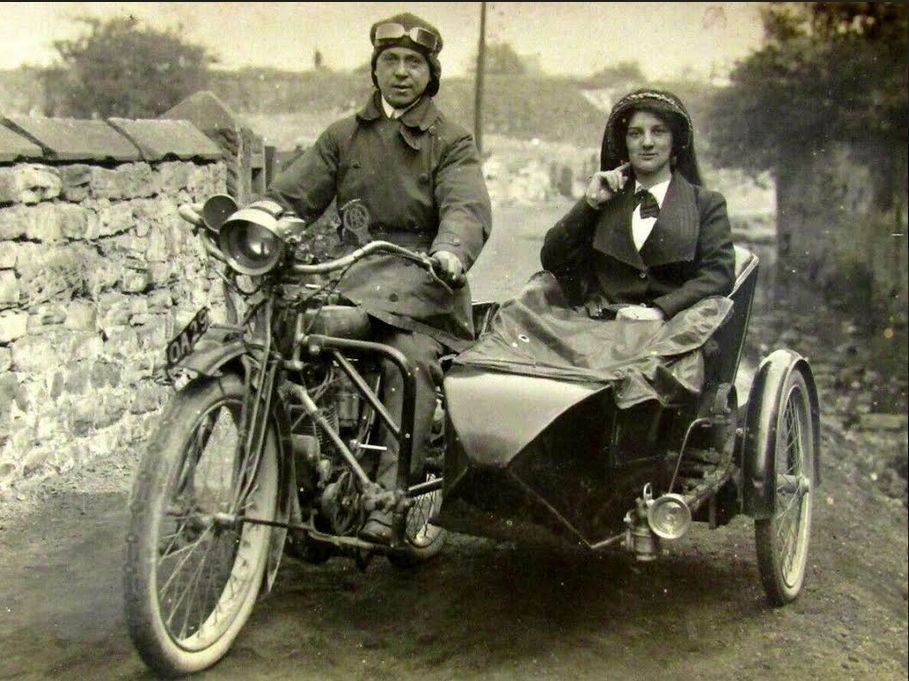
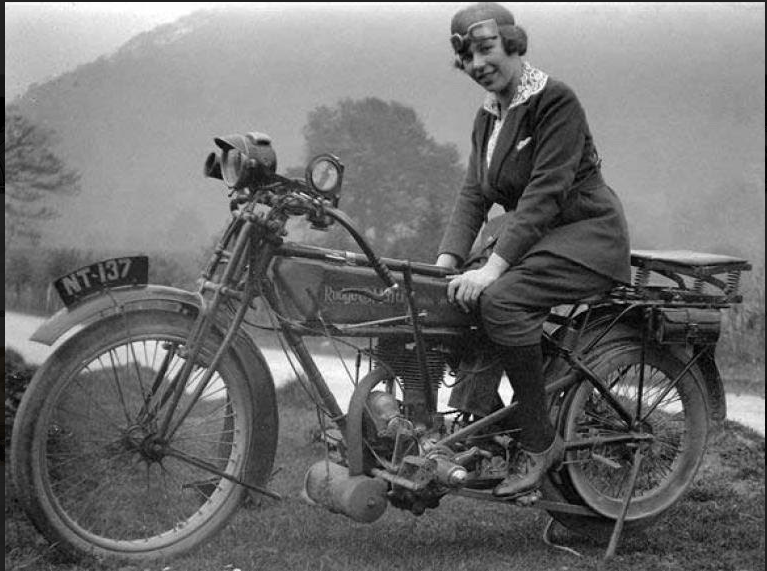
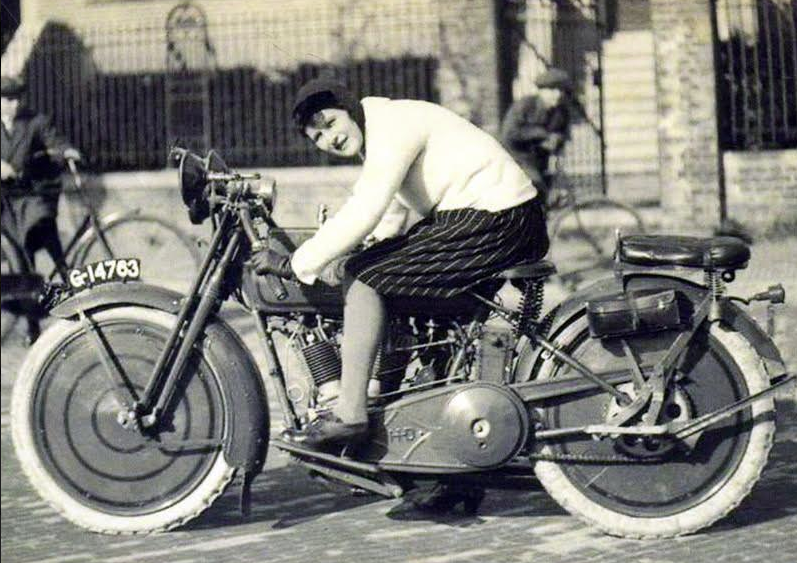
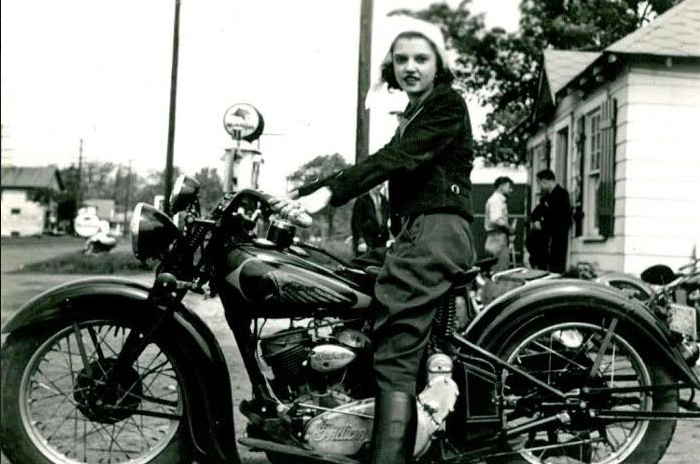
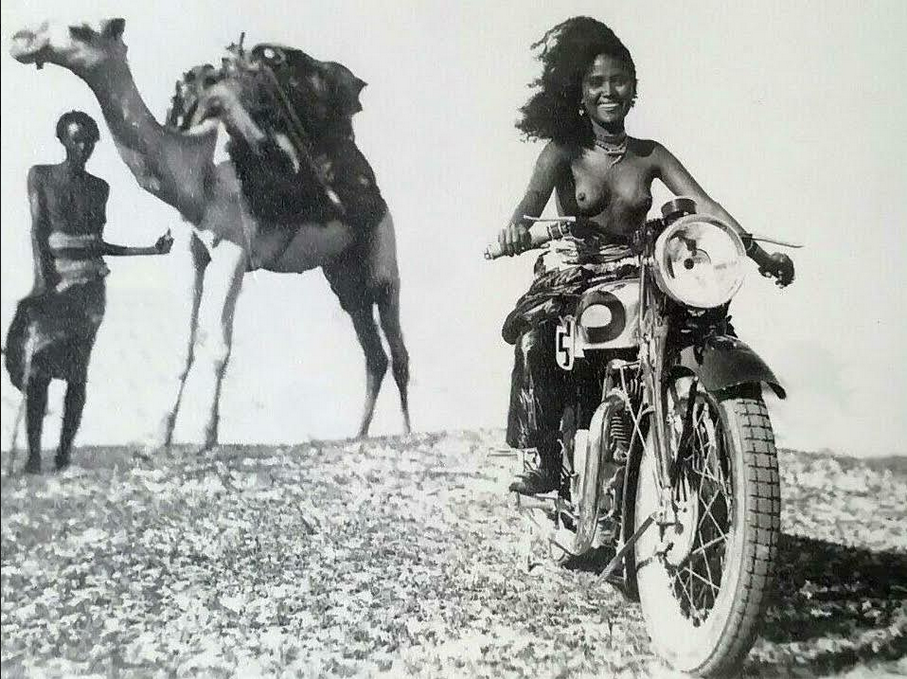
You’ll find further stories and pics of pioneer women riders,as well as an indication of the prejudice they faced, in the 1903 feature entitled Wake Up Ladies—Ed.
